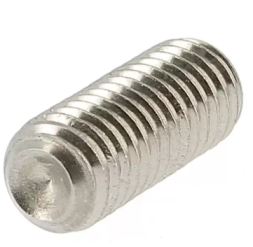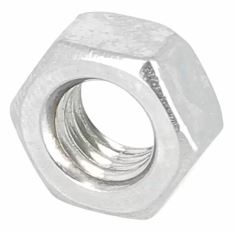BrailleRAP building manual
Necessary tools
Small pliers.
Small cutting pliers.
M3 tap.
8mm drill.
3mm drill.
Hex keys 1.5, 2, 2.5 and 4
Tube wrenches 5.5 and 8.
wood glue
Adhesive Blue tape
Notes on screws
M3 and M5 refer to the diameter in mm of the threaded part of the screws second number corresponds to the length of the screw For example M3-12 means a screw 3mm in diameter and 12mm in length
M5-18 refer to a screw with a hexagonal head (5mm in diameter 18mm in length)
M3-12 grub refer to a grub screw (3mm diameter - 12 mm length)
Notes on nuts
M3 nut or M5 nut refer to standard nuts with a diameter of 3mm or 5mm
M3 NYL nut or M5 NYL nut refer to locking nuts of diameter 3mm or 5mm
Woodbox assembling
Material:
FACE (5mm laser cut plywood).
BACK () 5mm laser cut plywood
BOTTOM (5mm laser cut plywood).
LEFT_SIDE (5mm laser cut plywood).
RIGHT_SIDE (5mm laser cut plywood).
wood glue
Adhesive Blue tape
Prepare the 5 elements: FACE, BACK, LEFT_SIDE, RIGHT_SIDE and BOTTOM.
Attention
identify the position of the sides (right and left) and the bottom. Use the holes to orient the parts as shown in the figure

Glue the notches, assemble the 5 parts and hold them in place with painter’s tape the drying time recommended by the manufacturer.

Door blockers bonding
Material:
Assembled wood box.
4 wooden discs recovered from the laser cutting of the lid.
wood glue
Glue the 4 wooden discs on the back cover inside the crate. These discs will hold the access hatch inside the machine.
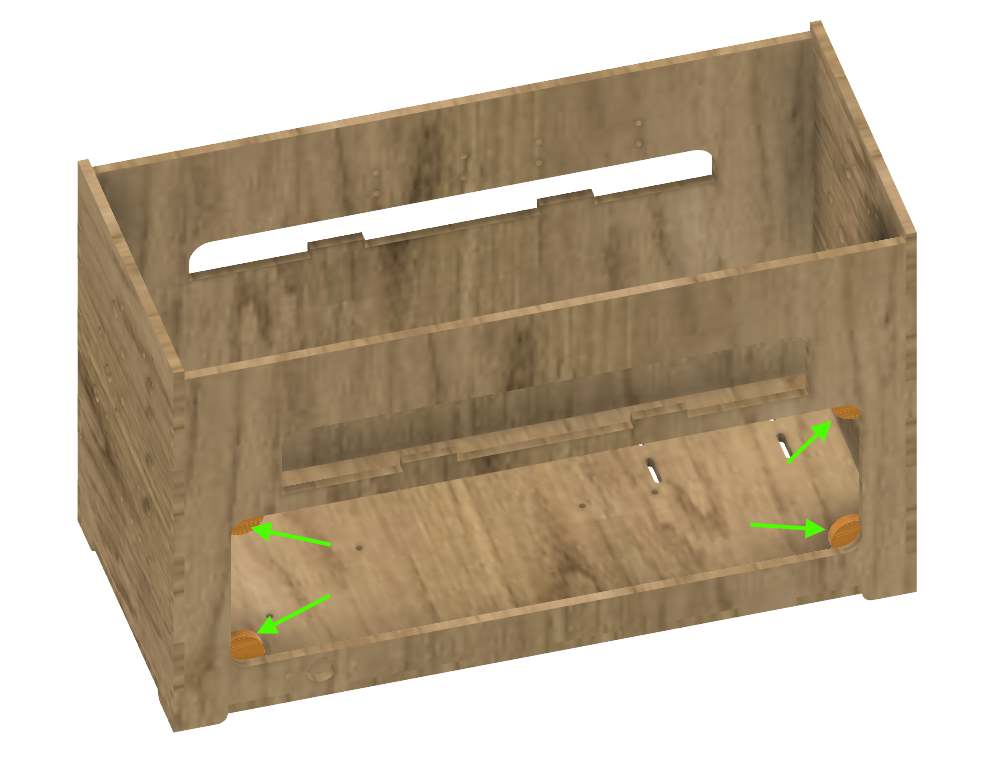
Bonding of the paper tray
- Material:
Upper paper support
Lower paper support
wood glue
Collets
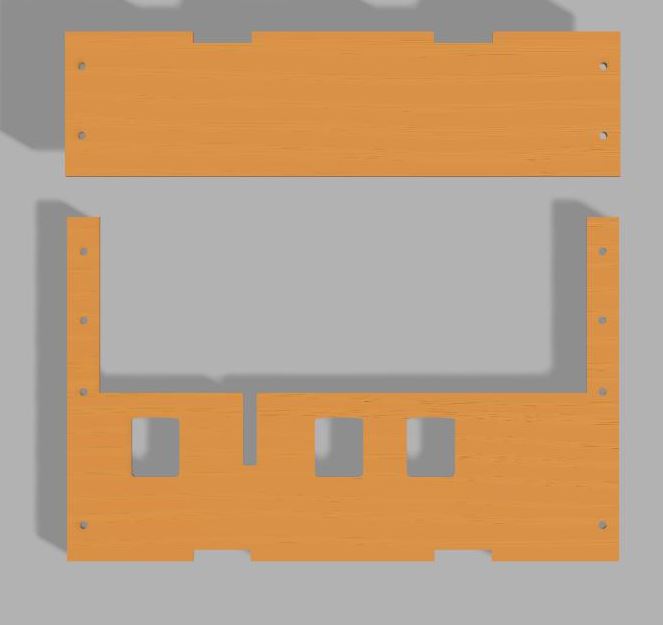
Glue the lower support under the upper support.
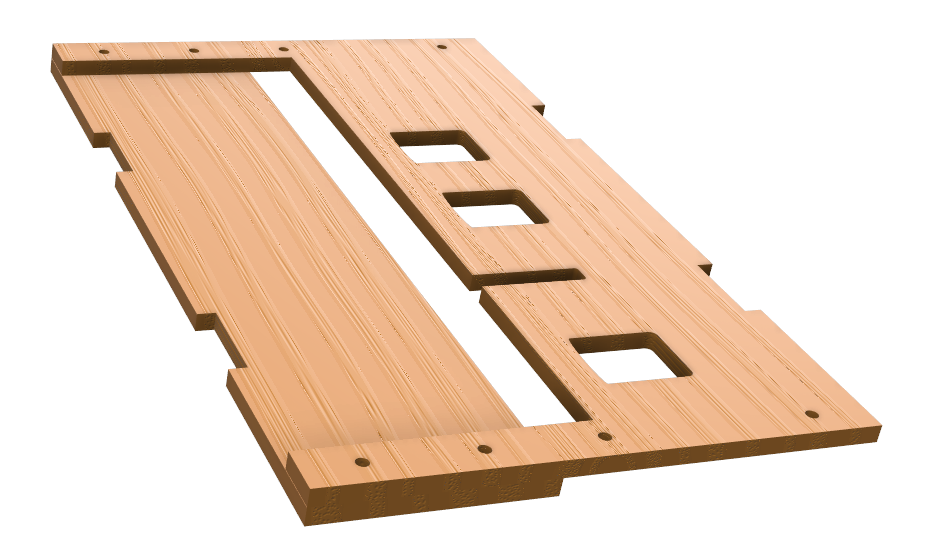
Attention
the 2 parts must be perfectly aligned. Place screws in drillings to properly align the parts. There must not be any of space between the two pieces (where the sheet of paper could come jam). Tighten the parts well against each other with clamps
Prepare the Braille stylus
Equipment:
1 Whetstone
1 grub screw M3-16 butt end
File the edge of the nipple to obtain a profile approaching that illustrated.

X Motor prepare
Equipment:
3D printed parts : XMOTOR_support2 ou XMOTOR_support2_1
1 Nema 17 motor
4 screw M3-8
2 NYLSTOP M3
2 M3-14 screws
Insert 2 NYL M3 nuts in the printed part XMOTOR_support2_1.
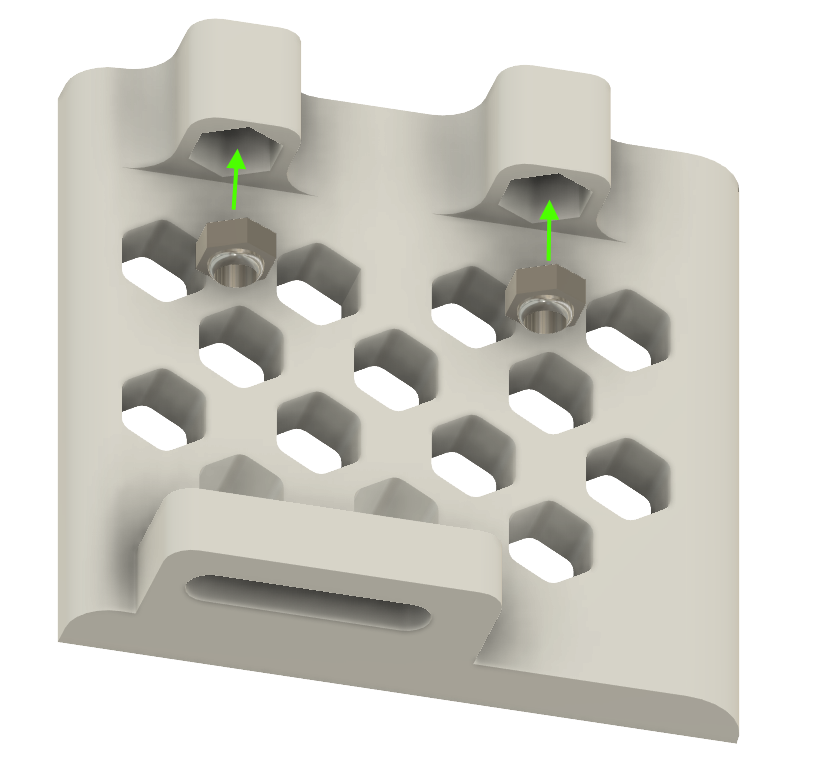
Fix the two parts printed XMOTOR_support2_1 and XMOTOR_support2 with two M3-14 screws.
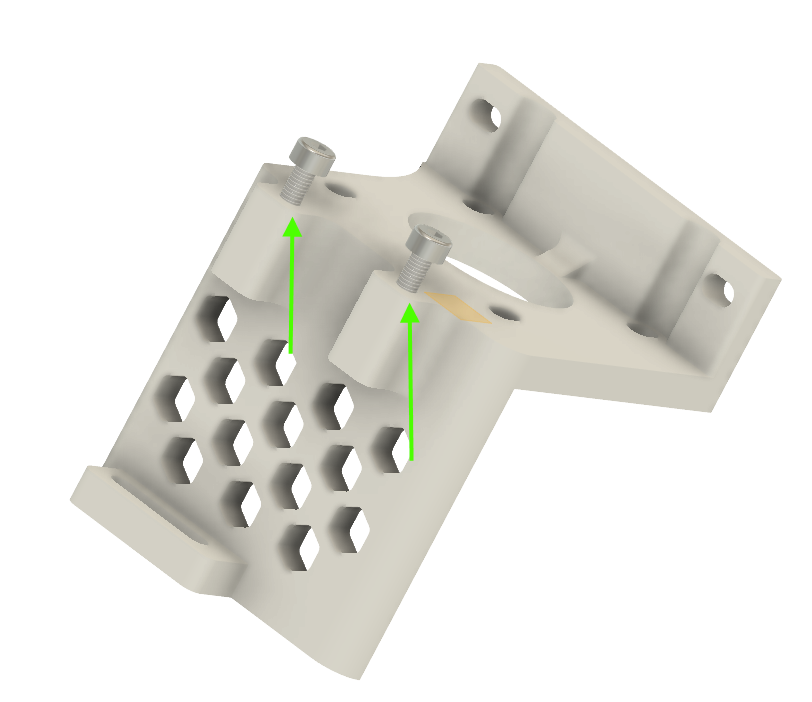
Fix the motor in its support with 4 M3-8 screws. Do not tighten the screws, the motor must be free to move, it will be tighten later.
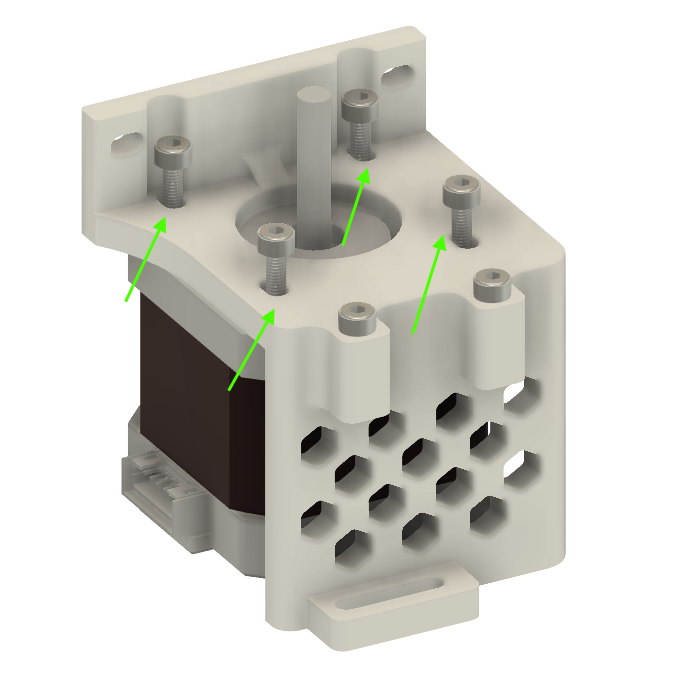
Note
Pay attention to the orientation of the motor connector!
Y Motor prepare
Equipment:
3D Printed parts : YMOTOR_support2_200_1, YMOTOR_support2_200_2, YMOTOR_support2_200
1 Nema 17 motor
1 pulley GT2 20 teeth 5mm bore
4 screw M3-8
2 screws M3-12
Screw the pulley onto the motor shaft, making sure that at least one of the two screws is in front of the flat part of the motor shaft and that the teeth of the pulley are facing towards the motor.

Tap both sides of the central part of the support(YMOTOR_support2_200_2)
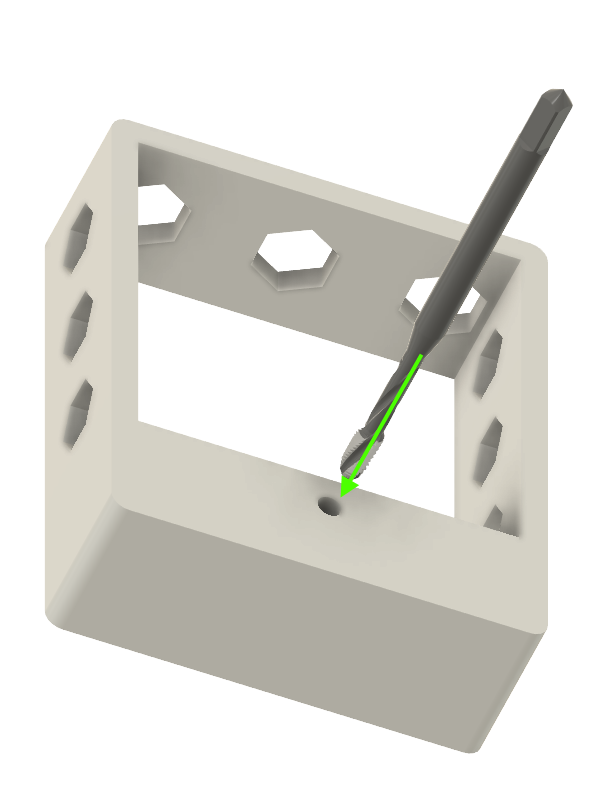

Fix the two parts printed YMOTOR_support2_200_2 and YMOTOR_support2_200_1 with an M3-12 screws.
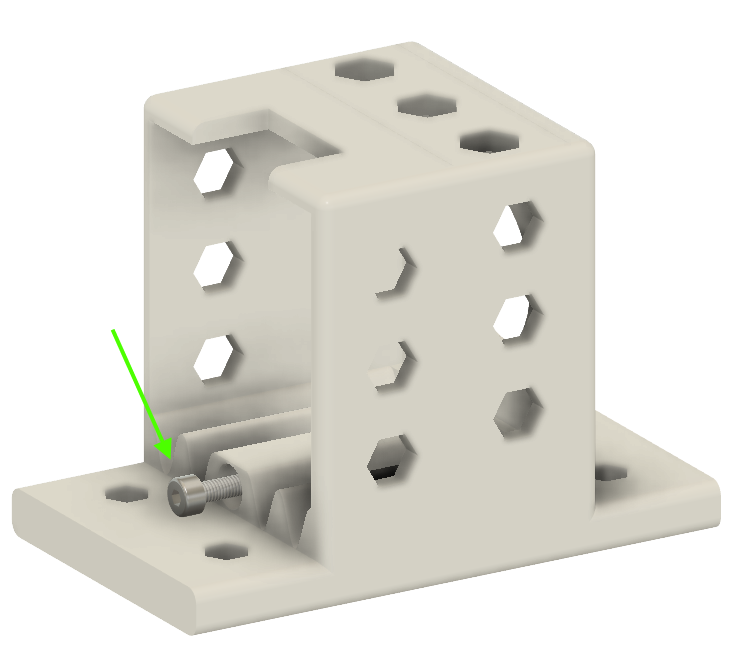
Fix the part YMOTOR_support2_200 on the previous set with a M3-12 screws.
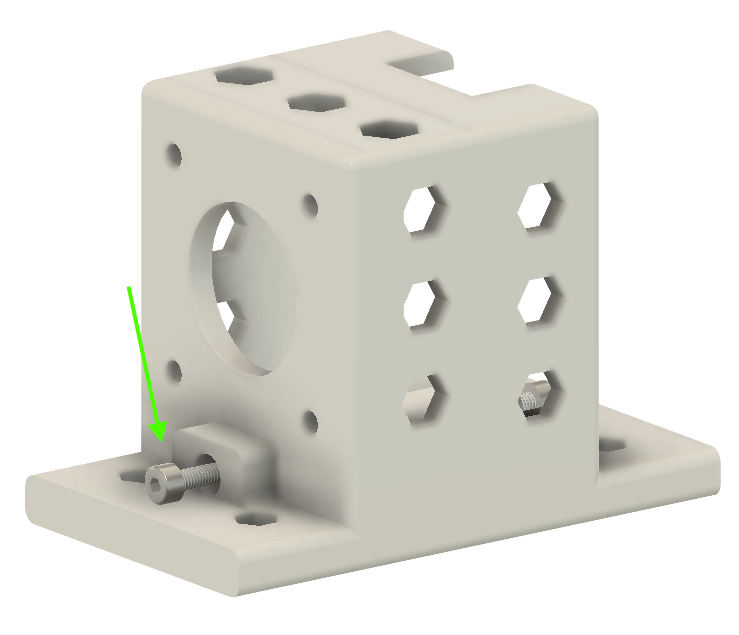
Mount the motor on its support with the 4 screws M3-8 making sure that the connector is in the position corresponding to the illustration.

Insert the 4 NYL M3 nuts into the engine mount. Hold them in place with a small piece of painter’s tape.
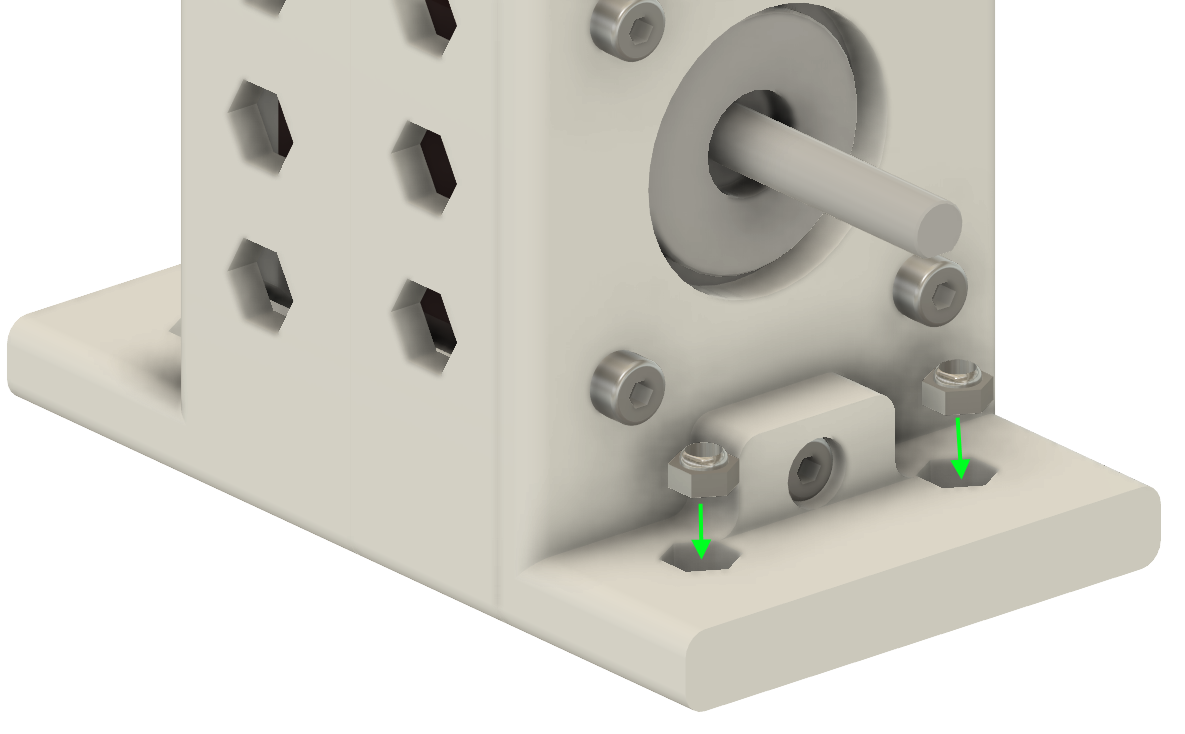
Axis supports Preparation
3D printed part : BOTTOM_AXIS_left
3D printed parts : TOP_AXIS_left
3D printed parts : TOP_AXIS_right
1 8mm drill
8 M3 nuts
8 M3-12 grub screw
Attention
Depending on the print quality of the plastic parts, make sure that the 8mm bars can slide easily into their housings. If necessary, drill the hole with a drill of 8.
The 3 parts to be assembled are as follows

For each of the 3 pieces, insert an M3 nut into the rectangular holes. Tighten the M3-12 grub screws.
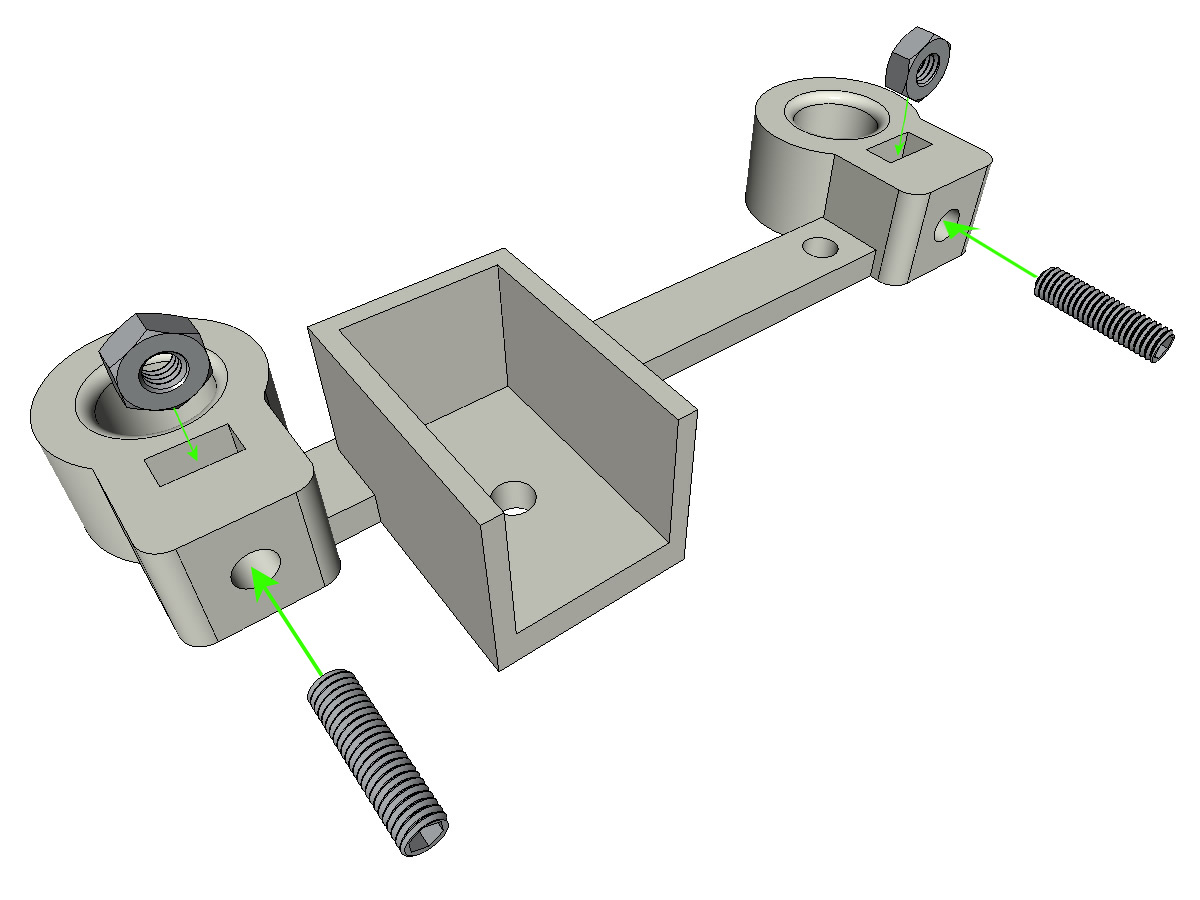
The end of the screw must not protrude in the passage of Ø 8mm bars.
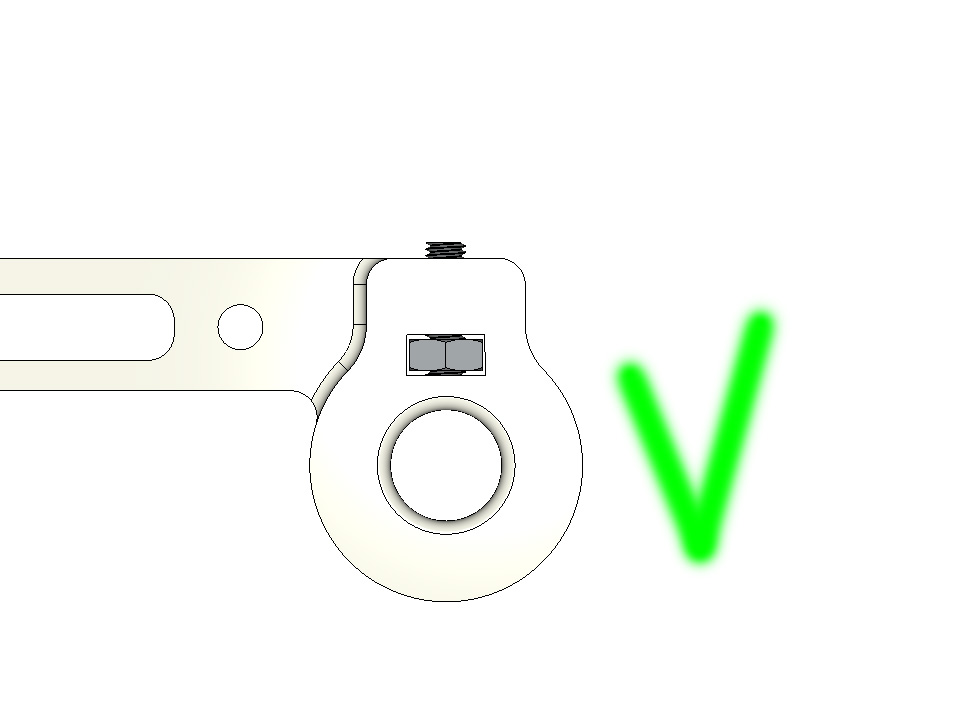

Limit switch X prepare
Equipment:
3D printed parts : SWITCH_X_support
1 wired limit switch (see wiring of the limit switches)
1 grub screw M3-12
1 M3 nuts
2 M2.5-14 screw
2 M2.5 nuts
Insert an M3 nut and screw in a M3-12 grub screw.
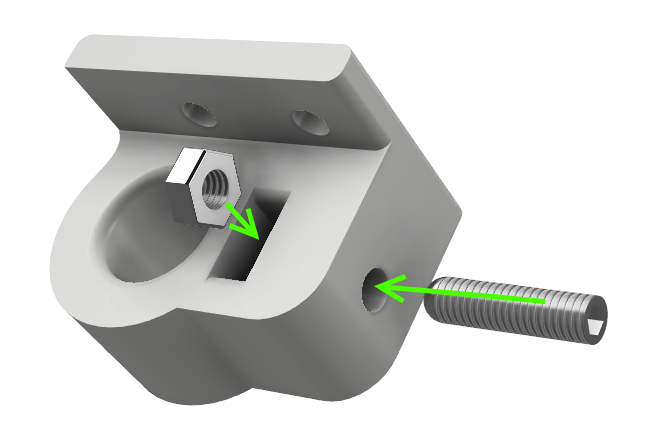
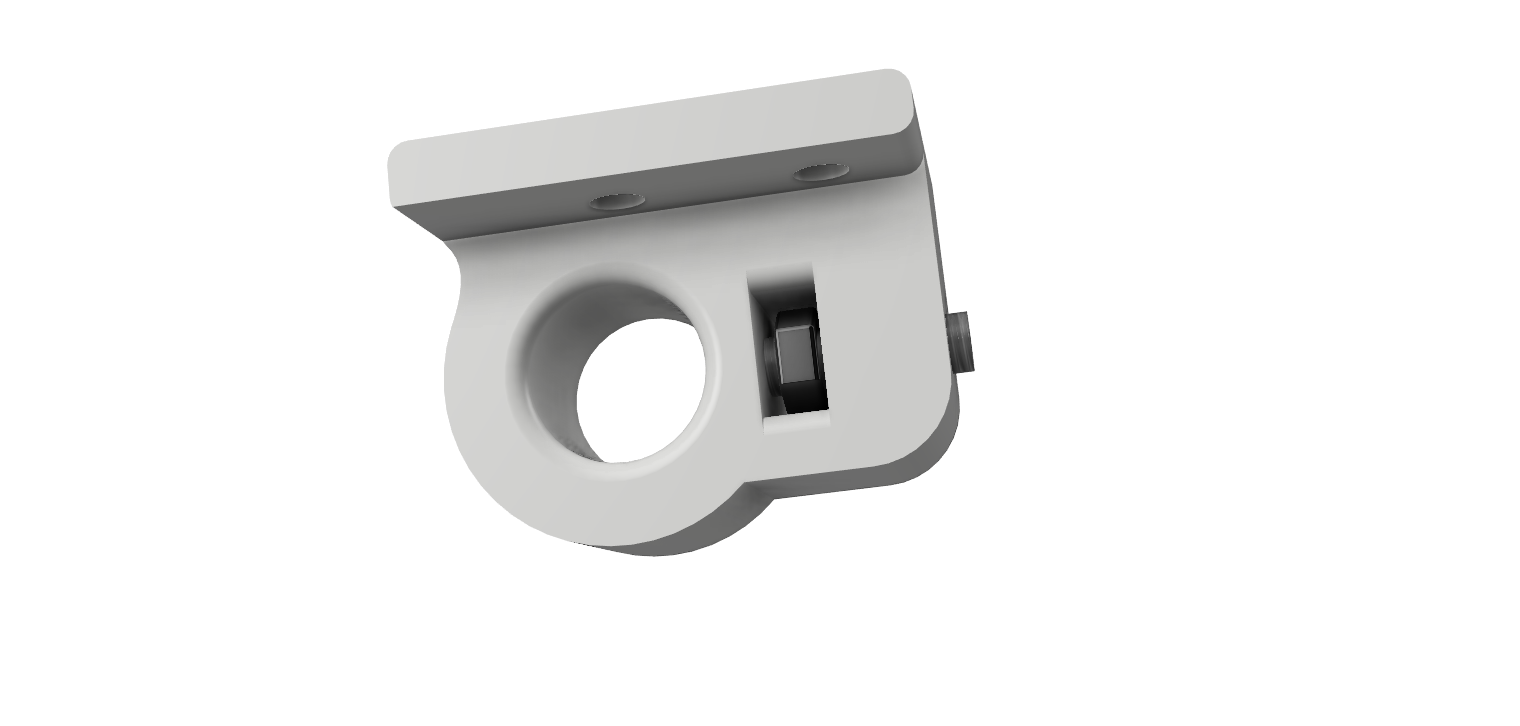
Screw the limit switch to its support (SWITCH_X_support) using M2.5-14 screws and M2.5 nuts.
Note
The limit switch is shown not wired but must be wired before installation.
Note
Pay attention to the direction of the 2.5 screws. The head of the screw must be under the microswitch to allow passage of the linear axis.
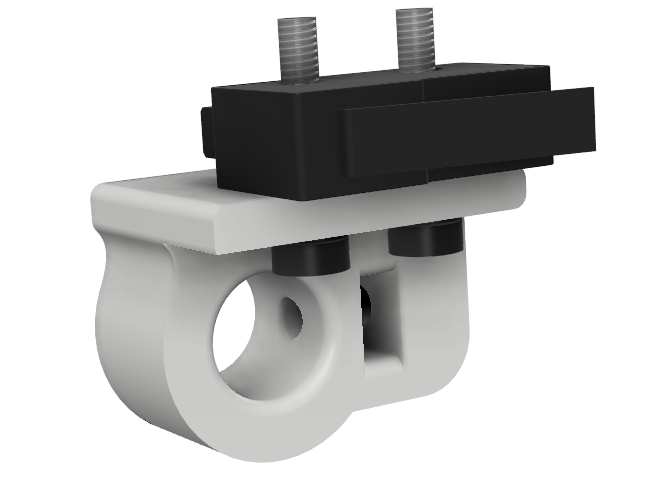
Note
On utilisera de préférence un microswitch cablé dans l’alignement.
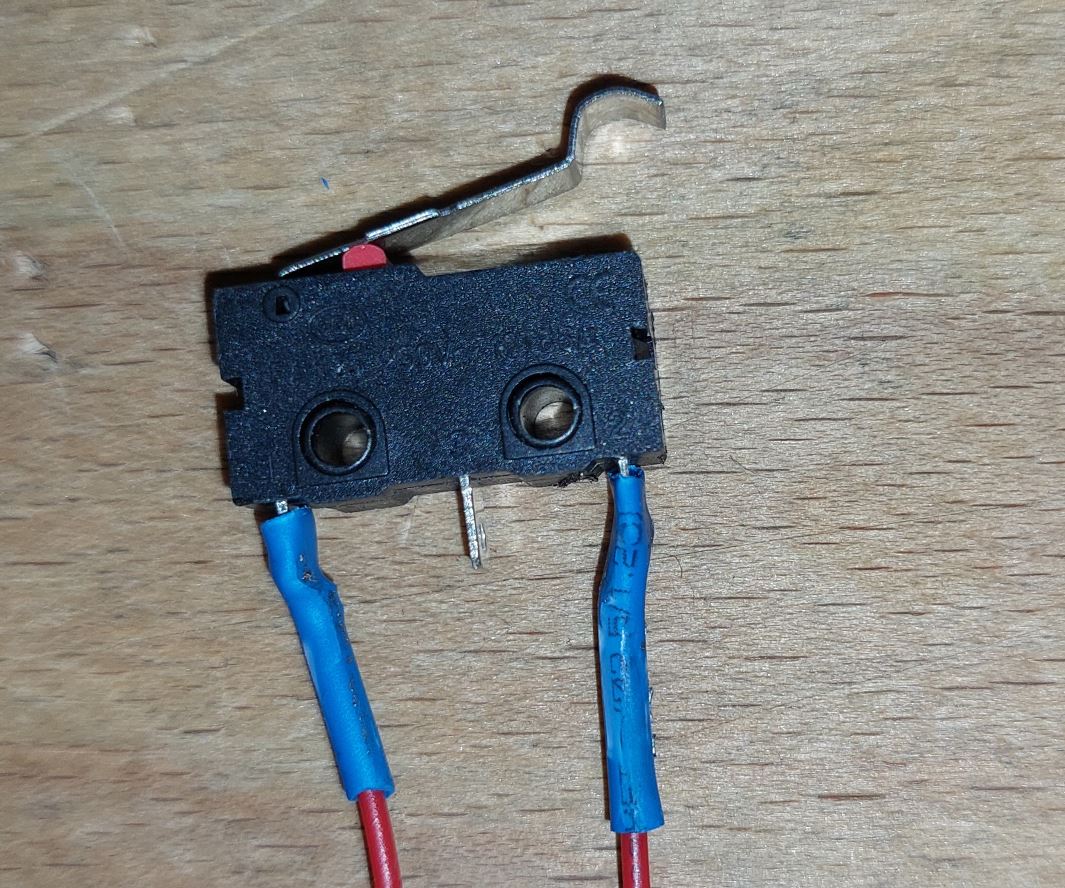
Electromagnet preparation
Equipment:
1 electromagnet
1 spacer 18mm
1 set screw M3-12 stylus punched (see Preparing the Braille stylus)
1 M3 nuts
1 M3 medium washer
Screw the spacer all the way onto the electromagnet.

Tighten the M3-12 screw with the Braille stylus punched out, allowing it to extend ± 6mm beyond the spacer.
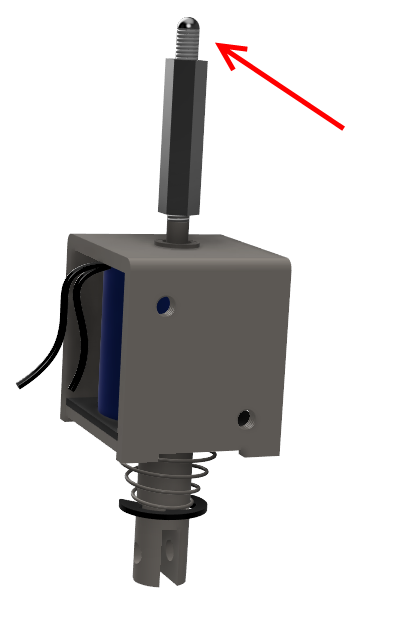
Electro magnet assembly.
Pre-assembled electromagnet assembly (see Preparing the electromagnet)
3D printed parts : ELECTRO_MAGNET_housing
2 screw M3-8
Fix the electromagnet on its support with the 2 screws M3-8.
Attention
Observe the exit side of the wires.
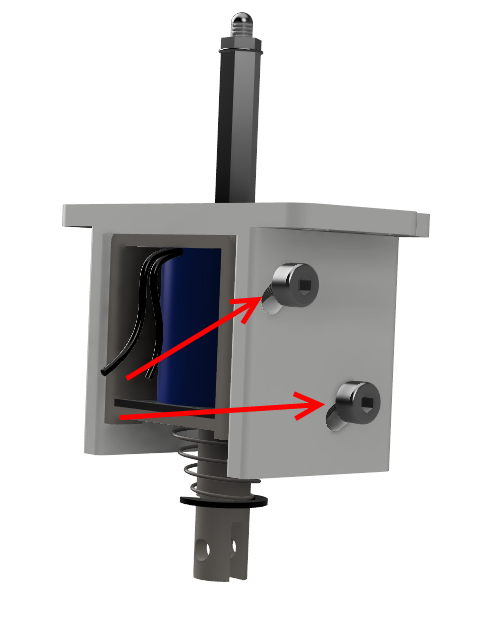
Note
Be sure to carefully align the edge of the plastic part and the edge of the electro magnet

Bottom truck prepare (step 1)
Equipment:
Electromagnet assembled in its support
3D printed part : BOTTOM_trolley
3D printed parts : ELECTRO_MAGNET_guide
3 IGUS linear bearings
6 clamps 2.5 x 160
4 NYL M3 nuts
2 M3-18 screw
2 M3-20 screw
Introduce the 3 IGUS on the BOTTOM_trolley support. Fix them with clamps
Attention
Lock the IGUS in the groove. Do not overtighten the clamps,they will be adjusted when the carriage is in place on the railslinear

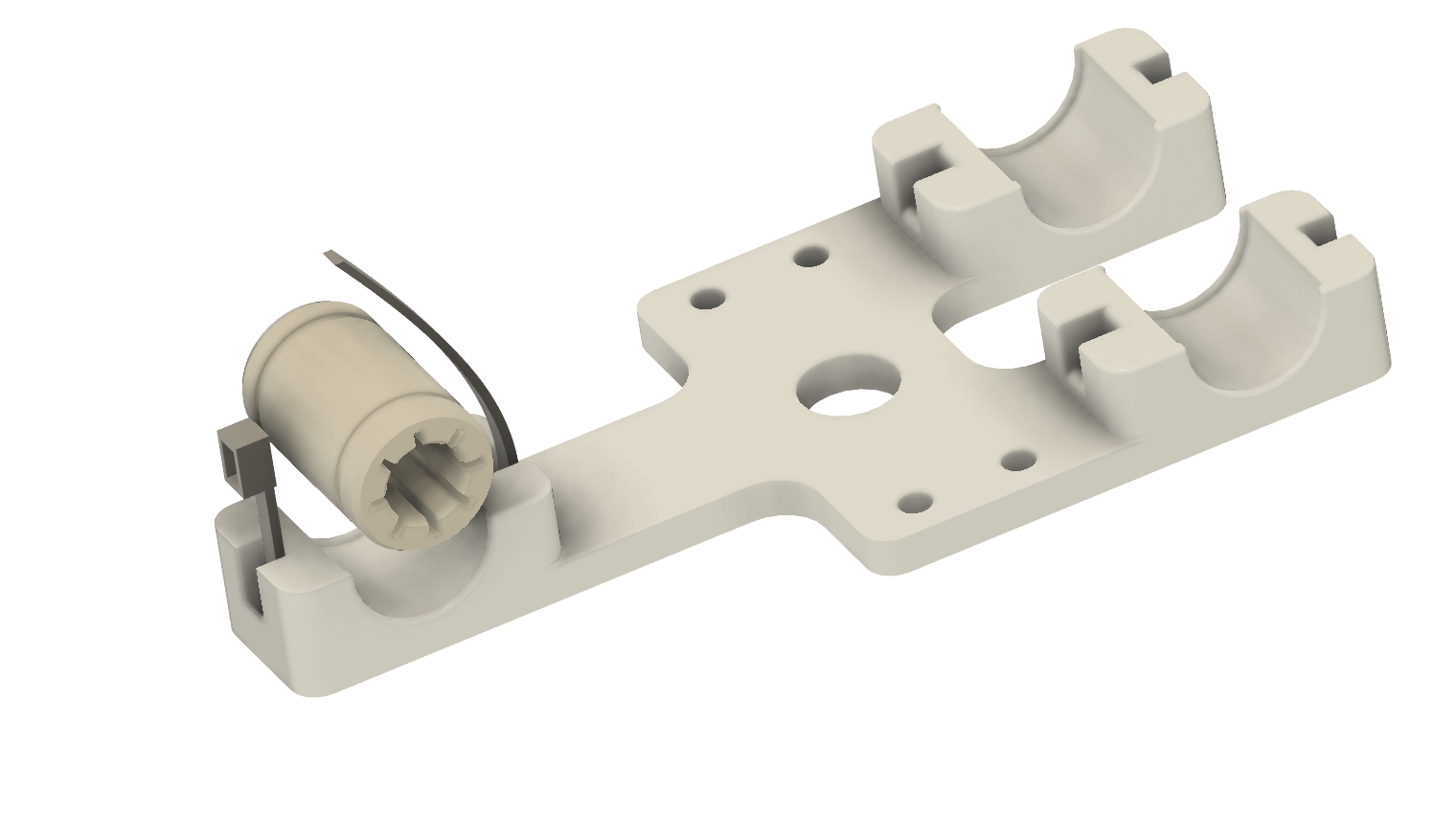
Attention
Respect the position of the clamps. The locking of the clamps must be on the IGUS side and towards the front of the machine.
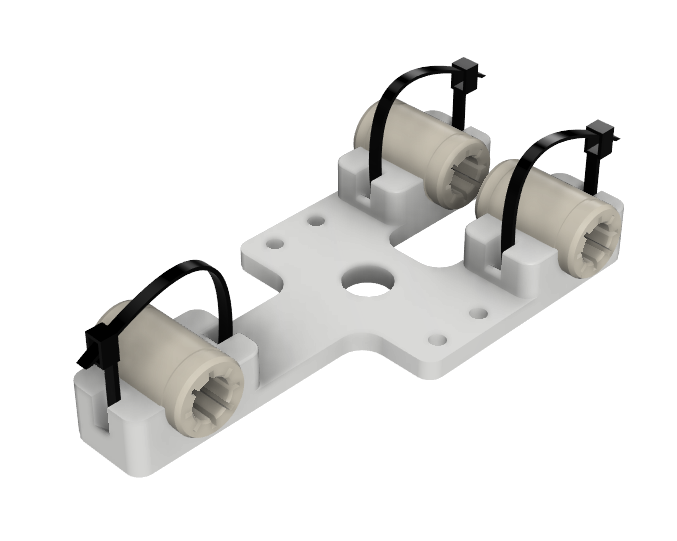
Assemble the electromagnet (previously mounted in its housing) under the BOTTOM_trolley and the ELECTRO_MAGNET_guide with two M3-18 screws and two M3 NYL nuts.
Attention
Depending on the quality of the print, it may be necessary to file the spacer housing. Also note that the body of the electro-magnet must be as perpendicular as possible to the support plate(the axis must be in the middle of the drilling which allows its passage).
Attention
Note that the wires of the electromagnet must come out of the side where there is a single IGUS bearing.
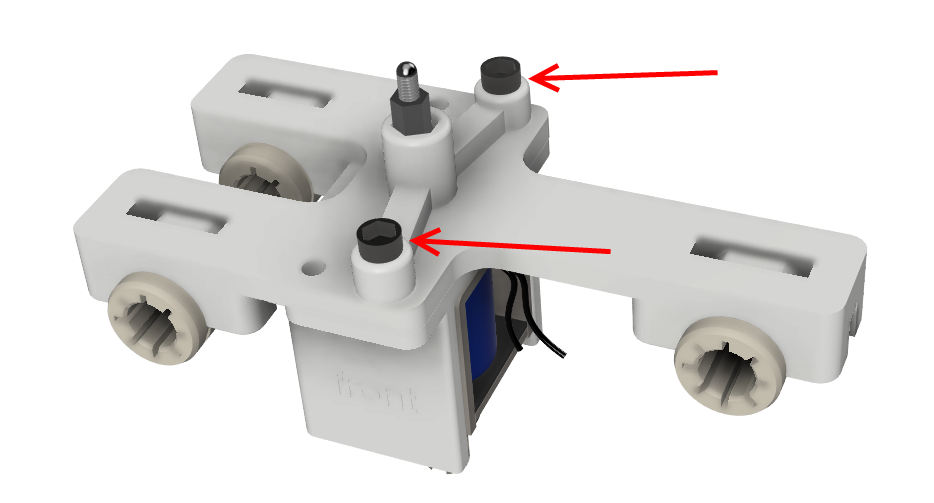
Screw the two M3-20 screws (which will hold the strap) and 2 M3 NYL nuts with the screw head underneath.

Fit a washer and tighten the M3 lock nut, ensuring that the stylus screw does not move into the spacer at the same time. The washer prevents the jam nut from getting caught in the spacer guide.
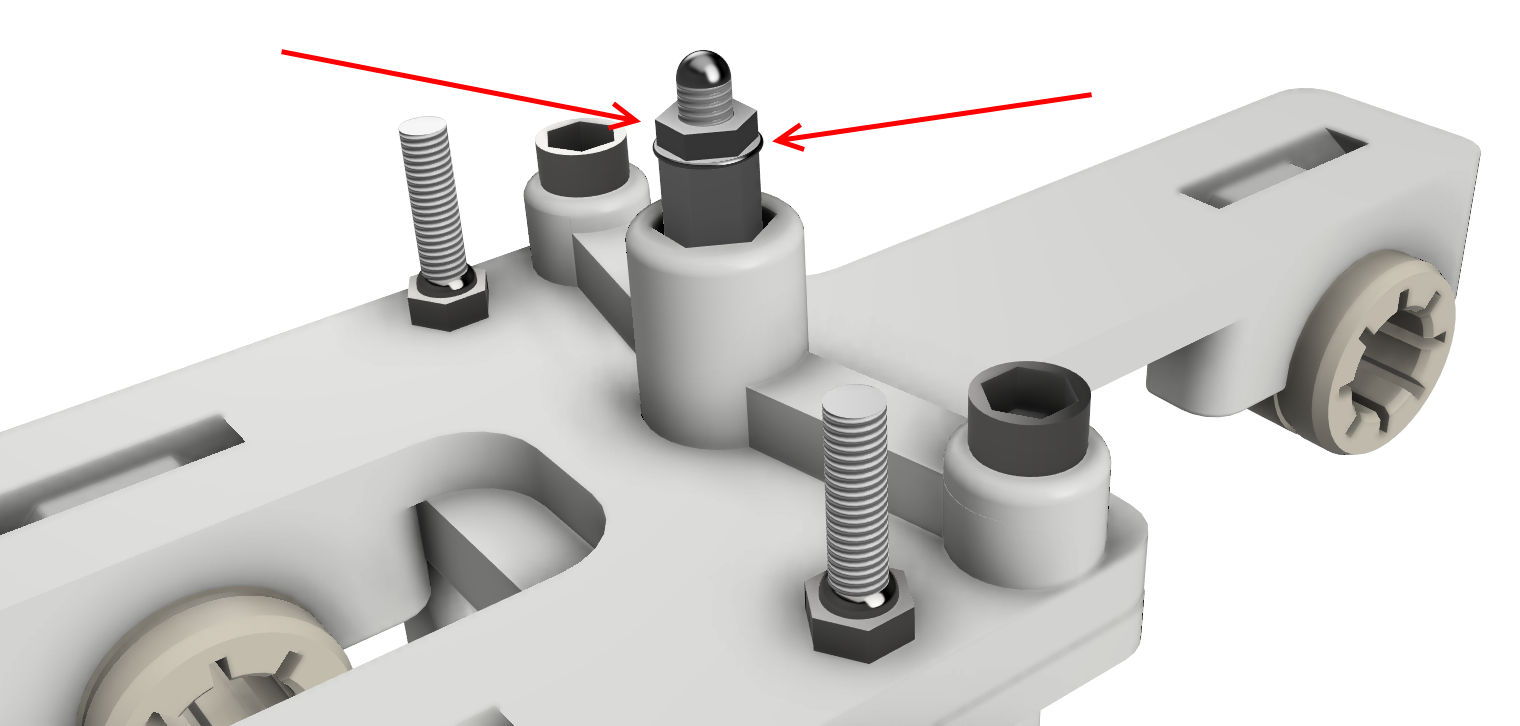
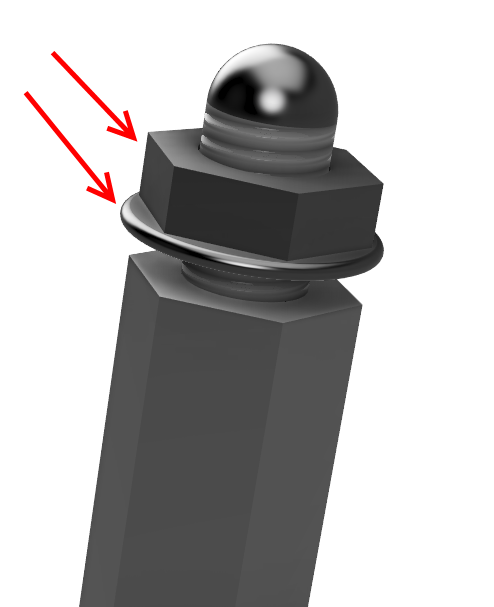
Note
The axis of the electromagnet must be able to move up and down freely without resistance.
Mounting the top cart (step 1)
Equipment:
3D printed parts: TOP_trolley
3D printed parts: FEMALE_shape
M3 tap
1 grub screw M3-30
1 M3 blind nut
2 screws M3-12
2 medium M3 washers
2 M3-20 screw
4 NYL M3 nuts
3 IGUS_housing
6 screws M3-12
6 NYL M3 nuts
Glue the thread of the cap nut and screw the M3-30 screw without head on the side WITHOUT hex hole.
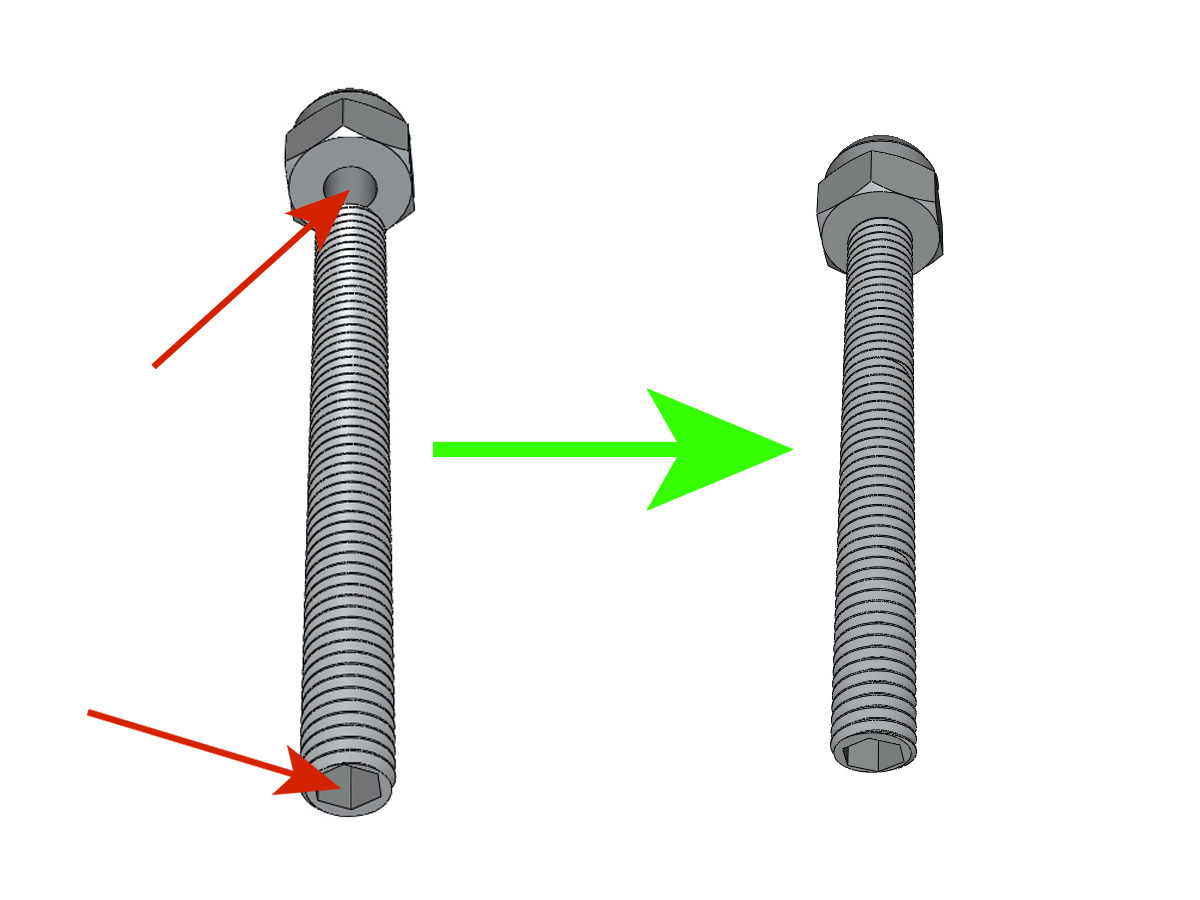
Tape the FEMALE_shape 2/3 from the top.

Tighten the M3-30 screw / blind nut assembly to allow it to exceed ± 0.5mm.
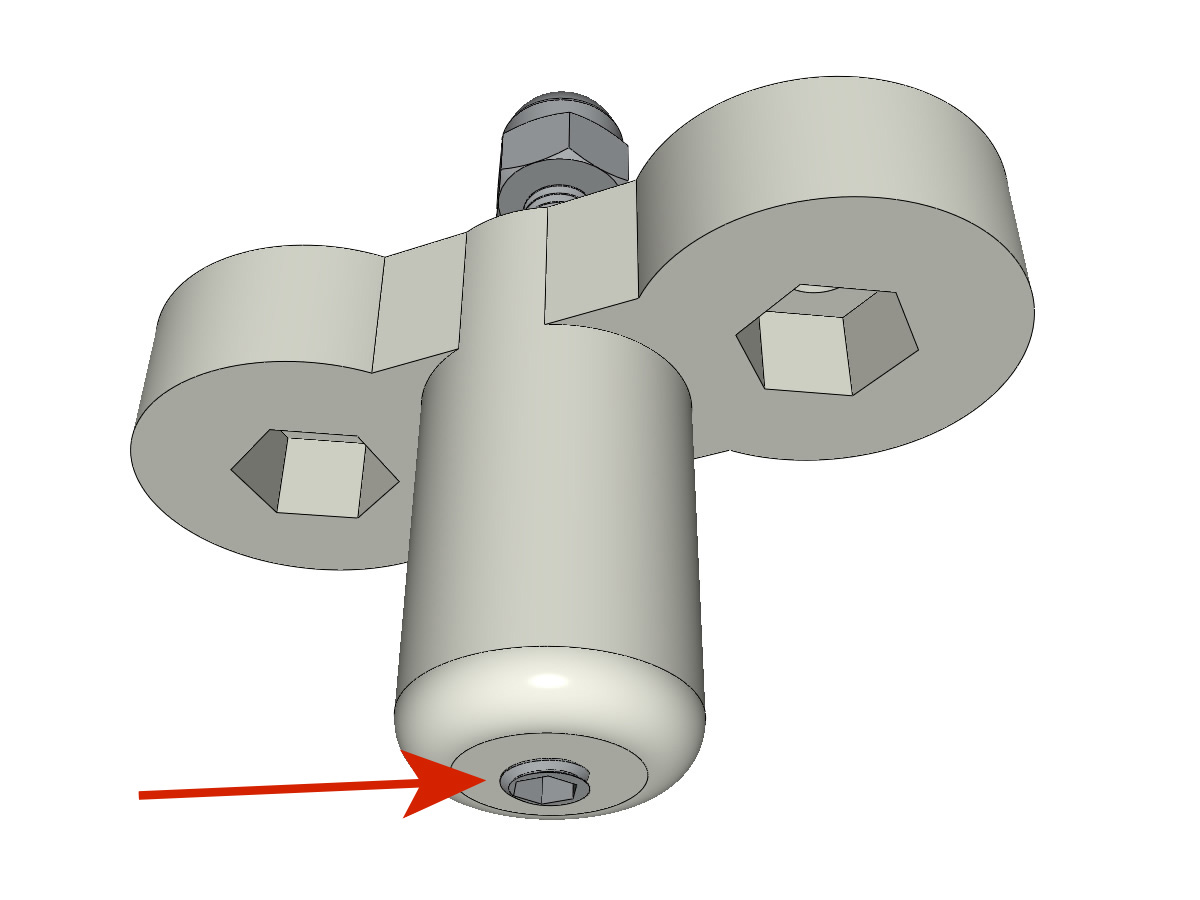
Assemble the FEMALE_shape on the TOP_trolley with the M3-12 screws, the M3 washers and the NYL M3 nuts.
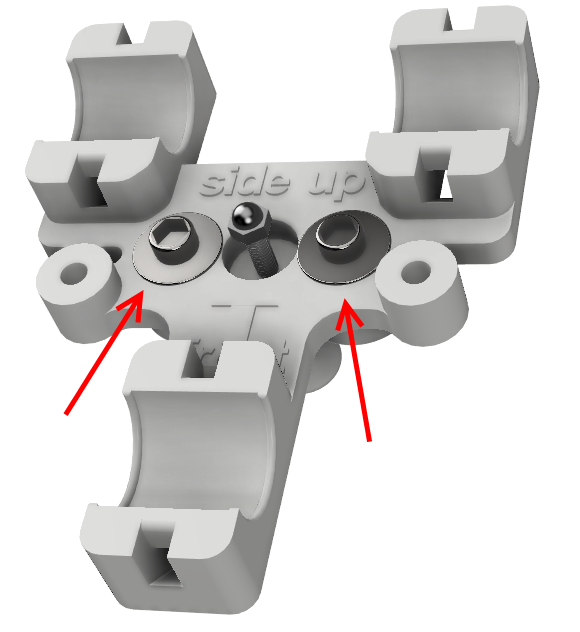

Position the IGUS bearings on the TOP_trolley part.
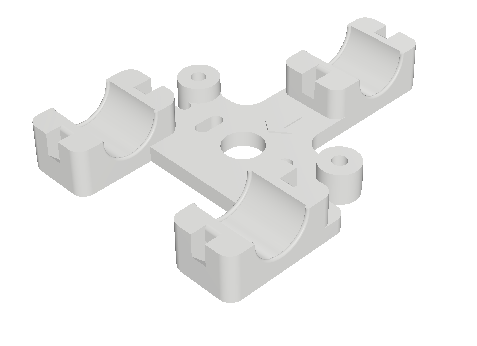

attach the IGUS bearings with fixing collars
Note
Pay attention to the direction of the clamps. The clamp fixing must be towards thewalls of the machine.
Note
Lock the IGUS in the groove. Do not overtighten the clamps,they will be adjusted when the carriage is in place on the railslinear
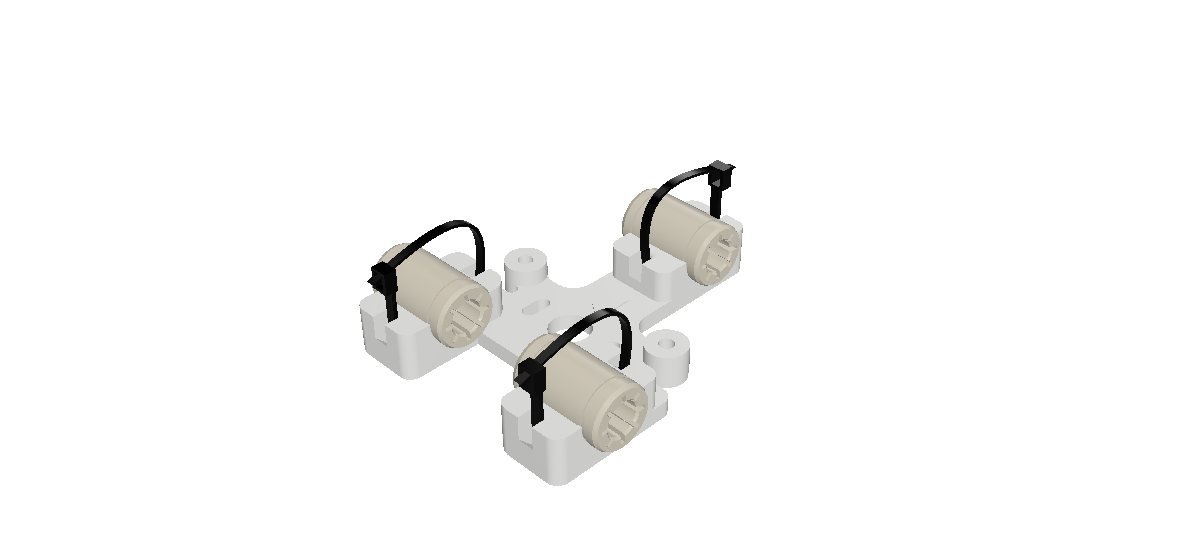
Fit the M3-20 screws and the M3 nuts.

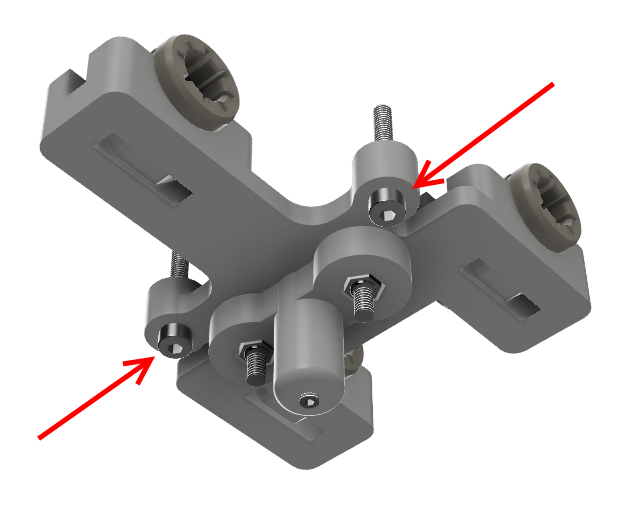
Paper roll prepare
3D printed parts: 3 x ROLL_joint
1 tap M3
3 O-rings
5 M3-6 grub screw
Tap the 3 ROLL_joint.
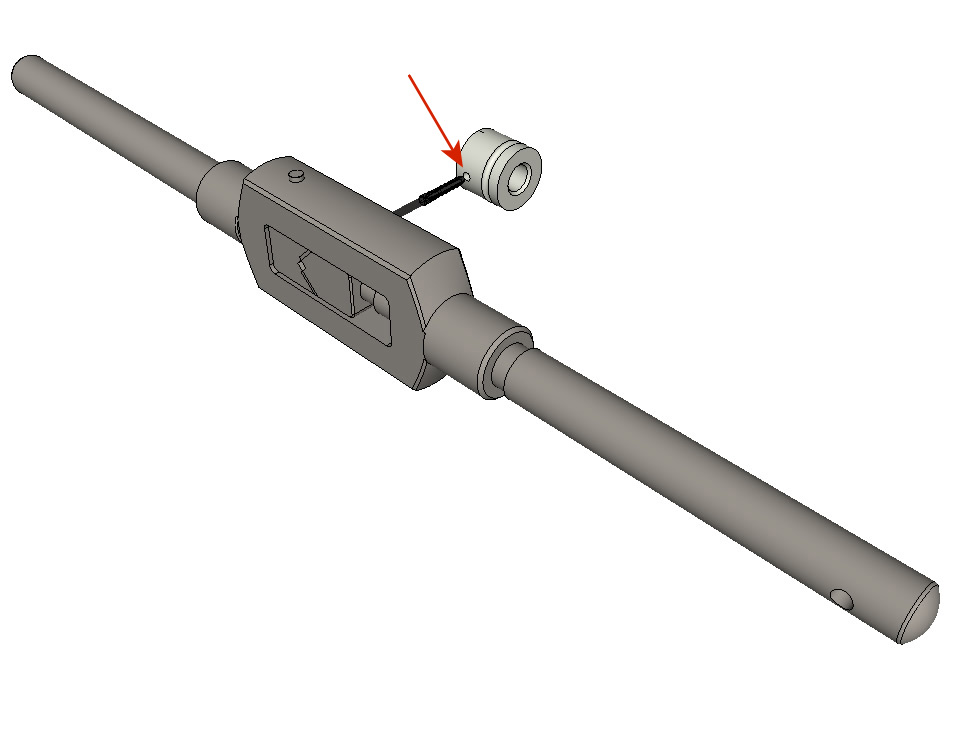
Put the O-rings in the groove of the 3 ROLL_joint.
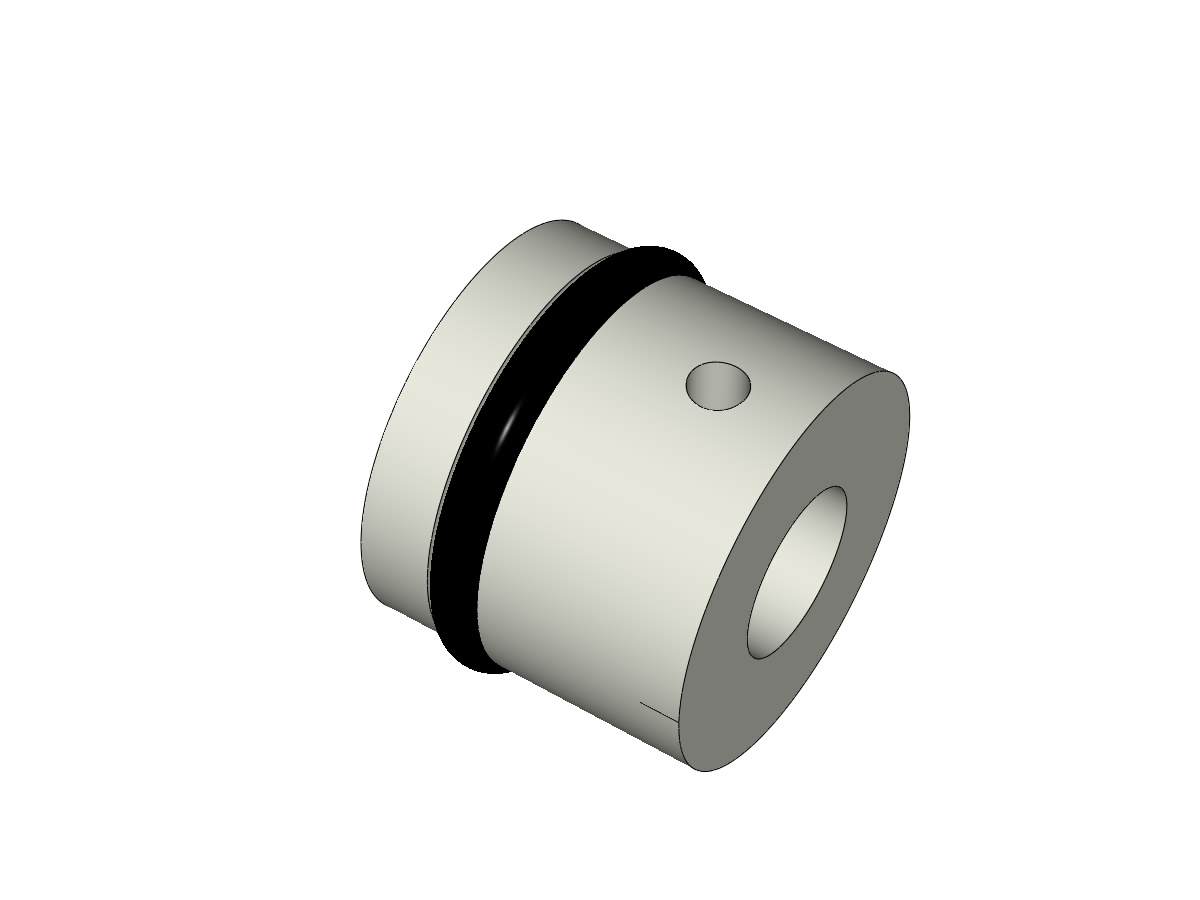
Screw in the M3-6 grub screws making sure they do not protrude at inside the hole. You need to be able to slide the roll over a8mm axle.
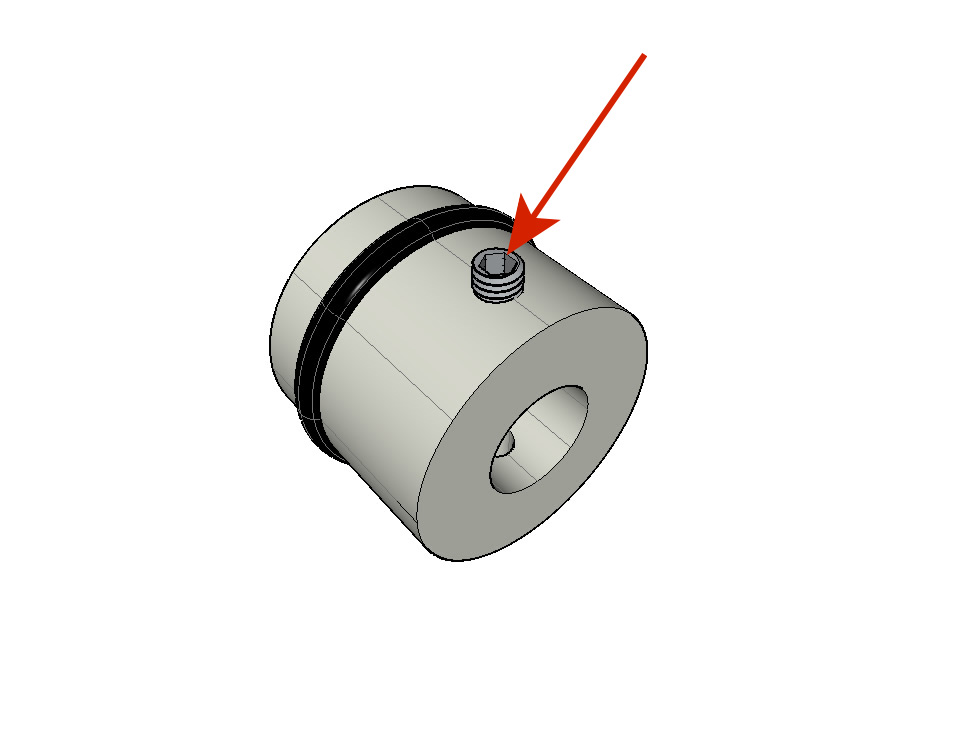
Assembly of the paperweights (step 1):
3D printed part(s): 3 x clipboard2_support 3 x clipboard2 3 x CLIPBOARD2_WHEEL
3 M3-25 screw
3 M3-20 screw
3 GT2 belt tensioner springs
6 M3-NYL nuts
Position the clipboard clipboard2 in relation to the support**clipboard2_support**.

Position the spring between clipboard2 and clipboard2_support.
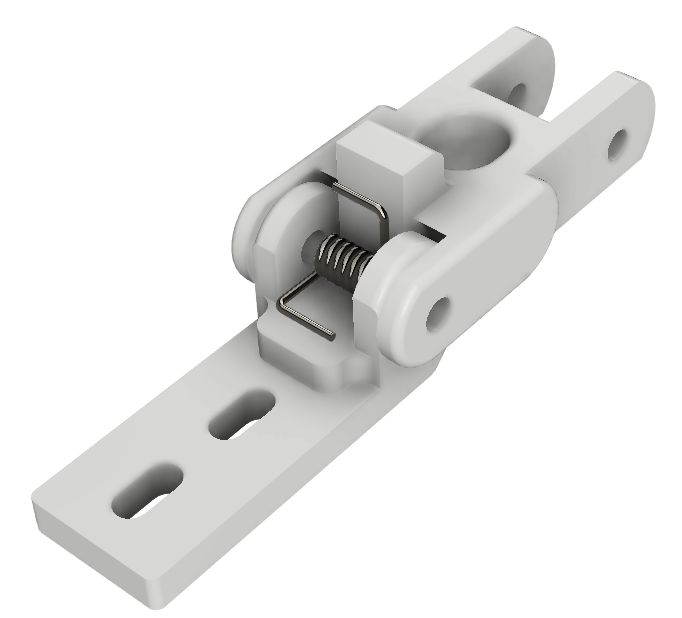
Assemble the spring with clipboard2 and clipboard2_support with an M3-25 screw and an M3-NYL nut.
Note
Do not tighten the M3-NYL nut clipboard2 and **clipboard2_support**must be able to move freely.
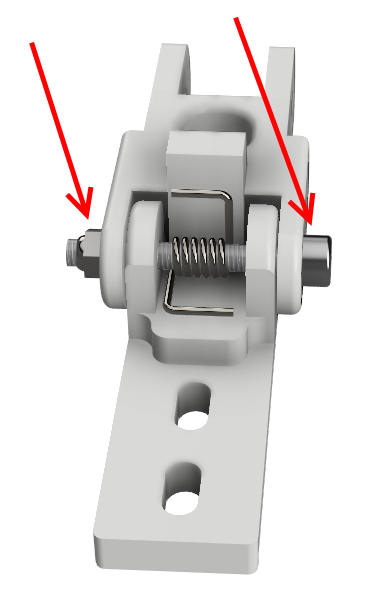
Assemble roller with CLIPBOARD2_WHEEL with clipboard2 using an M3-20 screw and an M3-NYL nut.
Note
Do not tighten the M3-NYL nut CLIPBOARD2_WHEEL must be able to turnfreely.

Mounting the vertical axis (step 1)
Equipment:
Pièces : ensemble XMOTOR_support2, XMOTOR_support2_1 et Moteur
3 M3-16 screws
3 M3-NYL nuts
3 wide M3 washers
Insert the 3 screws and the 3 washers from the outside. And attach the bracket with 3 NYL nuts without tightening.
Note
The gap will then allow to align the motor shaft with the vertical axis.
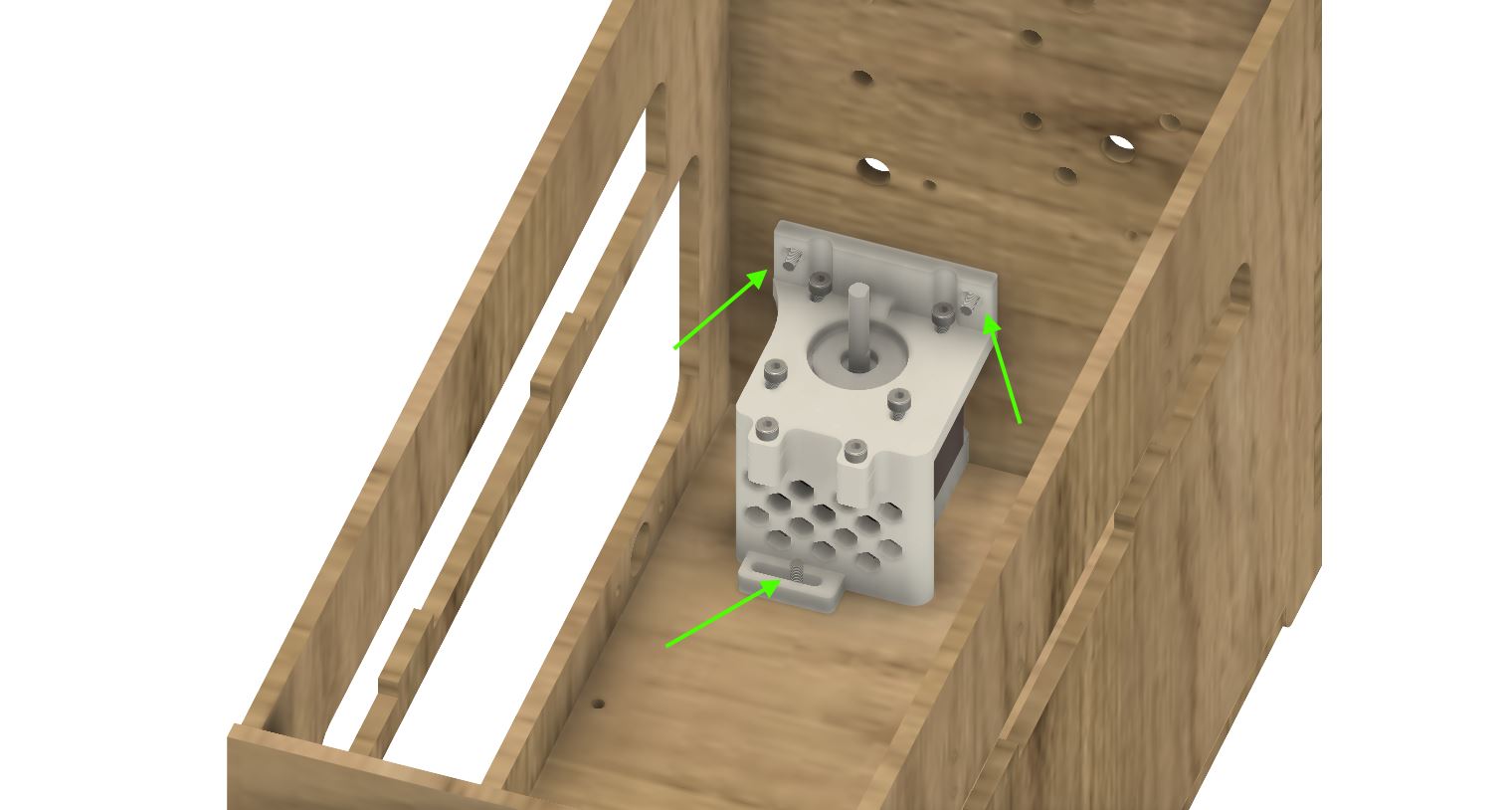
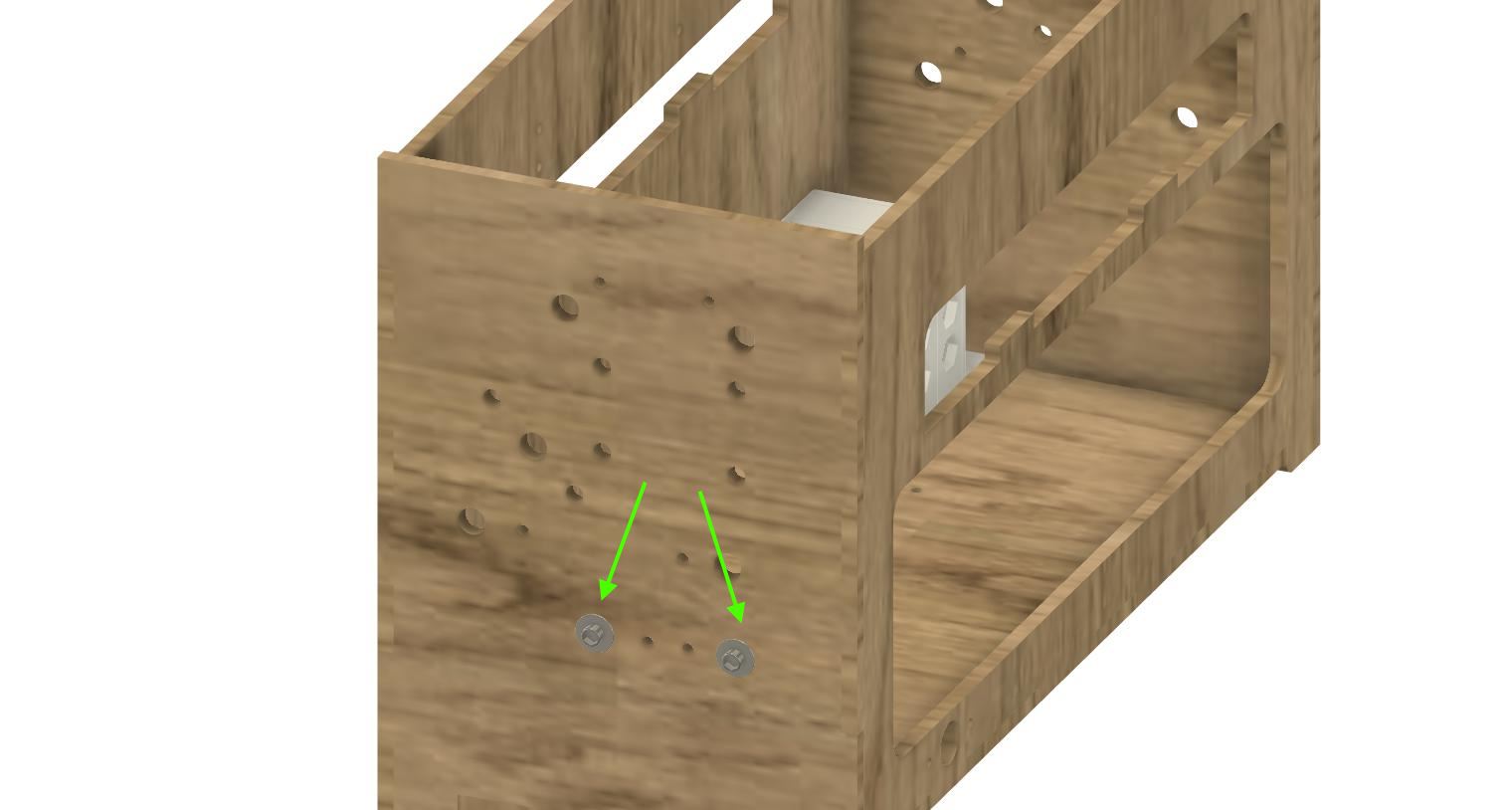
Y Motor Mount:
Equipment:
le moteur Nema 17 monté sur la pièce YMOTOR_support2_200 + YMOTOR_support2_200_1 + YMOTOR_support2_200_2
4 M3-14 screws
4 wide M3 washers
Insert the screws and washers from the outside and screw the support onto the crate so that it can still slide in the oblong holes.
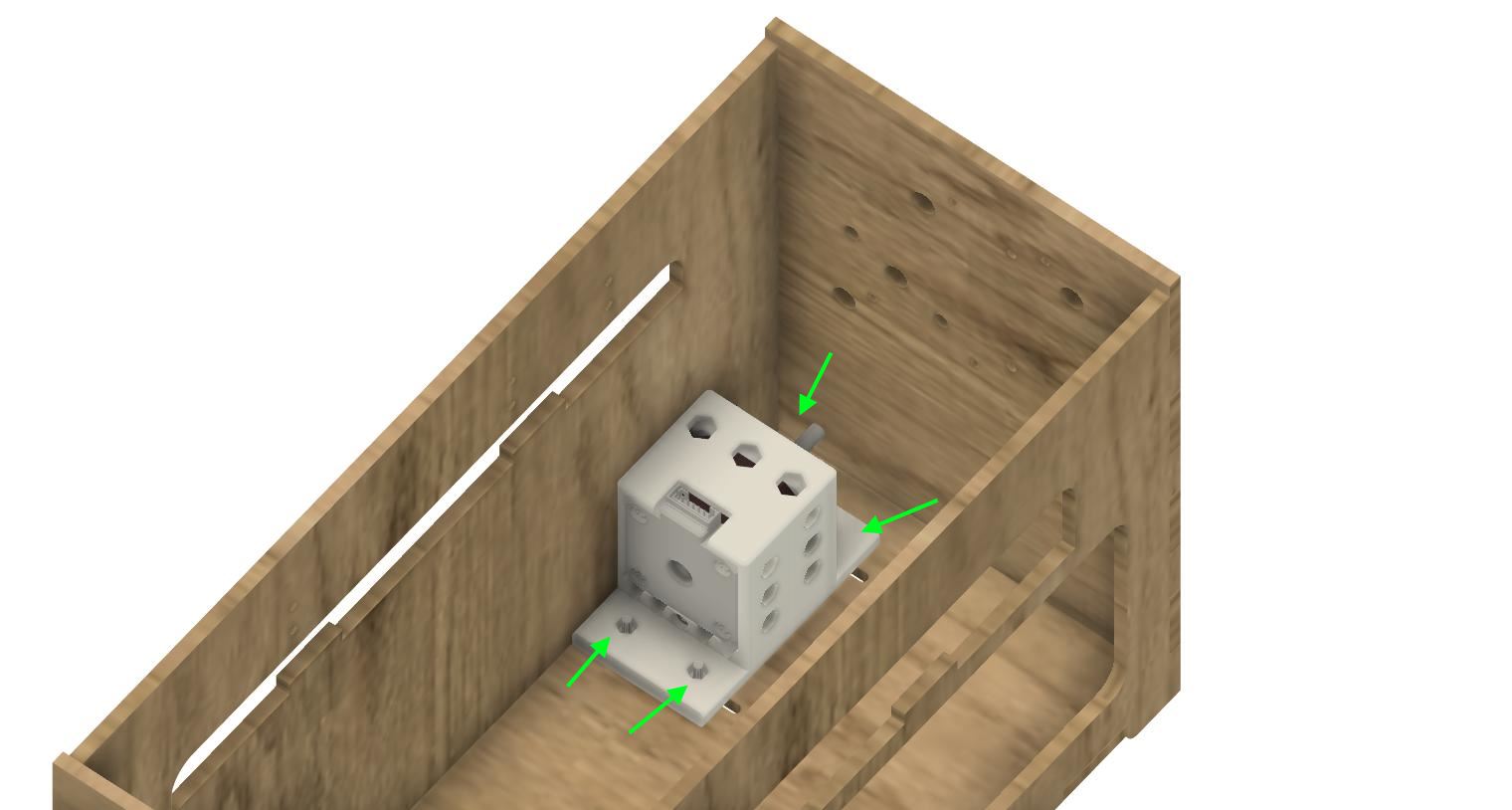

Assembling LEFT shafts supports
Equipment:
3D printed parts: BOTTOM_AXIS_left prepared with nut and grub screw (cf Preparation of axis supports)
3D printed parts: TOP_AXIS_left prepared with nut and grub screw (see Preparation of axle supports)
4 M3-14 screws
4 wide M3 washers
4 M3 NYL nuts
Fix the supports of axis on the box the BOTTOM_AXIS_left and TOP_AXIS_left on the left leaving a little game (screw + washer outside and nut inside). The screws will be tight when the assembly is in place.
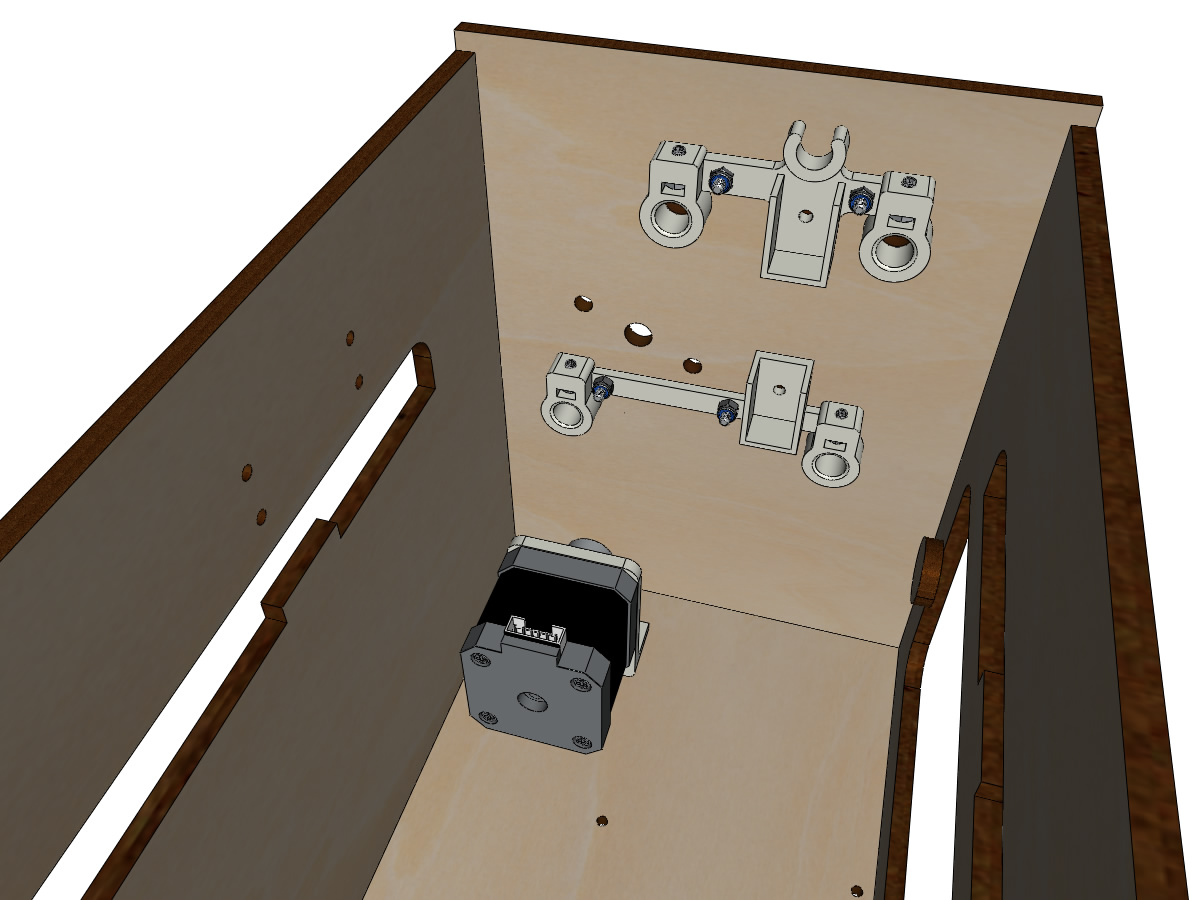

Assembling RIGHT rod supports
Equipment:
3D printed parts : BOTTOM_AXIS_right
3D printed parts: TOP_AXIS_right prepared with nut and grub screws (see Preparation of axle supports)
4 M3-14 screws
4 wide M3 washers
4 M3 NYL nuts
Fix rod supports on the box with BOTTOM_AXIS_right and TOP_AXIS_right on the right with leaving some mechanical clearance (screw + washer outside and nut inside). The screws will be tight when all parts will be in place.
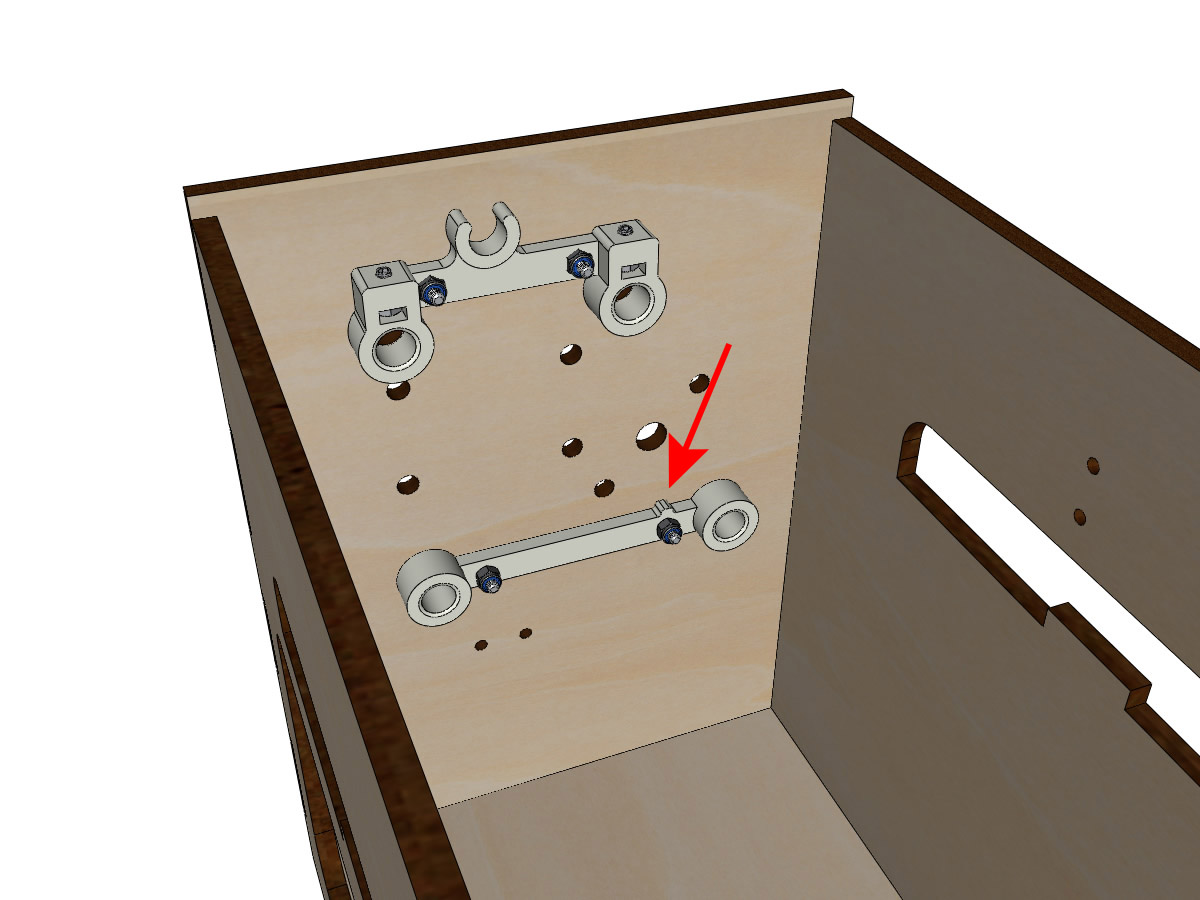
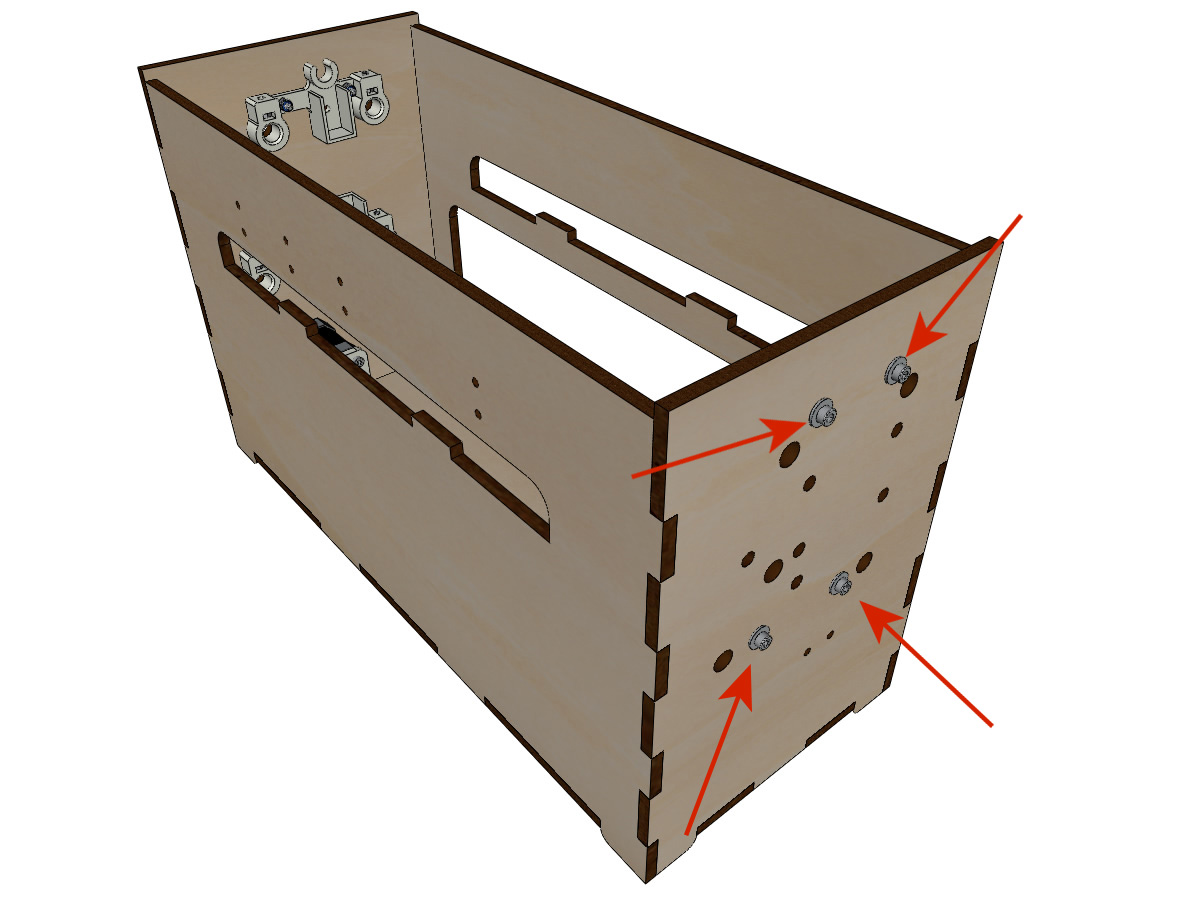
Fastening the belt tensioners
Equipment:
3D printed parts : 2 x DRIVEN_PULLEY_housing
2 M3-20 screw
2 wide M3 washers
2 NYLSTOP M3
Insert a NYL M3 nut into its housing and secure the DRIVEN_PULLEY_housing with a M3-20 screw and washer.


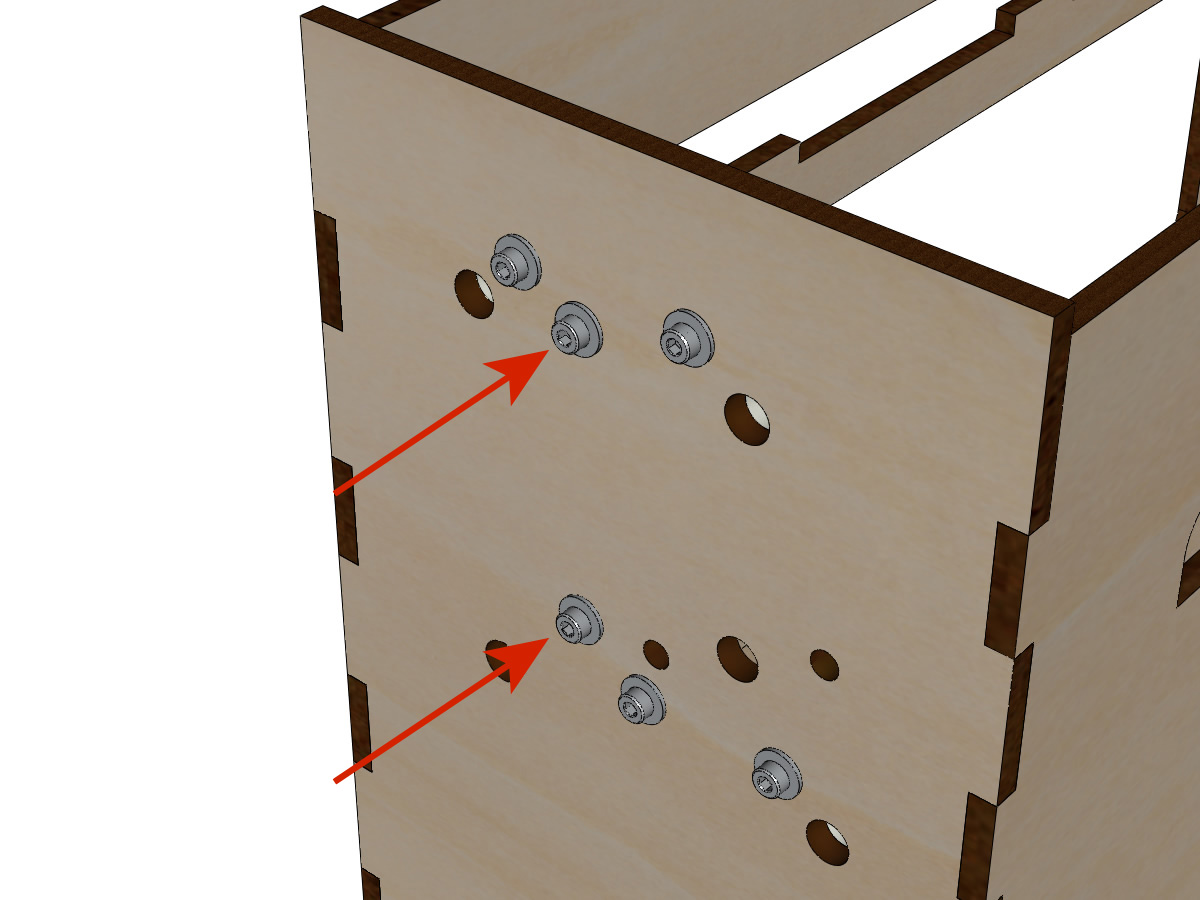
Leave a gap of ± 5mm.
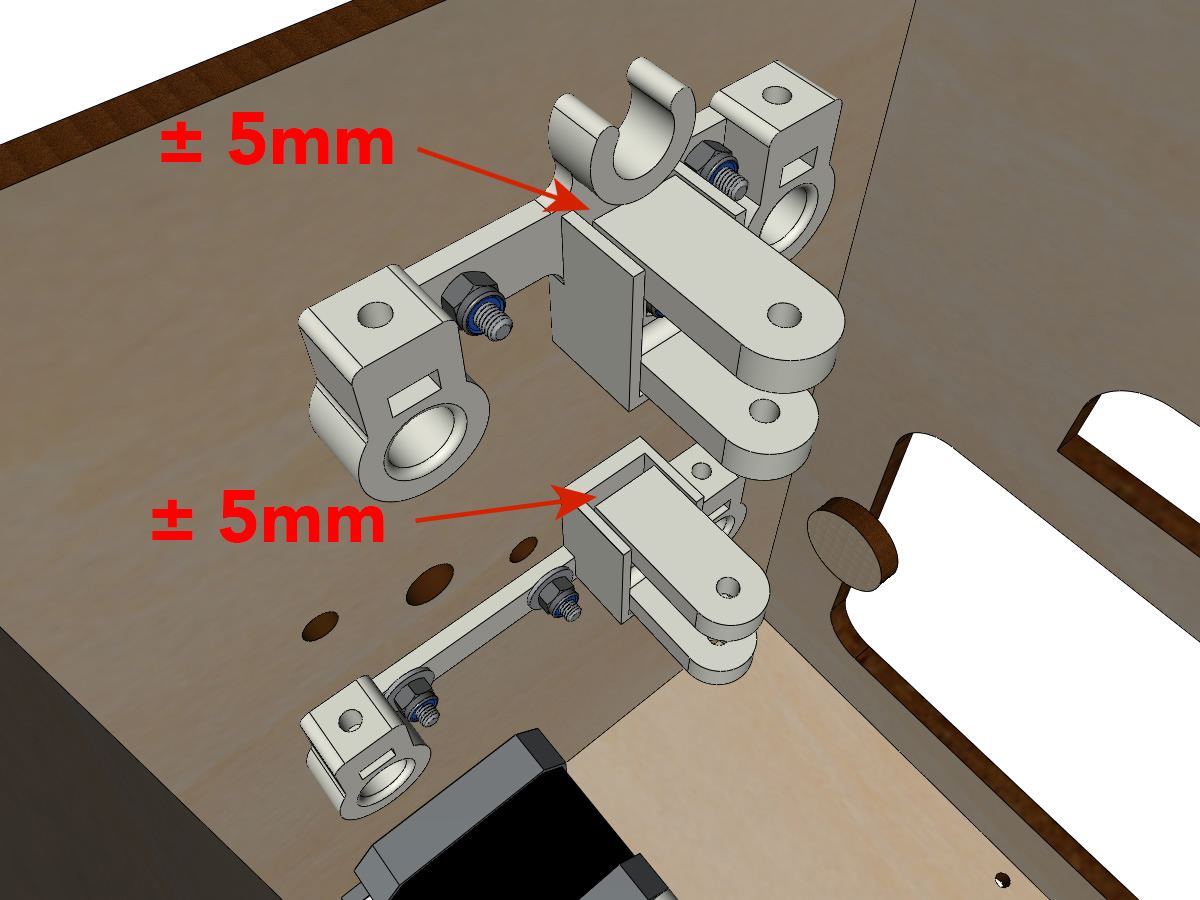
Free pulleys assembly
Equipment:
2 free pulleys 20 teeth 3mm bore
2 M3-25 screw
2 NYLSTOP M3
Start by inserting the pulley then the M3-25 screw. Screw with a NYL M3 nut without tightening too much.
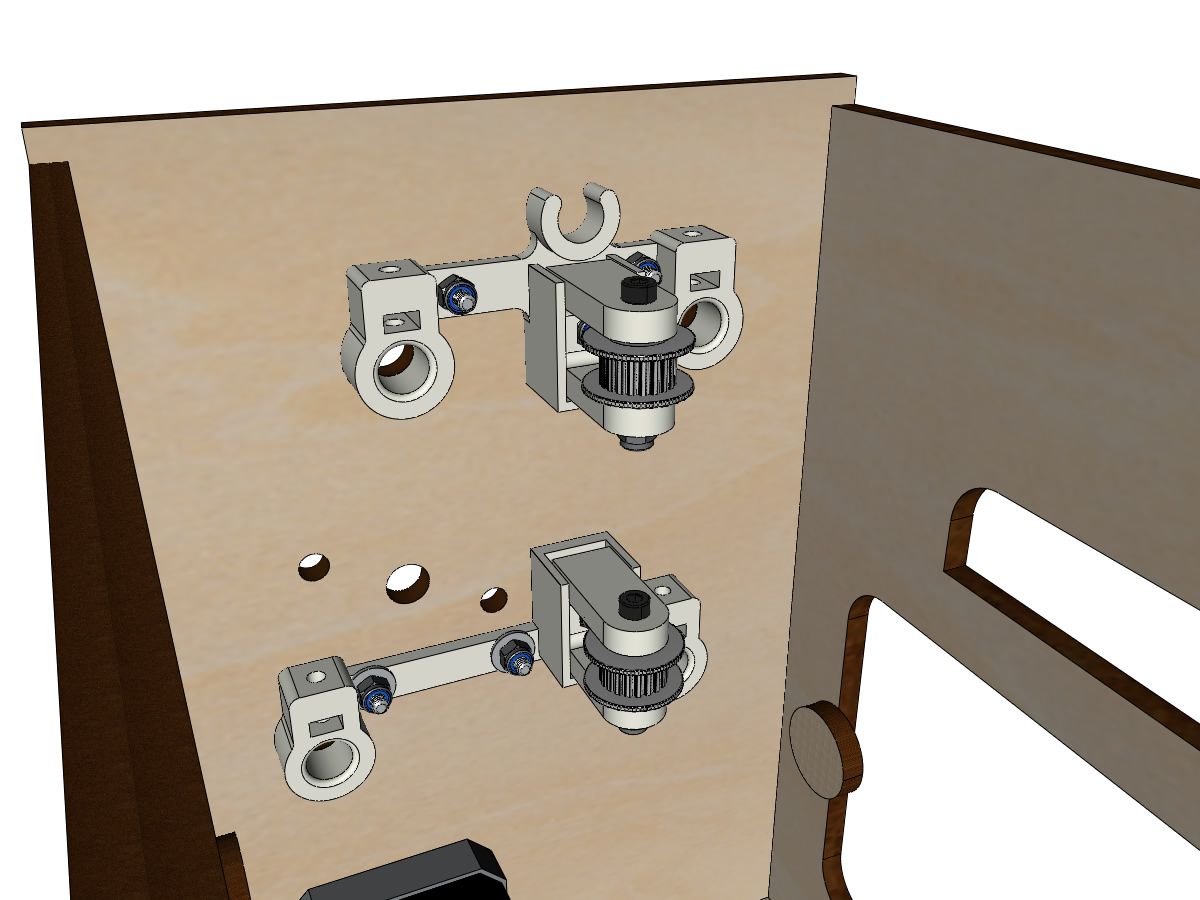
Bottom trolley assembly (step 2)
Equipment:
2 linear shaft Ø8mm, length: 330mm
Note
We did not represent the facade for readability reasons.
Thread the bars halfway through the outside of the crate.

Thread the switch and its support on the Ø8mm bar on the back side.
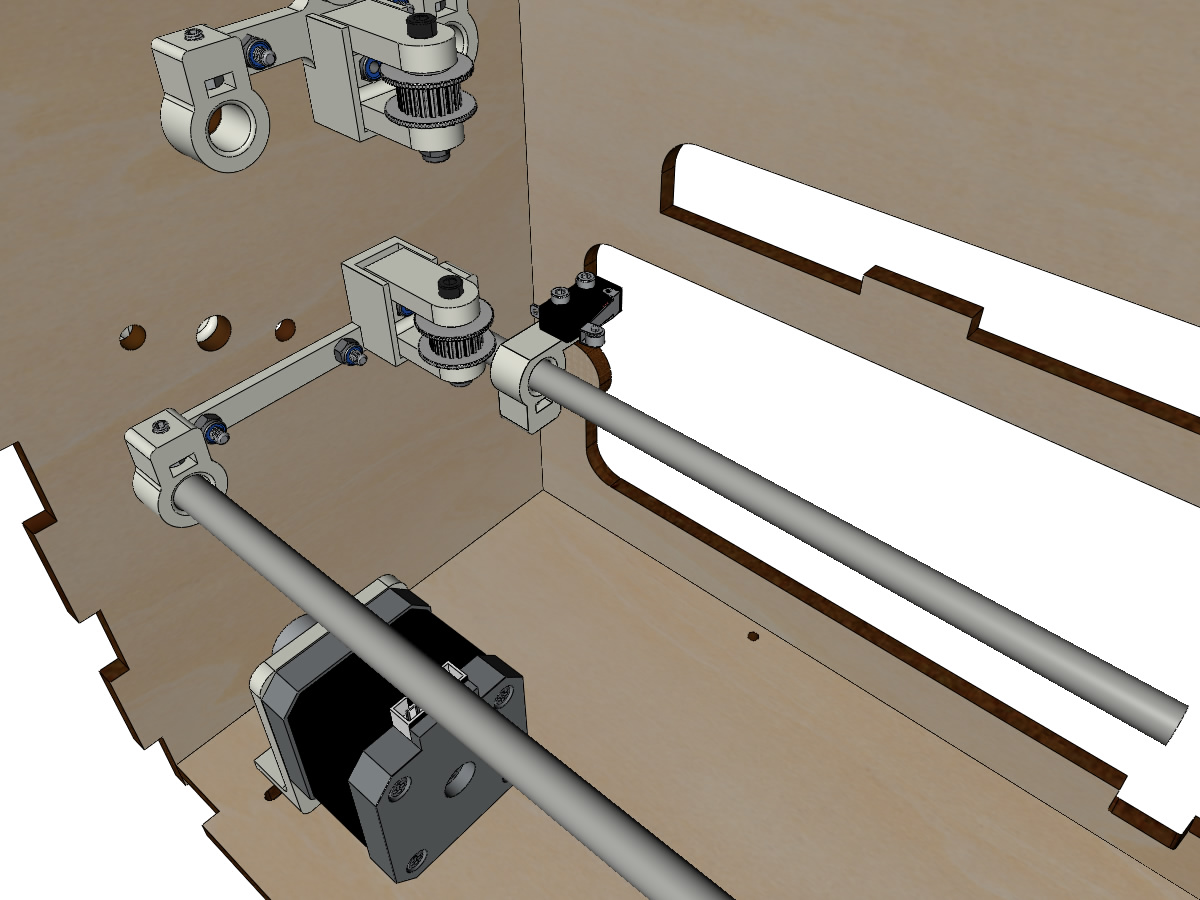
Note
The screw on the switch bracket will be tightened later during adjustment.
Thread the trolley down over the smooth bars.

Finish putting on the bars (the bars must not protrude into the wood of the box).
Tighten the 4 axle holder screws on the body (2 on the left side and 2 on the right side) and the 4 grub screws on the axle brackets so that the pins do not slide into their seats.
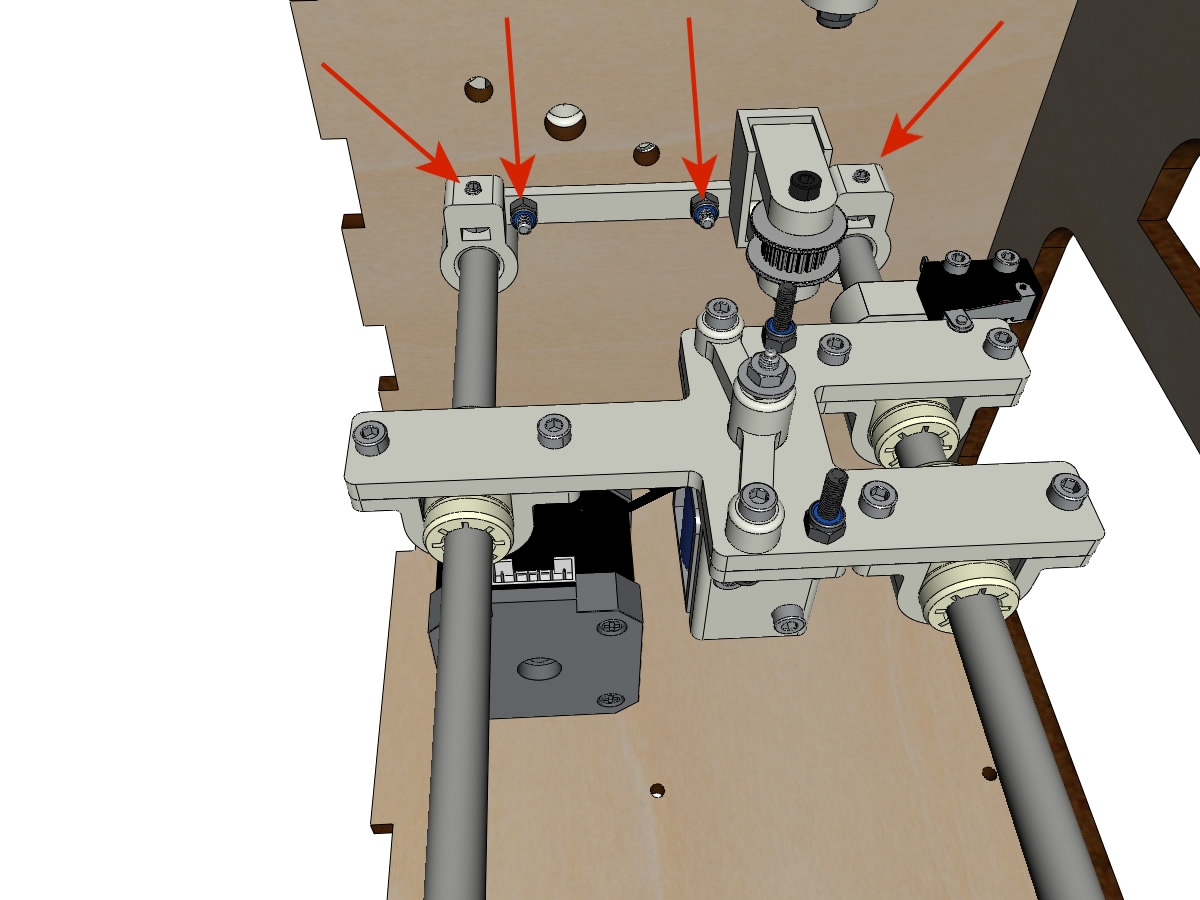
Mounting the vertical axis (step 1)
Equipment:
3D printed parts : 2 X KP08_support
2 KP08
4 M5-25 screw
4 rondelles M5
4 M5 NYL nuts
Note
Before attaching the KP08, make sure the bearings are aligned in their housing. They may be delivered a little misaligned. In this case, insert a Ø 8mm bar and manually actuate it to straighten them.
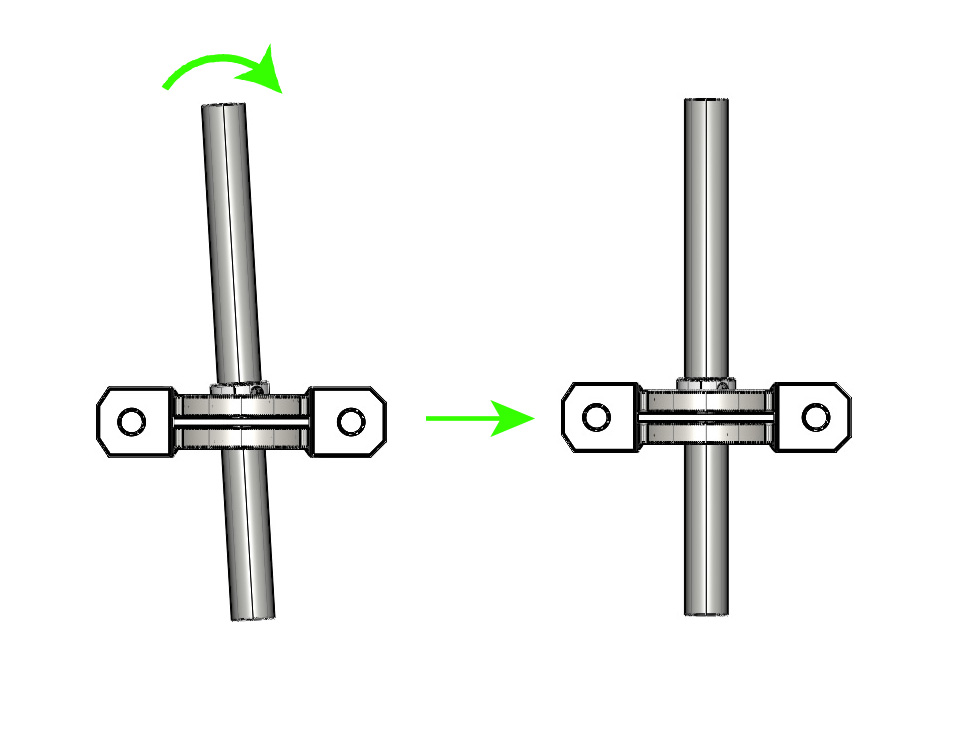
Screw the KP08_support and the KP08 on the body a bit with the M5-25 screws, M5 washers and M5 NYL nuts.
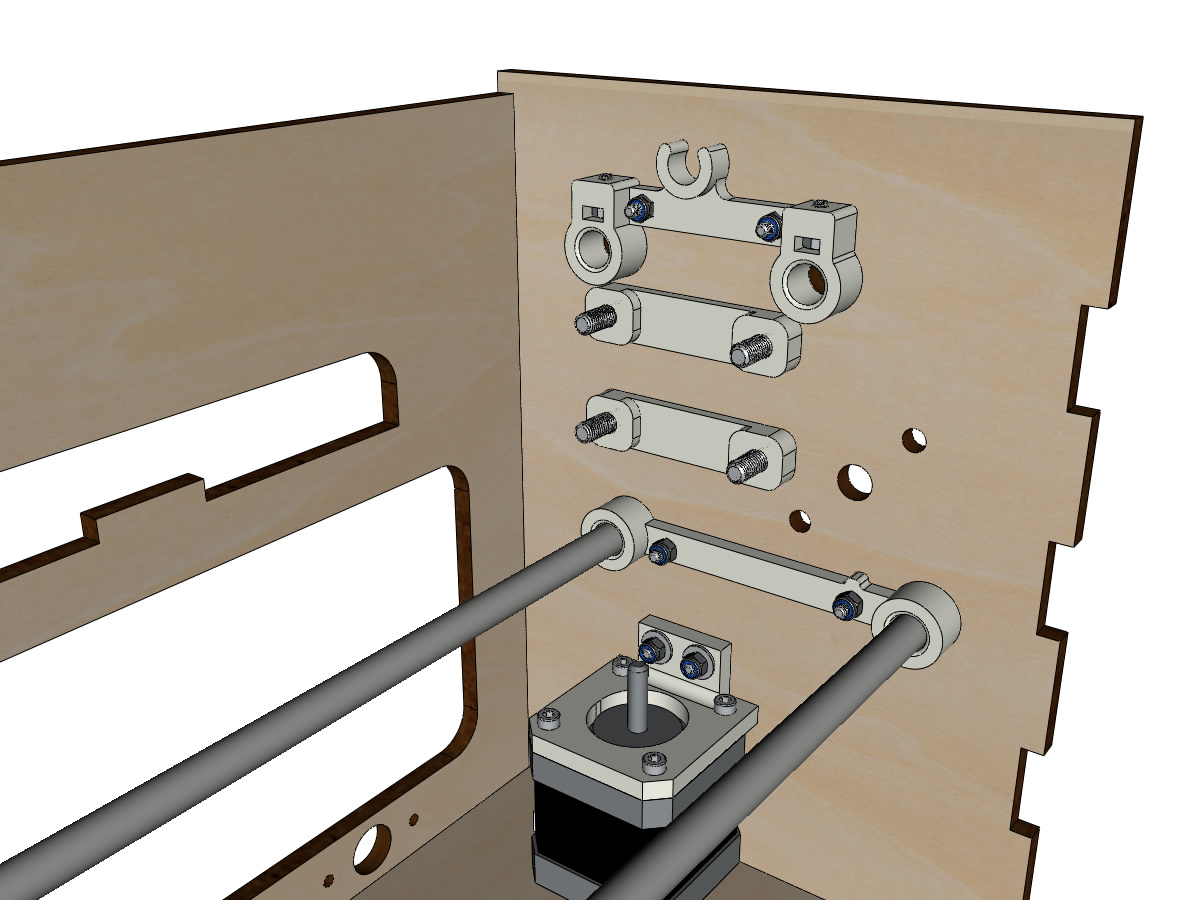
Observe the position of the KP08 clamping rings.
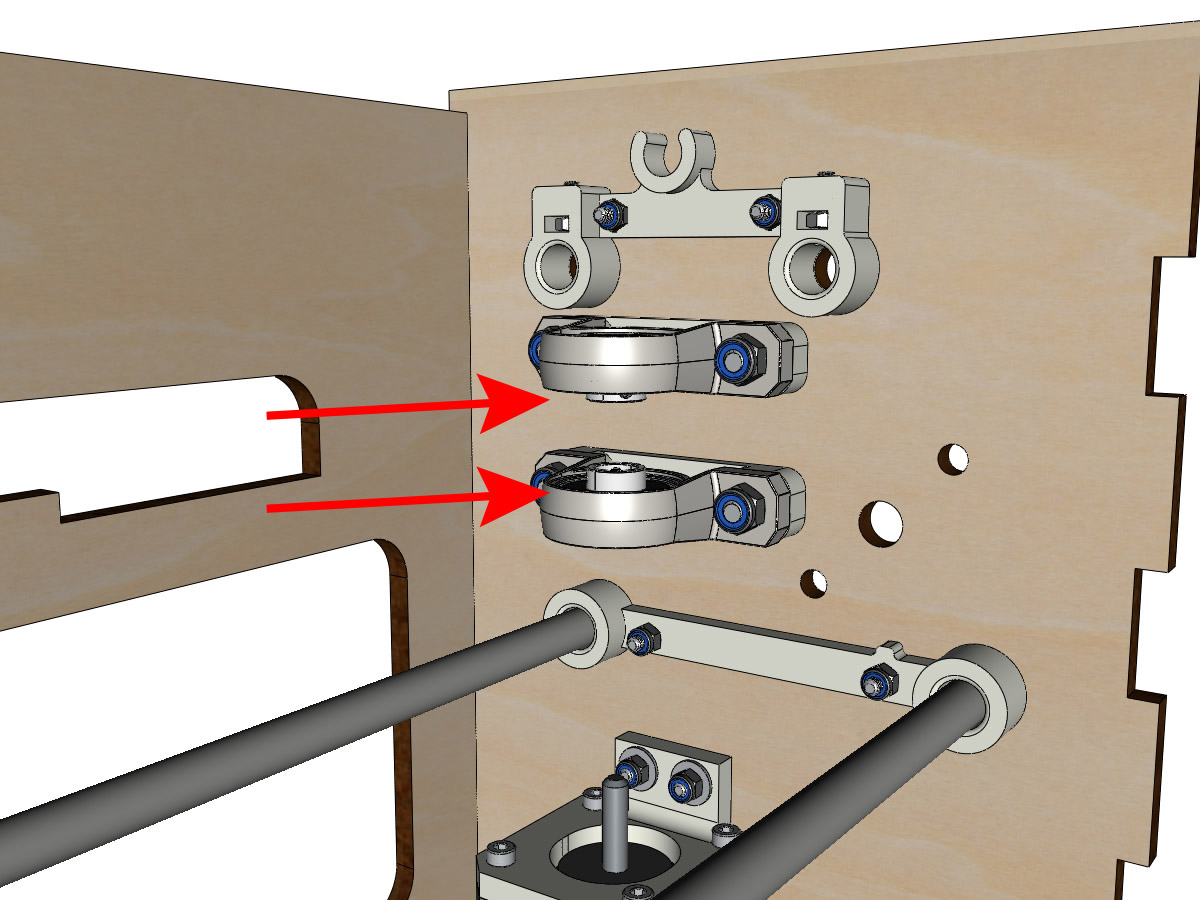

Mounting the vertical axis (step 3)
Equipment:
1 linear shaft Ø 8mm, length : 100mm
1 5*8mm Coupler
Thread the coupler onto the motor shaft (Ø 5mm hole at the bottom).
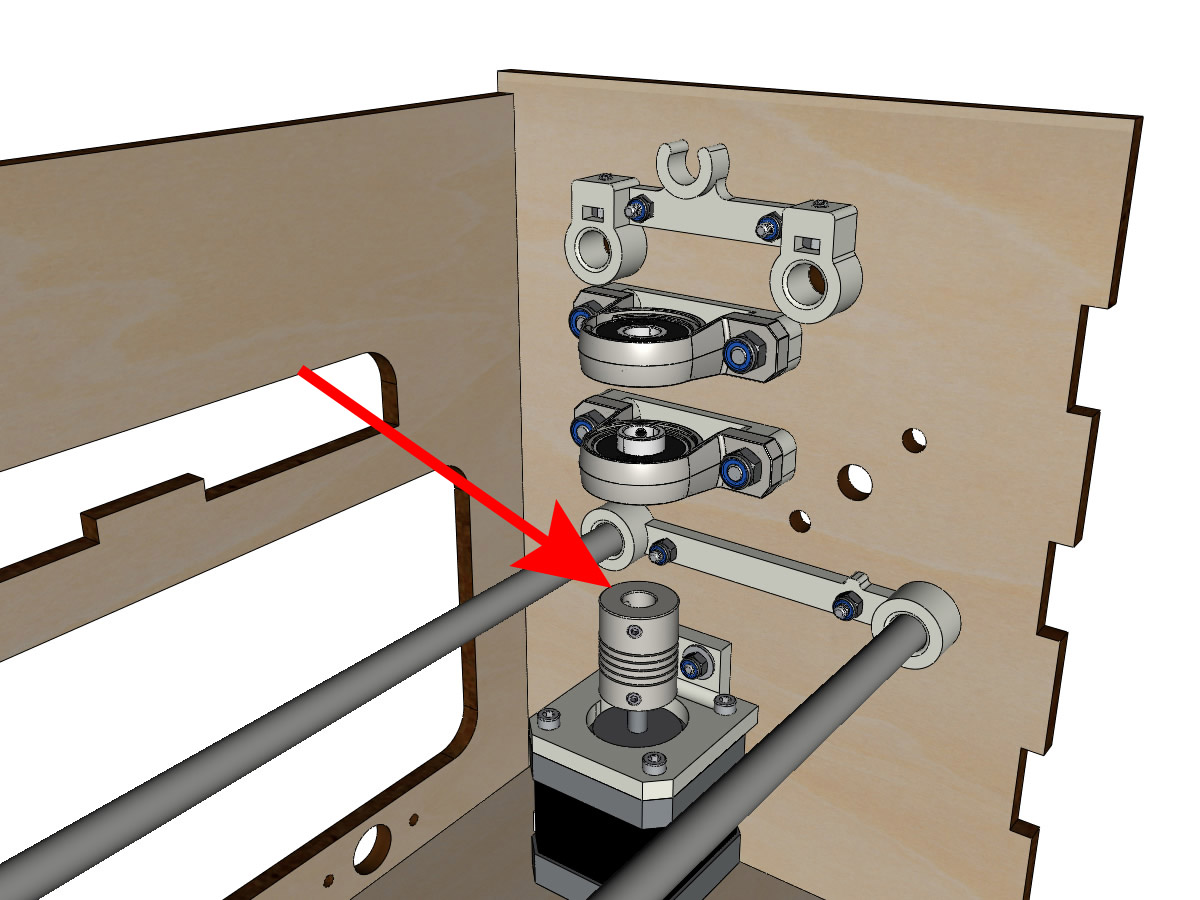
Thread the 100mm linear shaft from the top through the KP08 and into the coupler.

Rotate the linear shaft by hand to ensure that all elements are aligned and that the spindle continues to rotate freely.
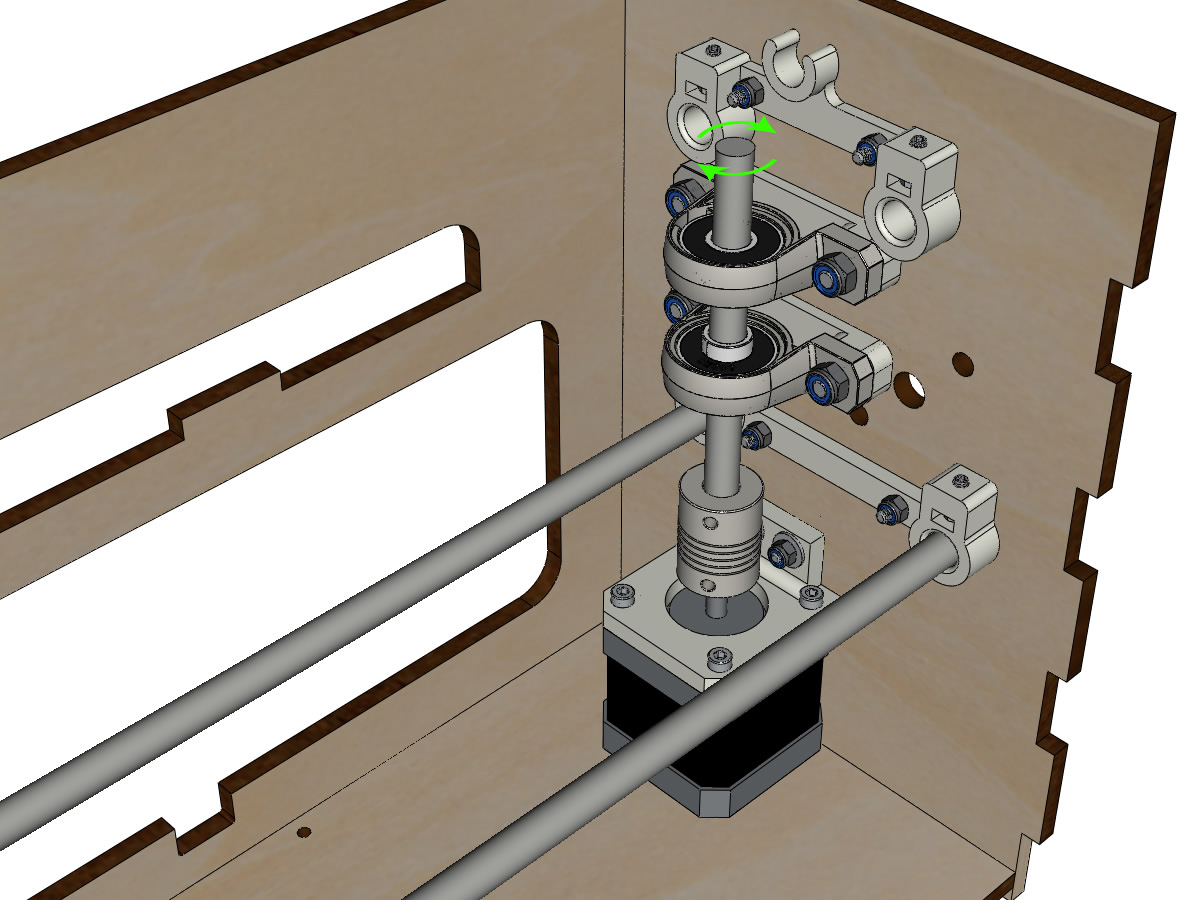
The holes of the motor support are oblong and allow to align the motor with the vertical axis in the 2 dimensions.
Screw the first 2 screws of the motor on its support.
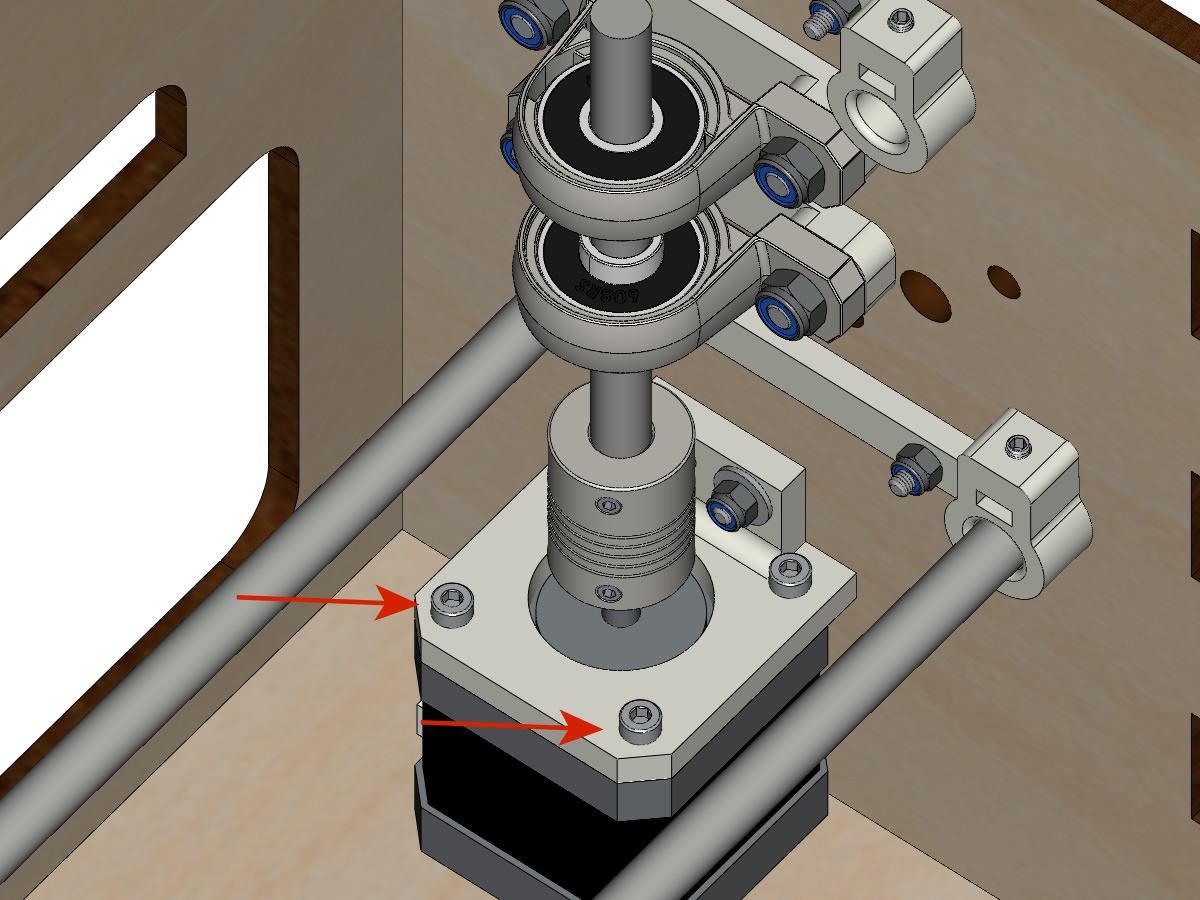
Slowly tighten the KP08 screws by turning the shaft by hand.
Screw the motor support screws onto the body slowly by turning the shaft by hand. ** ADD PICTURE **
Remove the pin and finish screwing the last 2 screws of the motor on its support, then the support on the body.
Mount the vertical axis (step 4)
Equipment:
2 pulleys GT2 20 teeth bore 8mm
Screw the 2 screws at the bottom of the coupler onto the motor shaft, making sure that one of the screws is in front of the flat part of the motor shaft and that the bottom of the coupler is not resting on the motor.

Thread the 100mm axle into the KP08, the pulleys (respecting their positions) and the coupler.
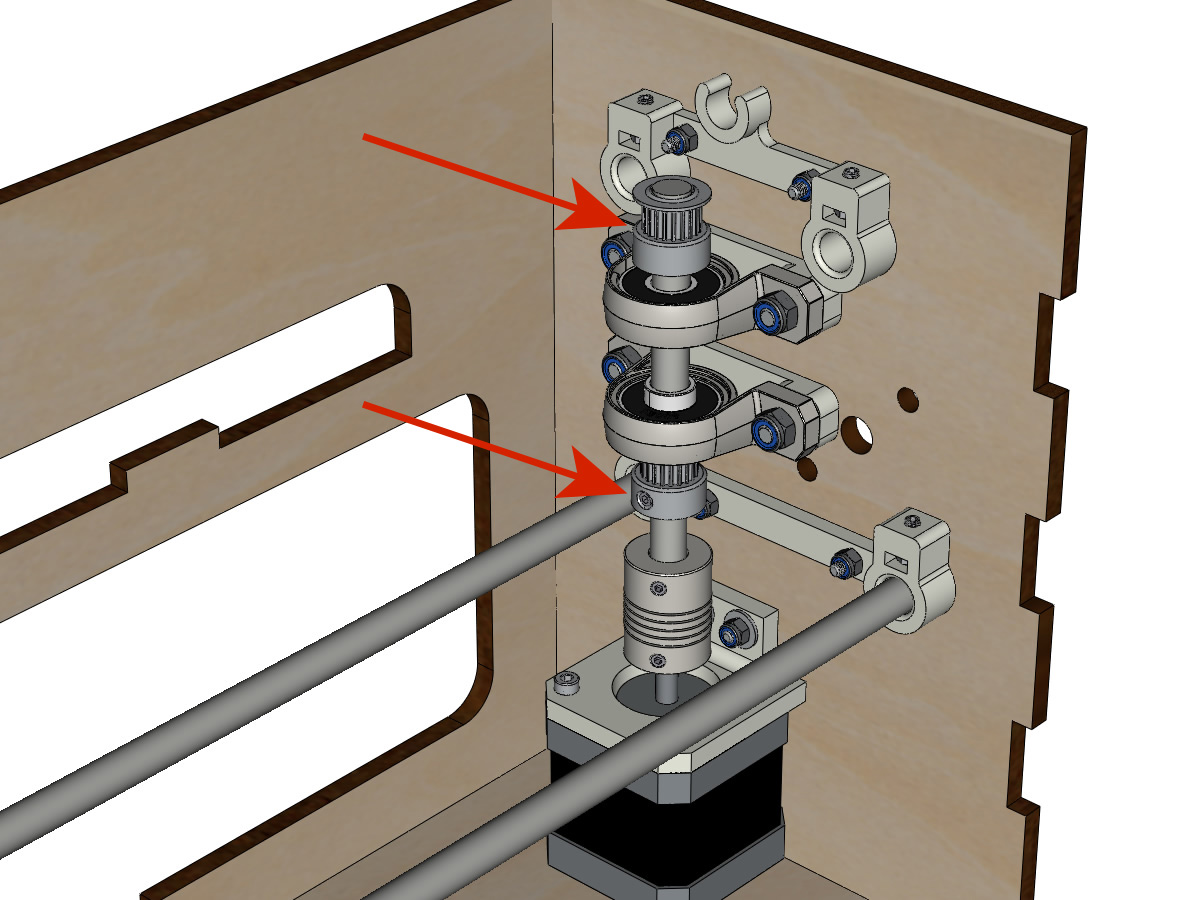
Screw the 2 screws at the top of the coupler onto the vertical axis.
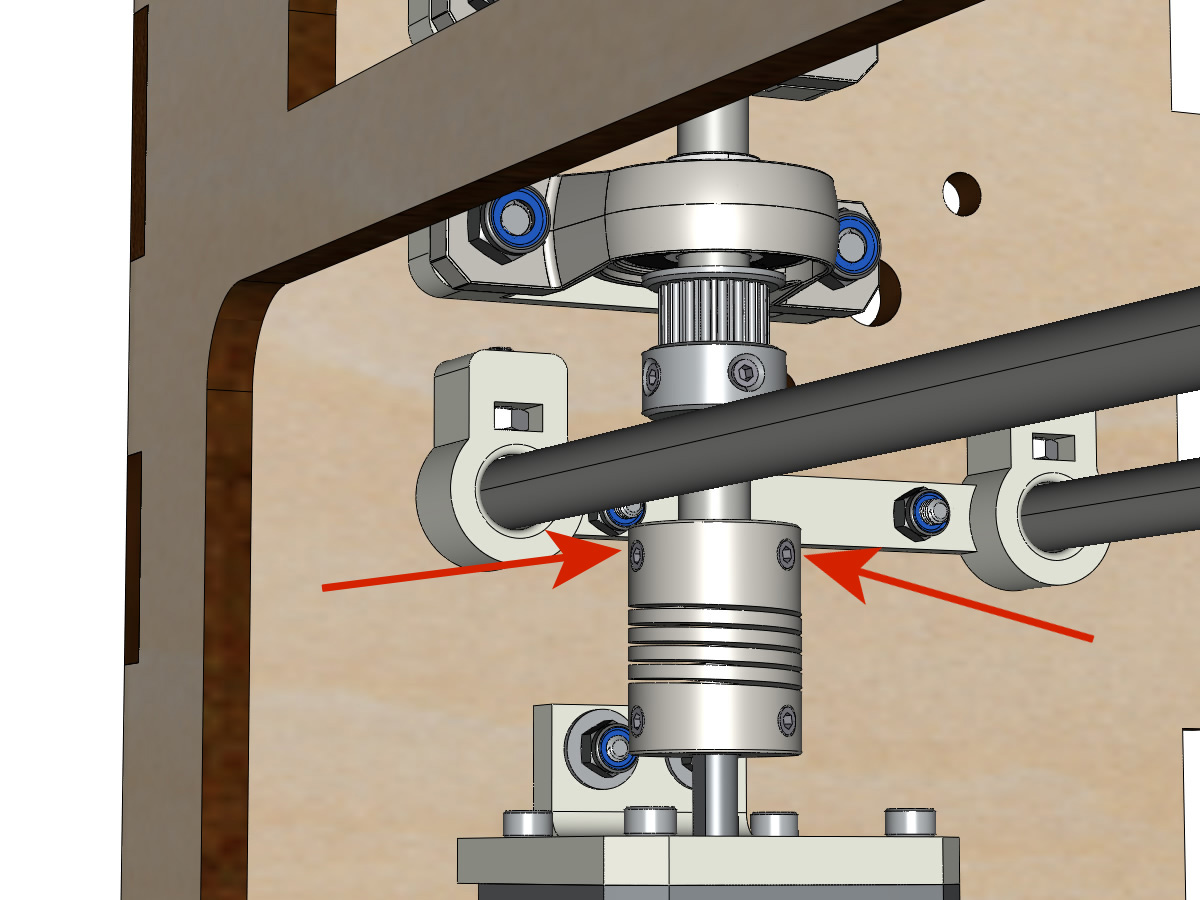
Leave the pulleys free without screwing them onto the axle. They will be screwed when the belt is in place.
Screw the screws of the KP08 clamping rings (2 screws per ring).

Make sure that the axle rotates easily and that the motor does not oscillate. If necessary, loosen the motor and support screws on the body to give them play and re-align.
Mounting the low carriage belt
Equipment:
1 belt GT2 length ± 620mm
2 necklaces
Using a collar, attach the strap around the carriage screw with the teeth facing out.
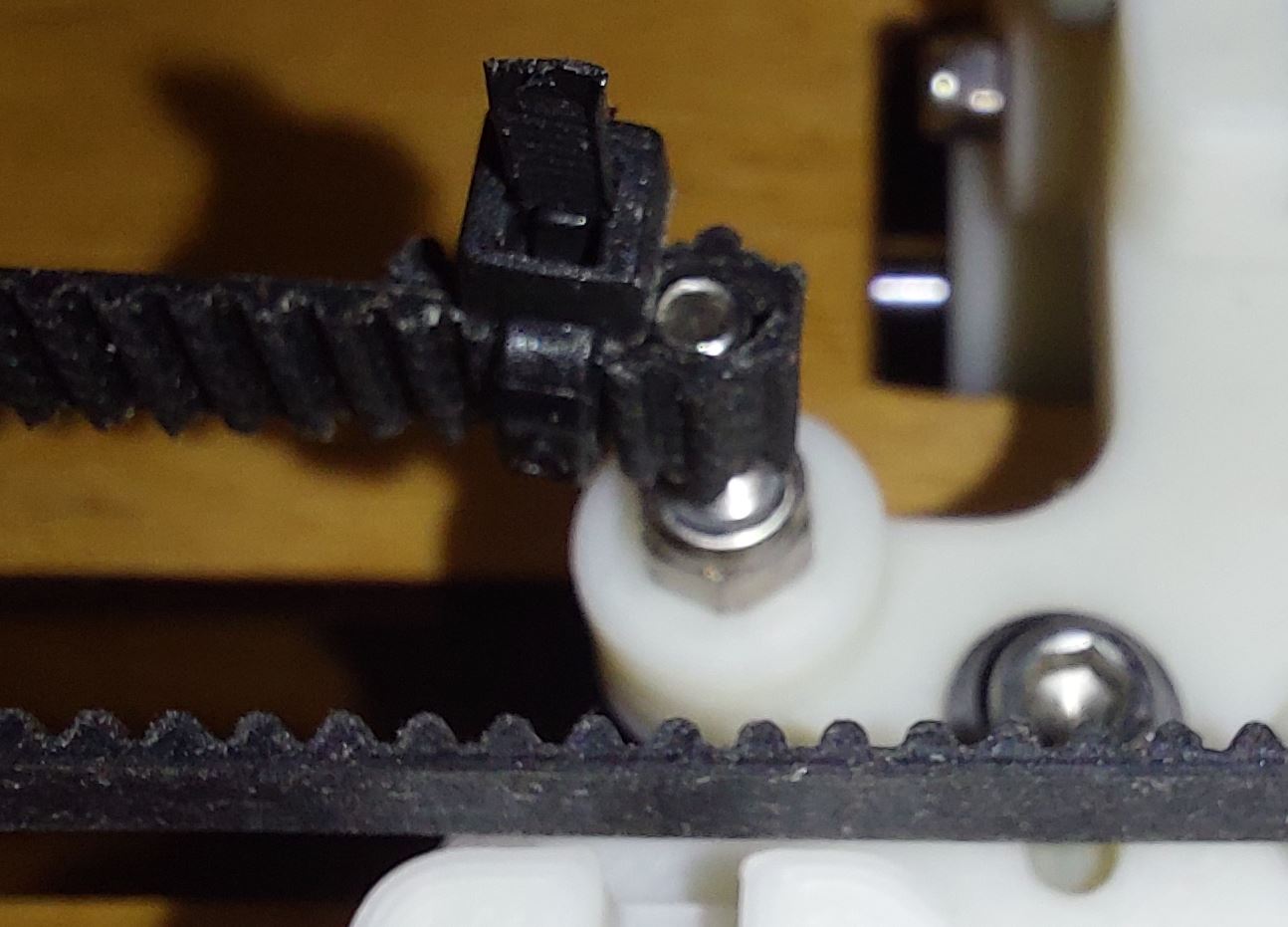
Pass the belt in the free pulley then the pulley of the vertical axis.

Tension the belt while holding the carriage and secure the second end of the belt to its screw with a collar.
Finish stretching the belt with the screw on the outside of the body.
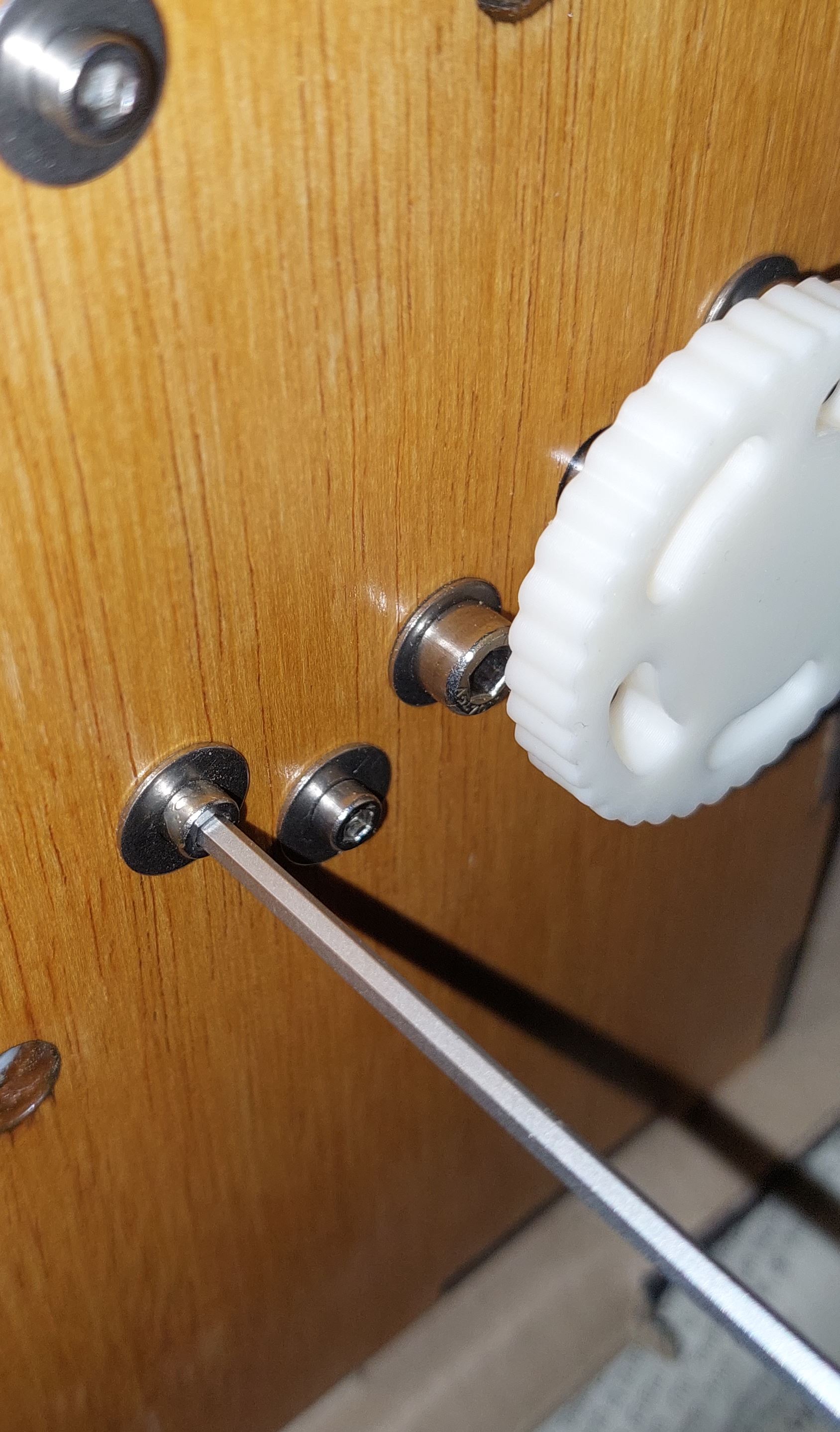
Note
For now, do not tighten the pulley bolts on the axle.
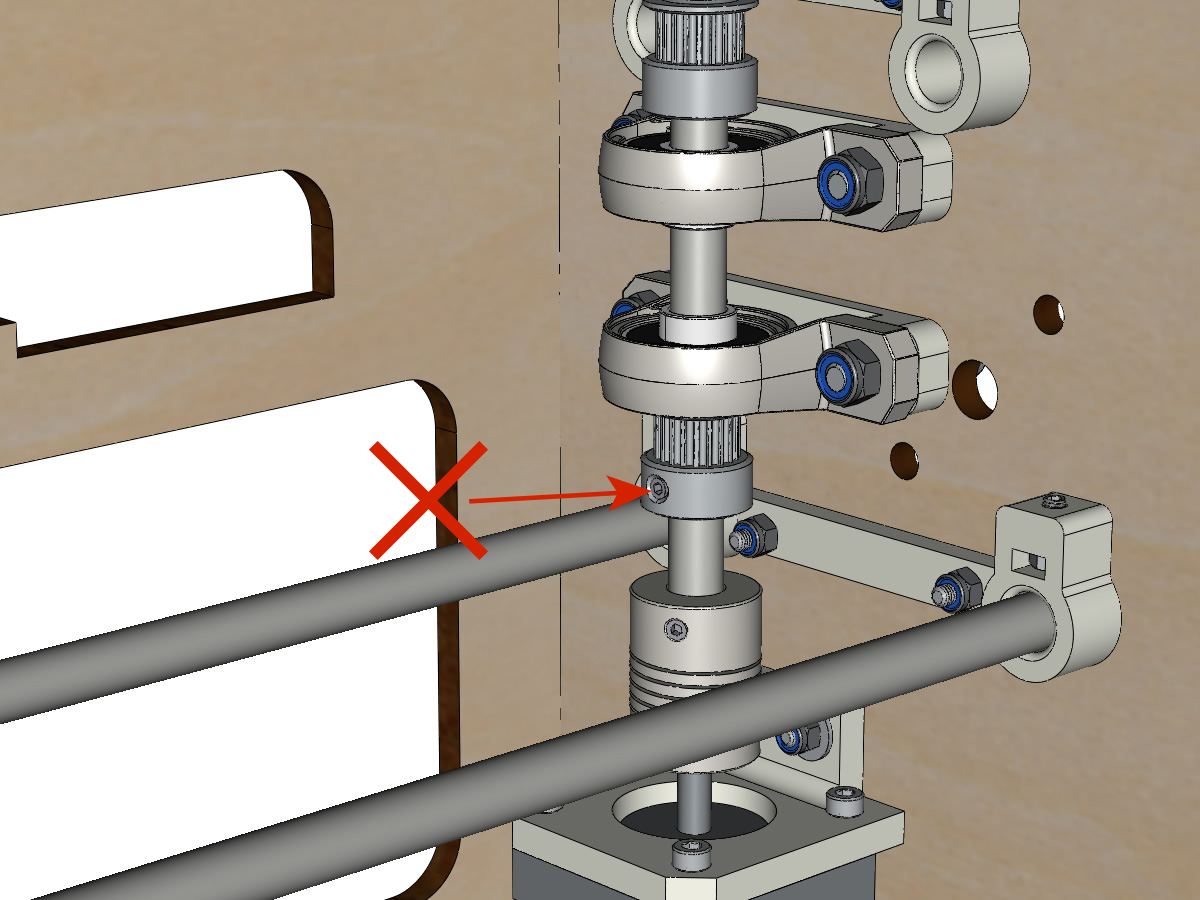
Y axis mounting (step 1)
- Equipment:
2 KFL8
4 screws M5-18
4 M5 NYL nuts
4 rondelles M5
1 GT2 20 teeth boron 8mm pulley
1 smooth rod Ø 8mm, length: 364mm
1 closed GT2 belt 200 or 220 mm (according to the Y motor support)
Fix the KFL8 on the left side with 2 M5-18 screws, 2 M5 washers and 2 M5 NYL nuts.

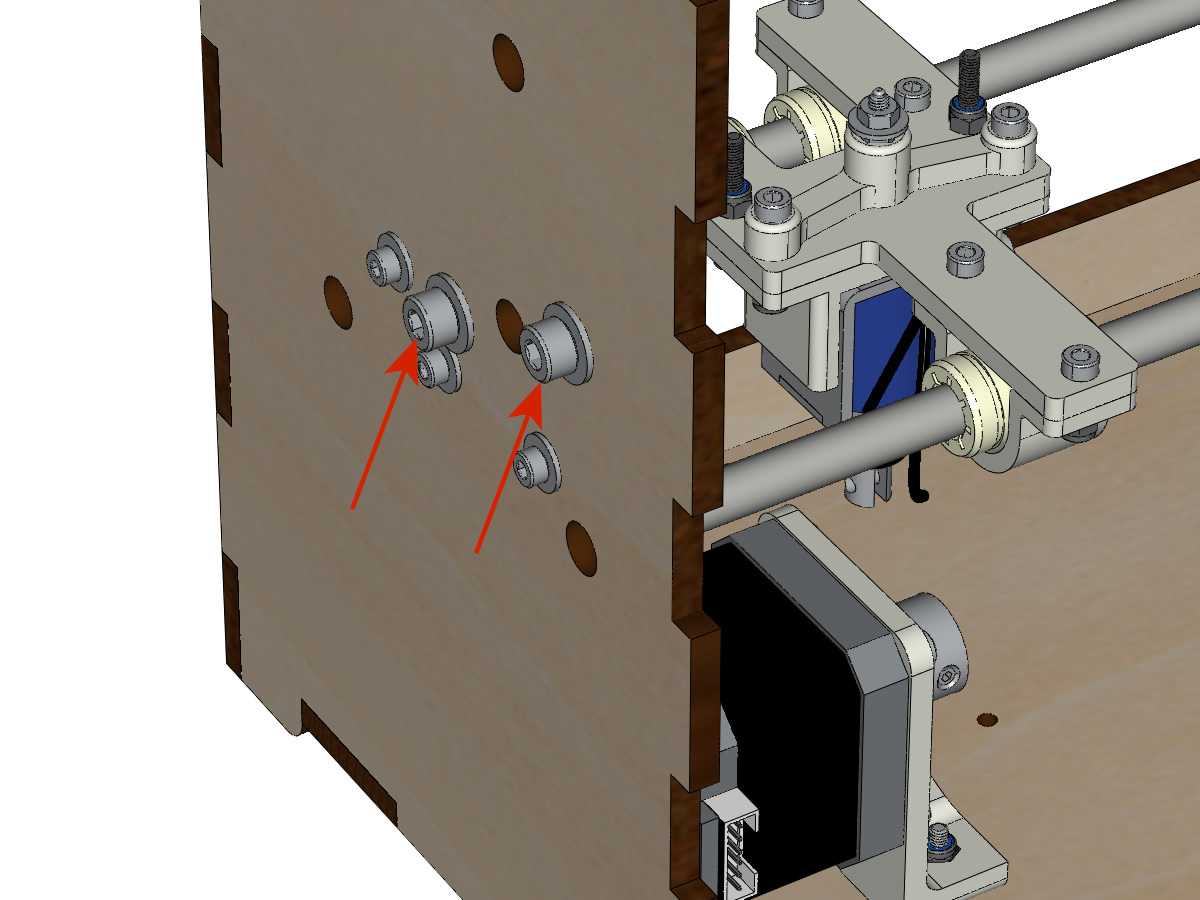
Fix the KFL8 right on the body with the KFL8_support, 2 screws M5-18, 2 washers M5 and the 2 nuts M5 NYL.

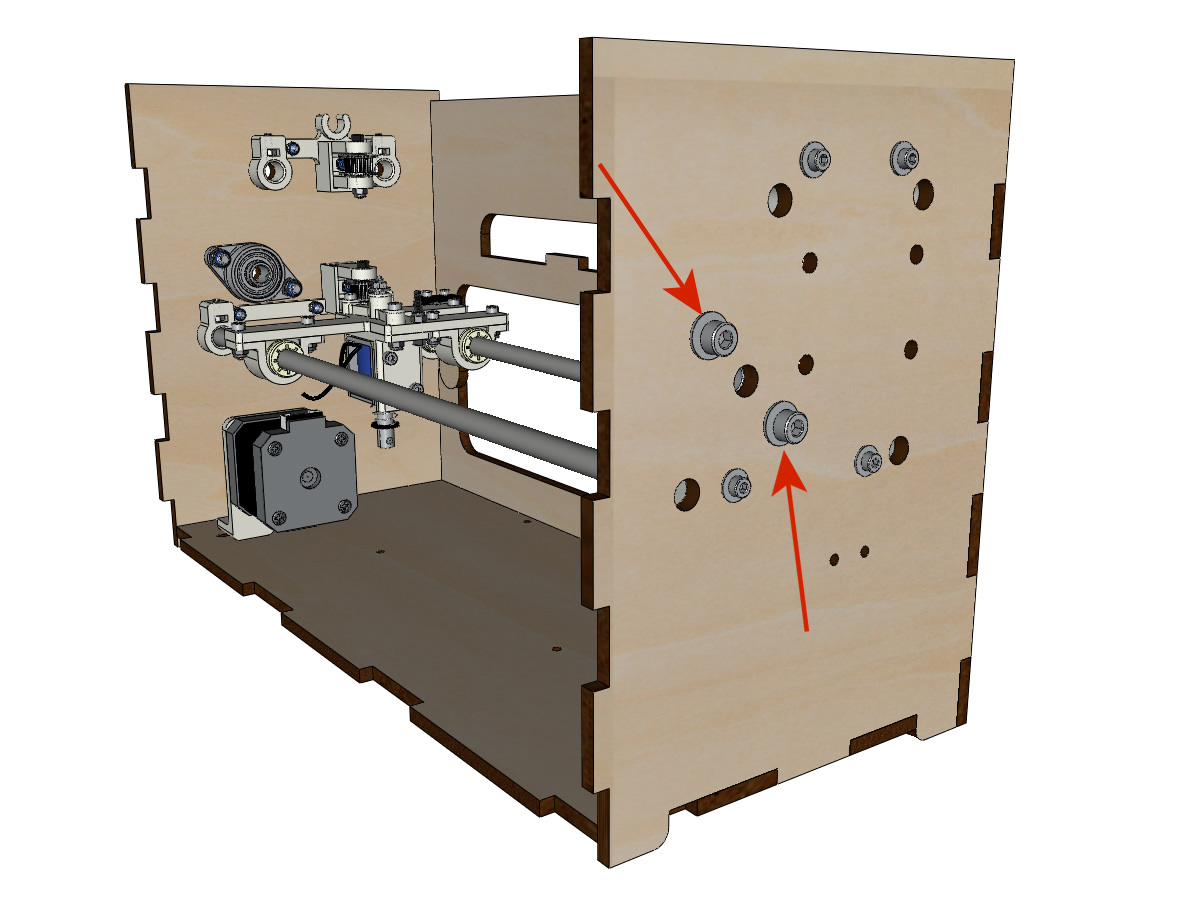
Thread the smooth bar halfway through the left side through the body and the KFL8.
In order, thread the GT2 20 tooth boron 8mm pulley, the closed belt and the 2 ROLL_joint (pay attention to the position of the O-ring). Put the belt closed on the pulley of motor Y and on the pulley of the axle.
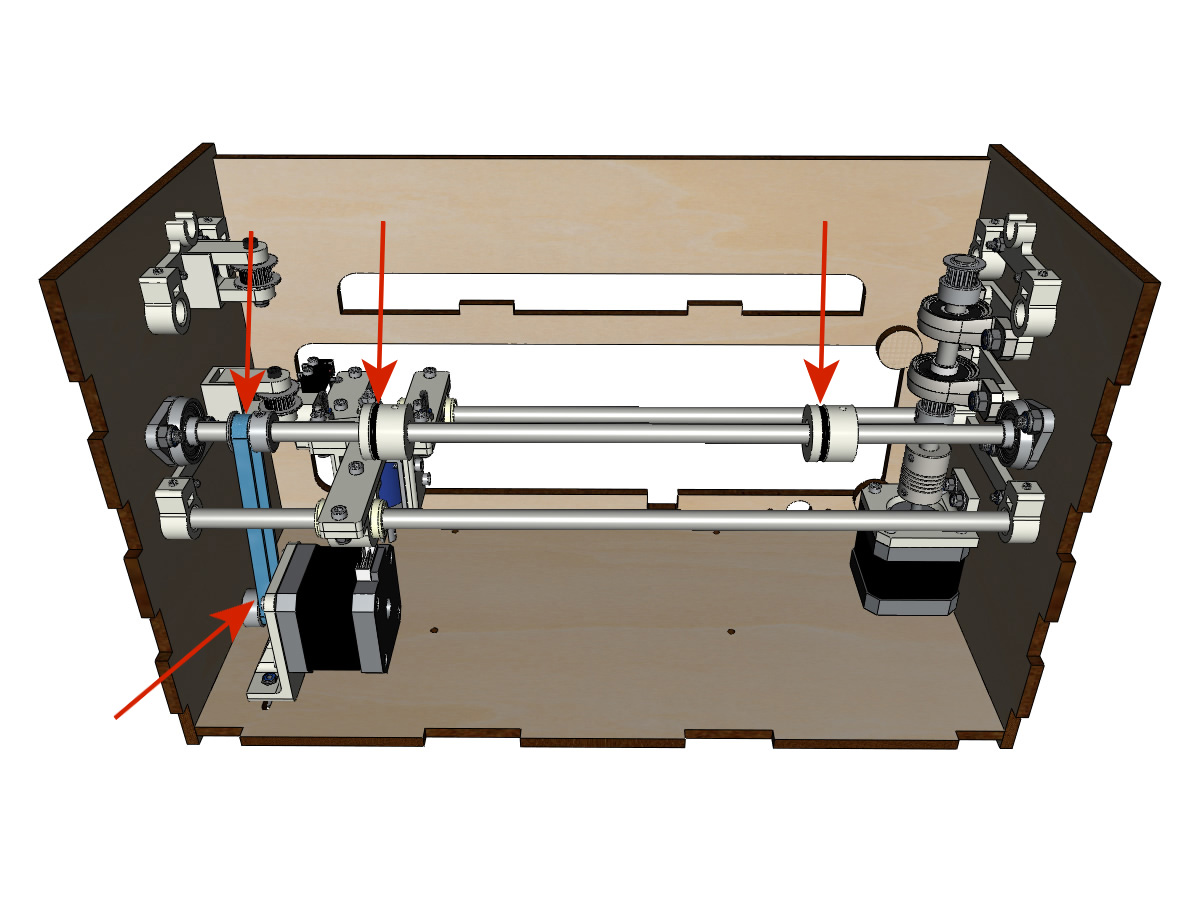
Press the axle into the right KFL8 and cross it so that it protrudes ± 12mm from the body.

Tighten the screws of the KFL8 rings.
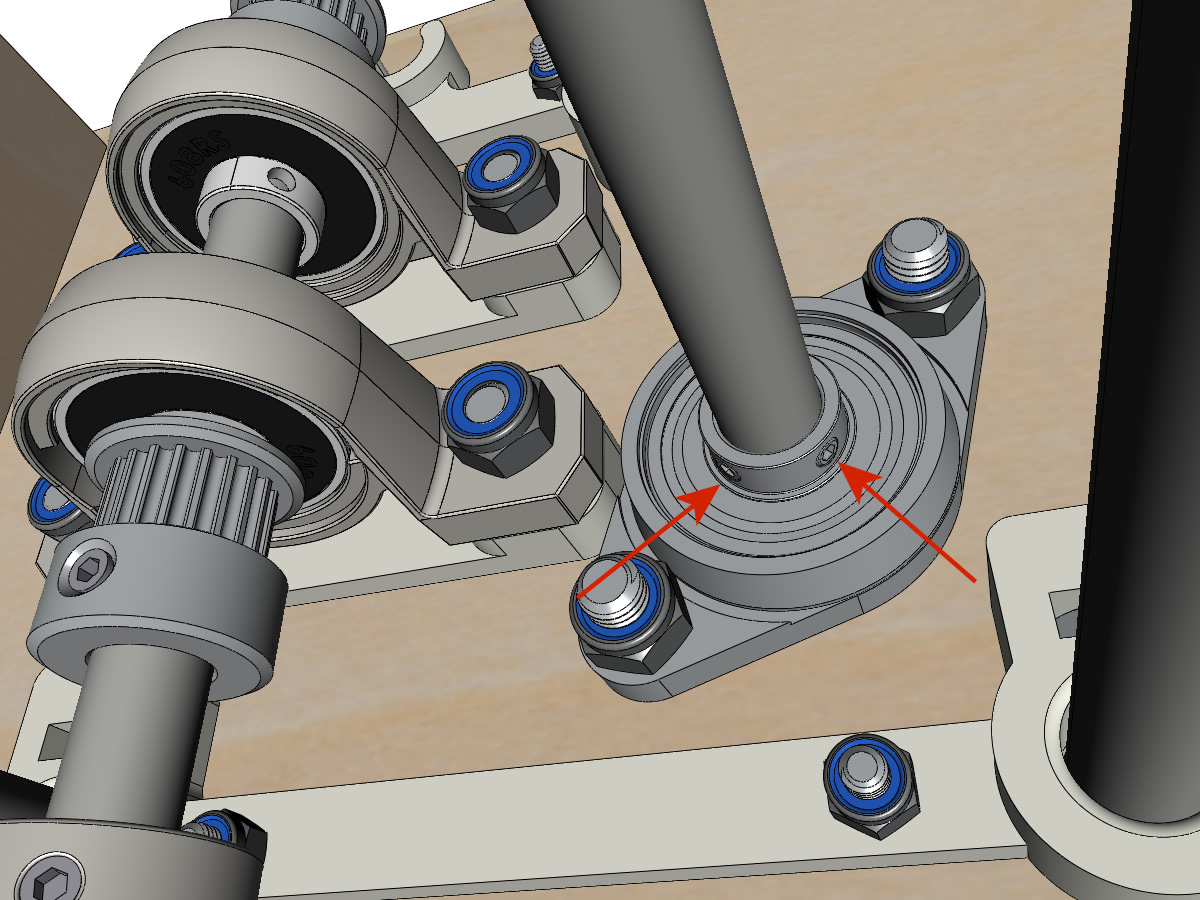
Mounting the Y axis (step 2)
Rotate the motor pulley by hand so that the pulley on the shaft aligns vertically with the motor pulley.
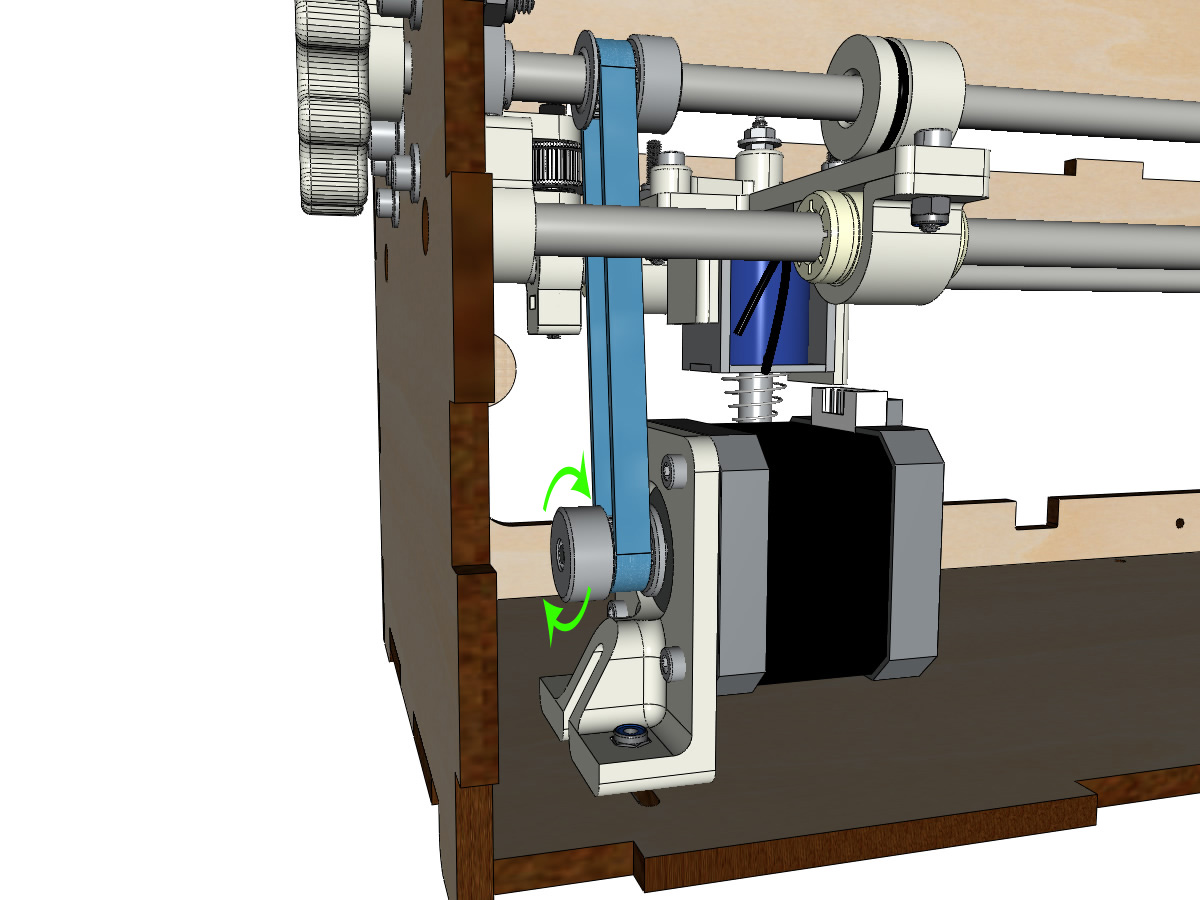
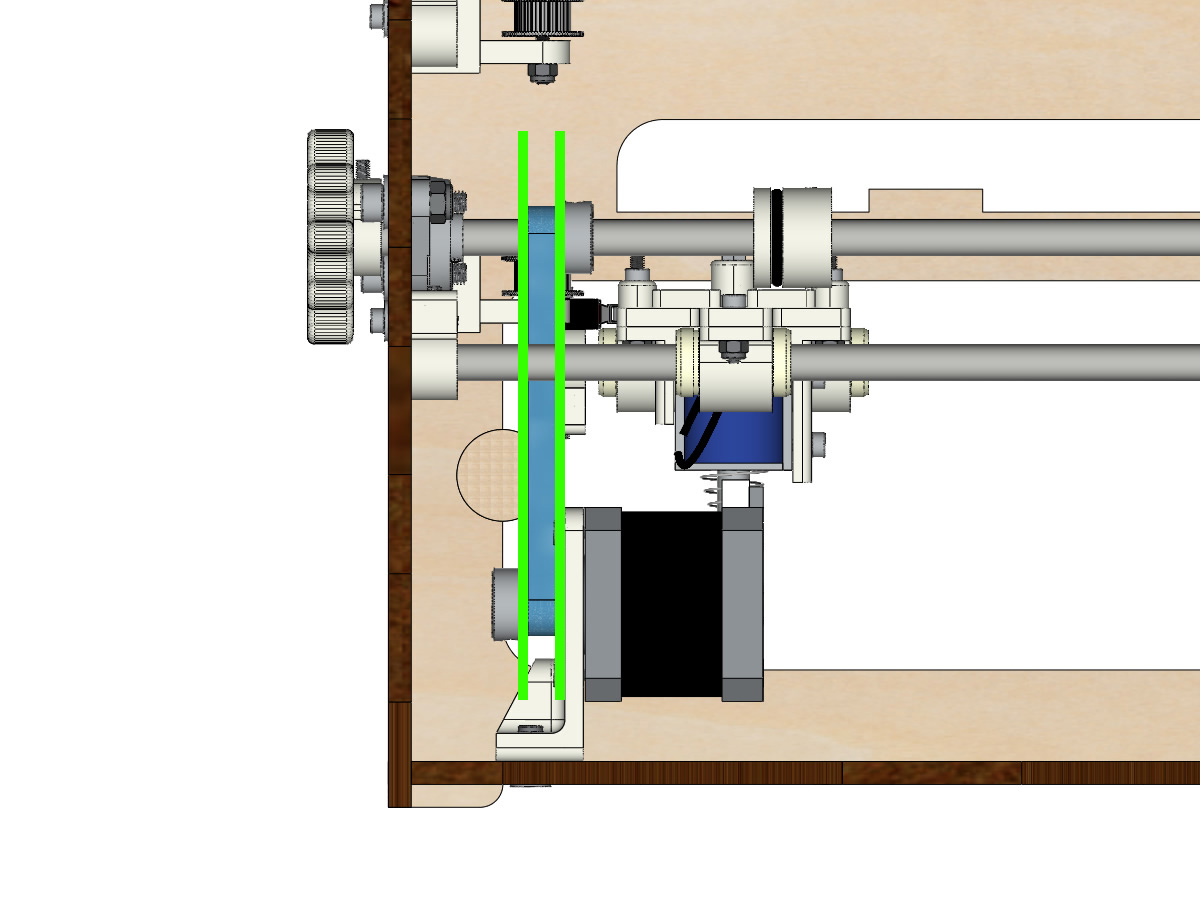
Move the Y motor / support assembly along the oblong holes under the body to tension the closed belt and tighten the 2 screws.
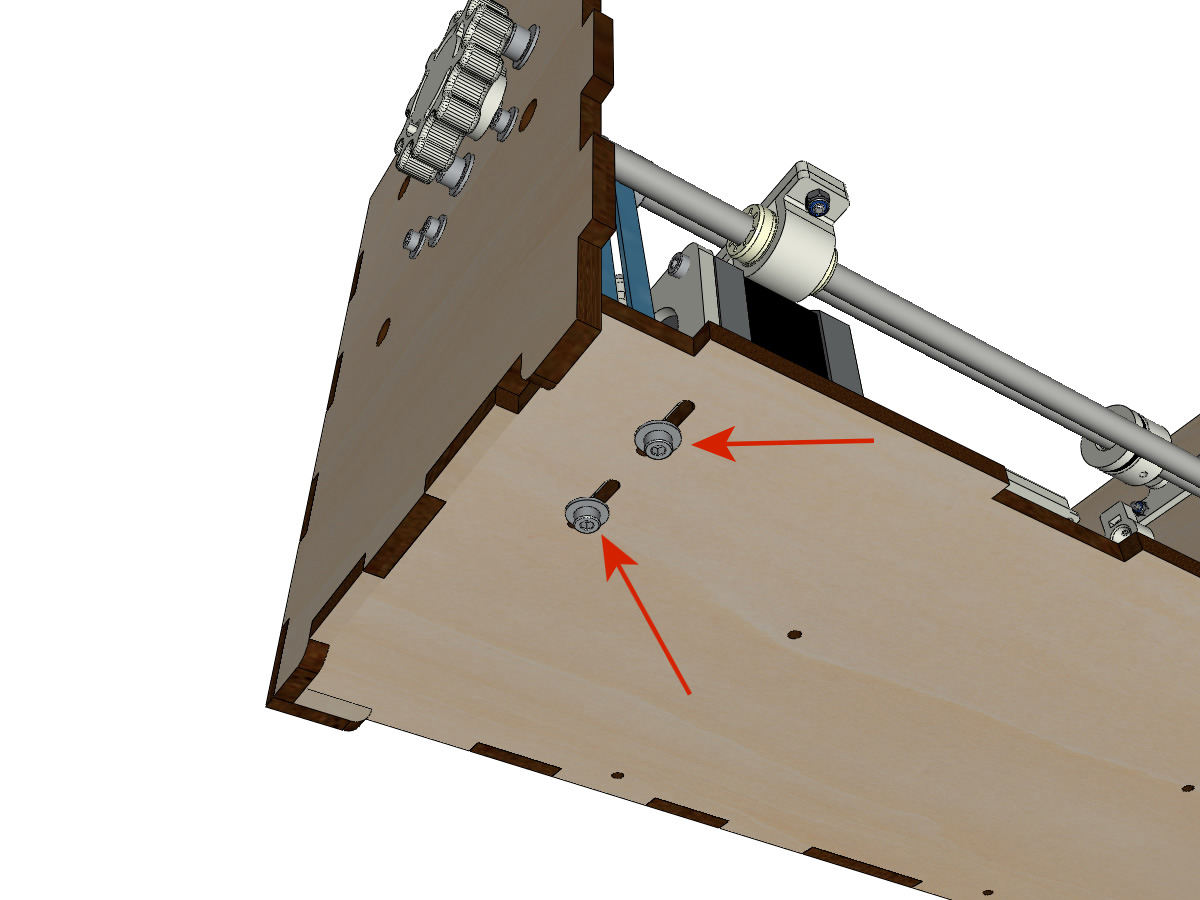
Tighten the 2 screws of the pulley of the axle.

Assembling paper guides on the plate
Equipment:
3D printed parts : PAPER_GUIDE_left
3D printed parts : PAPER_GUIDE_right
PAPER_support (laser cut 5mm plywood).
4 M3-16 screws
4 M3-14 screws
8 wide M3 washers
8 M3 NYL nuts
Note
M3-16 screws (M3-18 if you don’t have M3_16) are used for the holes where there are 2 thicknesses of wood.
Assemble the paper guides on the plate with the M3-16 screws and M3 NYL nuts.

Left part.

Repeat the operation for the right side.
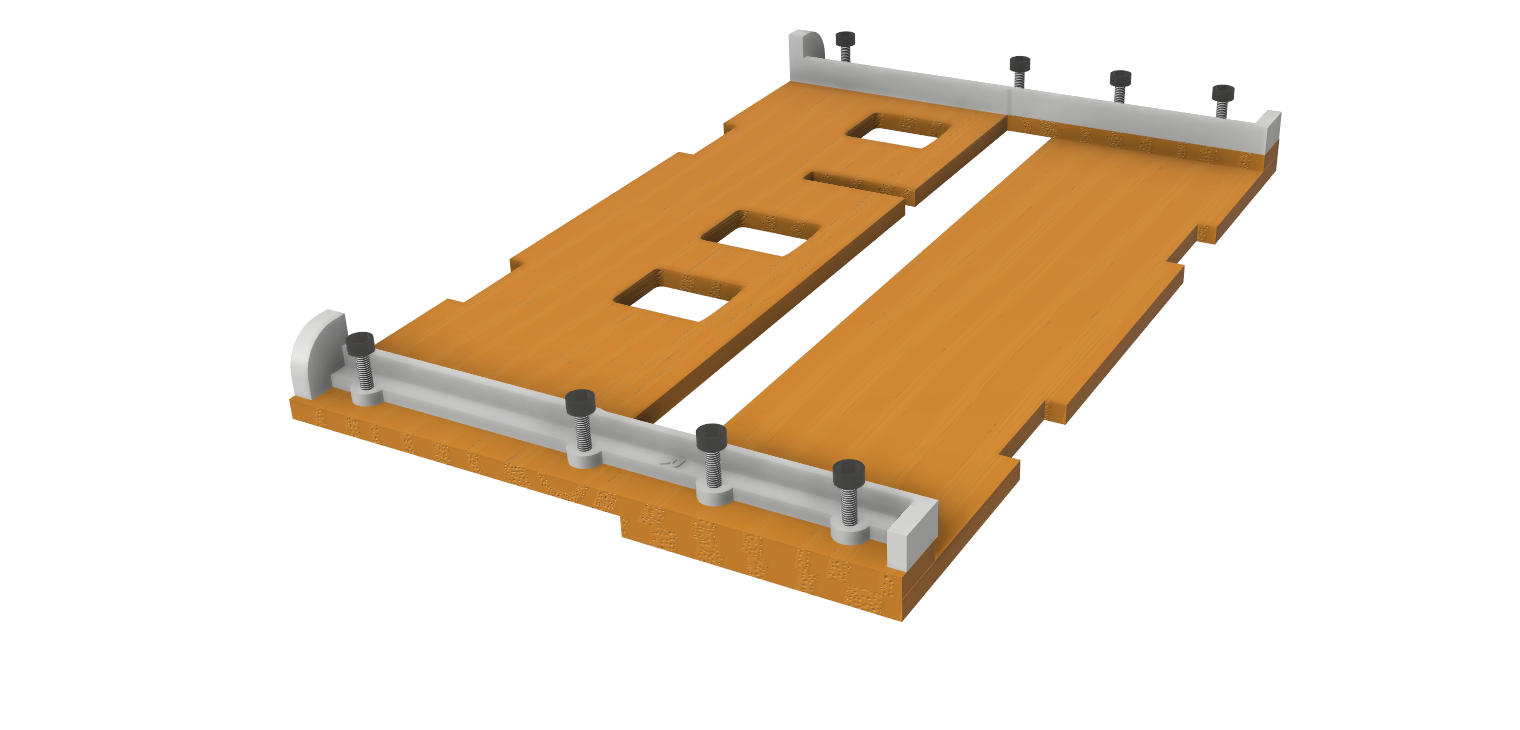
Check that you can put a sheet of paper on the tray without that the sheet warps. If the sheet warps, try to remove the paper guides before clamping.
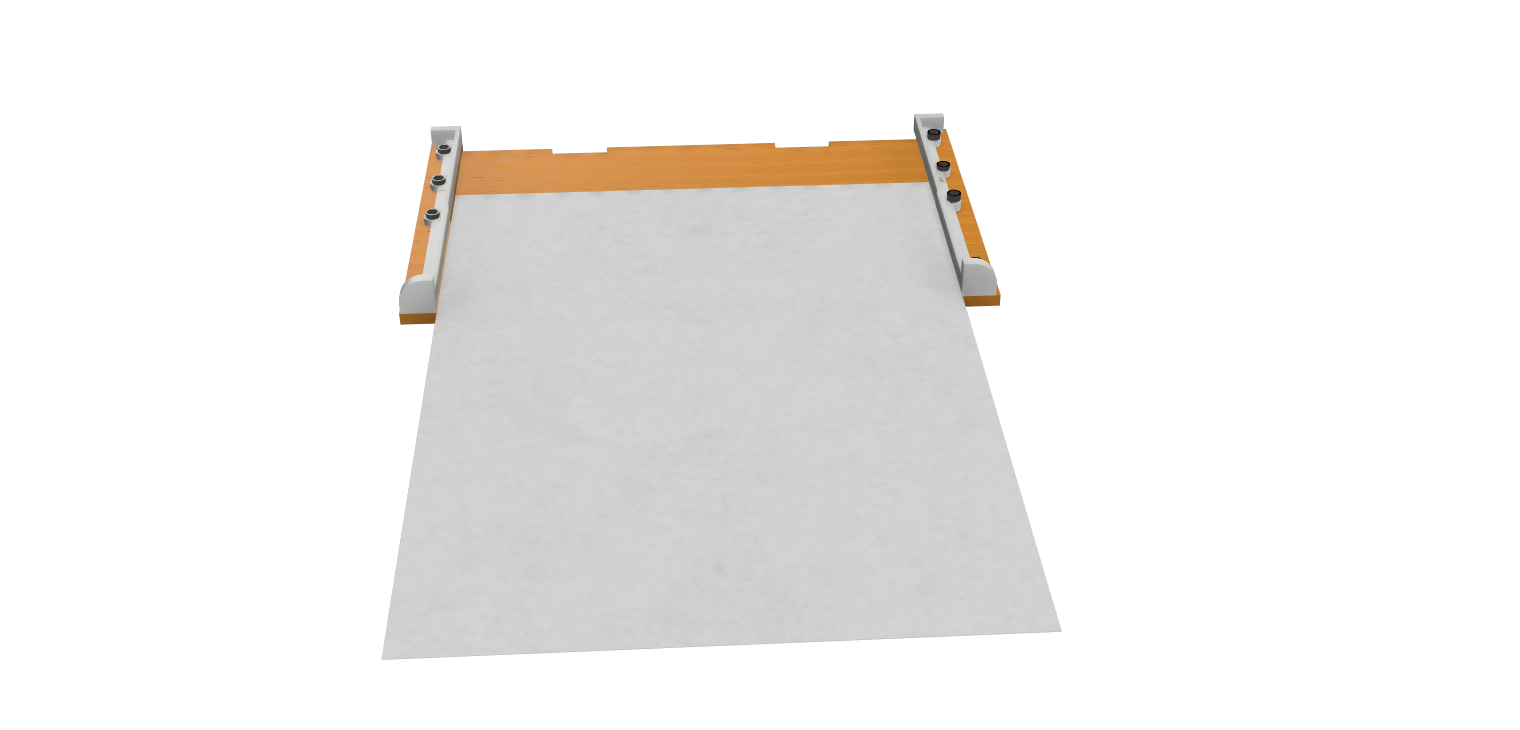
Bonding of the paper plate
Equipment:
PAPER_support (laser cut 5mm plywood).
3 Prepared paper rolls (with gasket and screws)
Note
Glue the plate only if you are sure of the mounting that is in below. If you’re not sure, you can just position the support plate, you will bond it at the end when The embosser will work.
Glue the notches that will be in contact. Insert the plate from the front and hold it firmly with tape during the drying time.
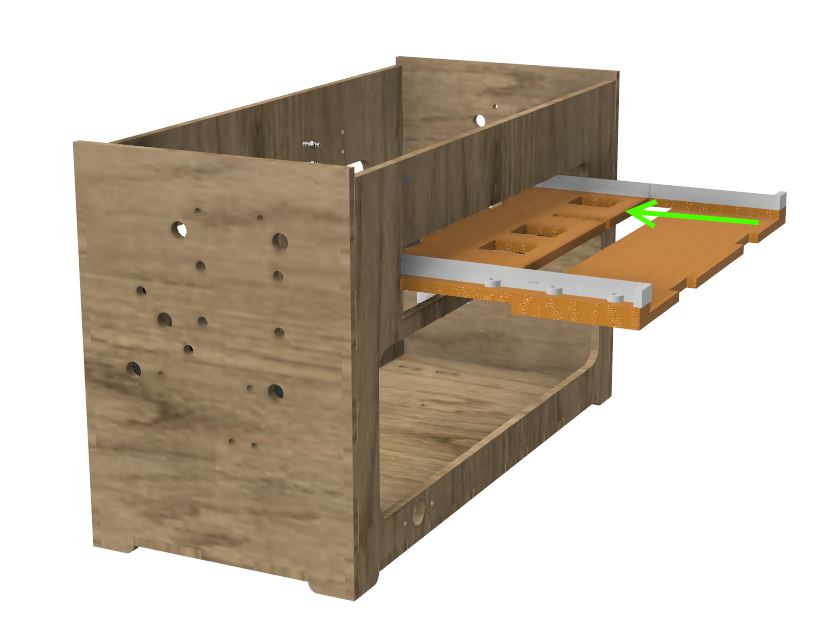
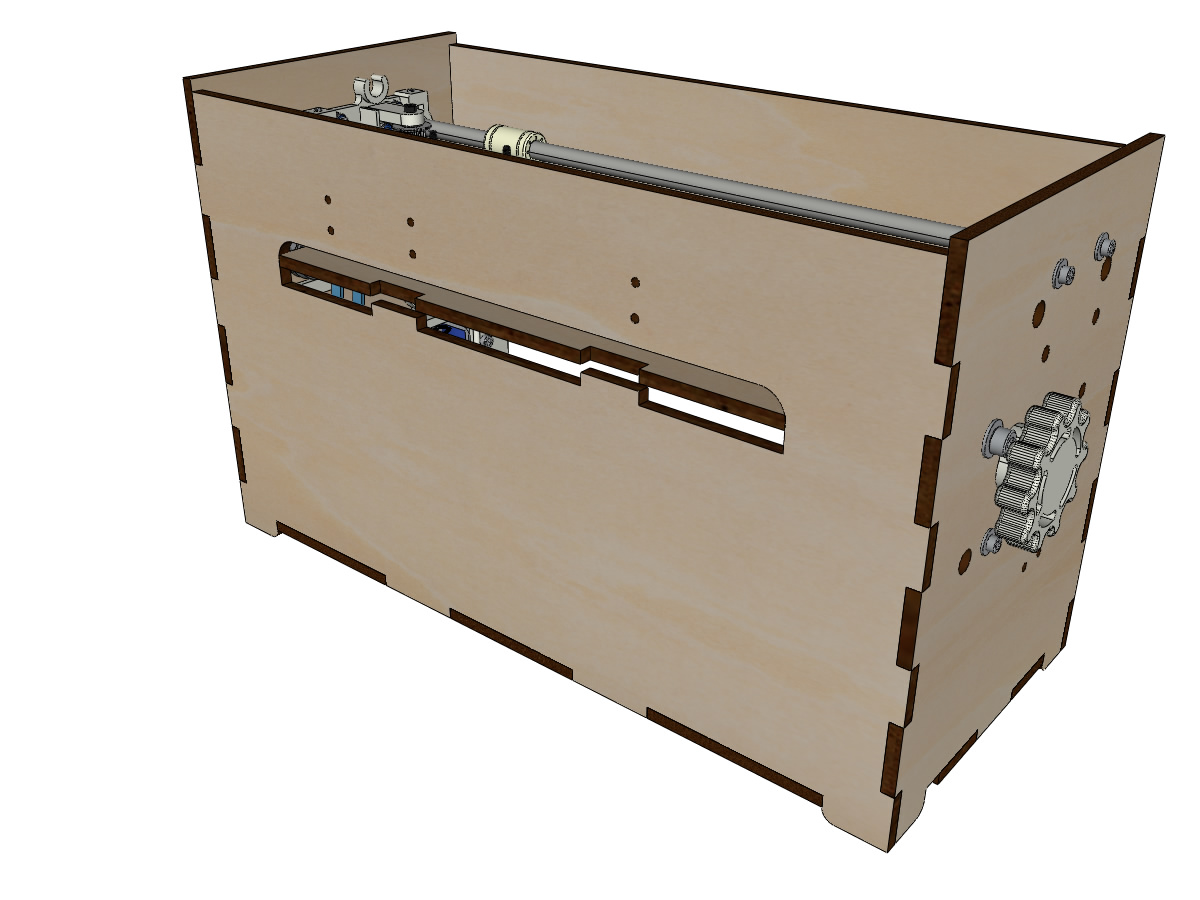

Mounting the top cart (step 2)
Equipment:
2 smooth bars Ø 8mm, length: 330mm
Thread the bars halfway through the outside of the crate.
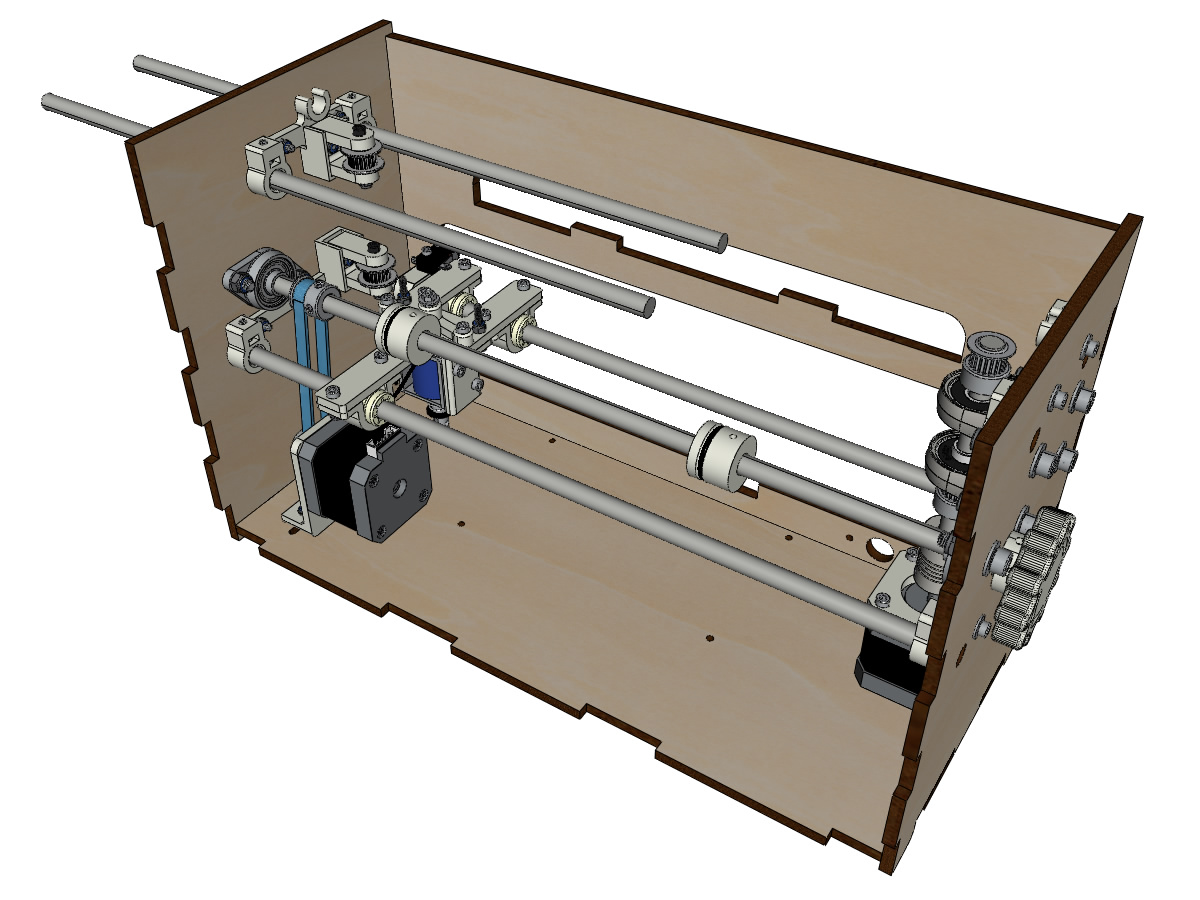
Thread the top trolley over the rods.
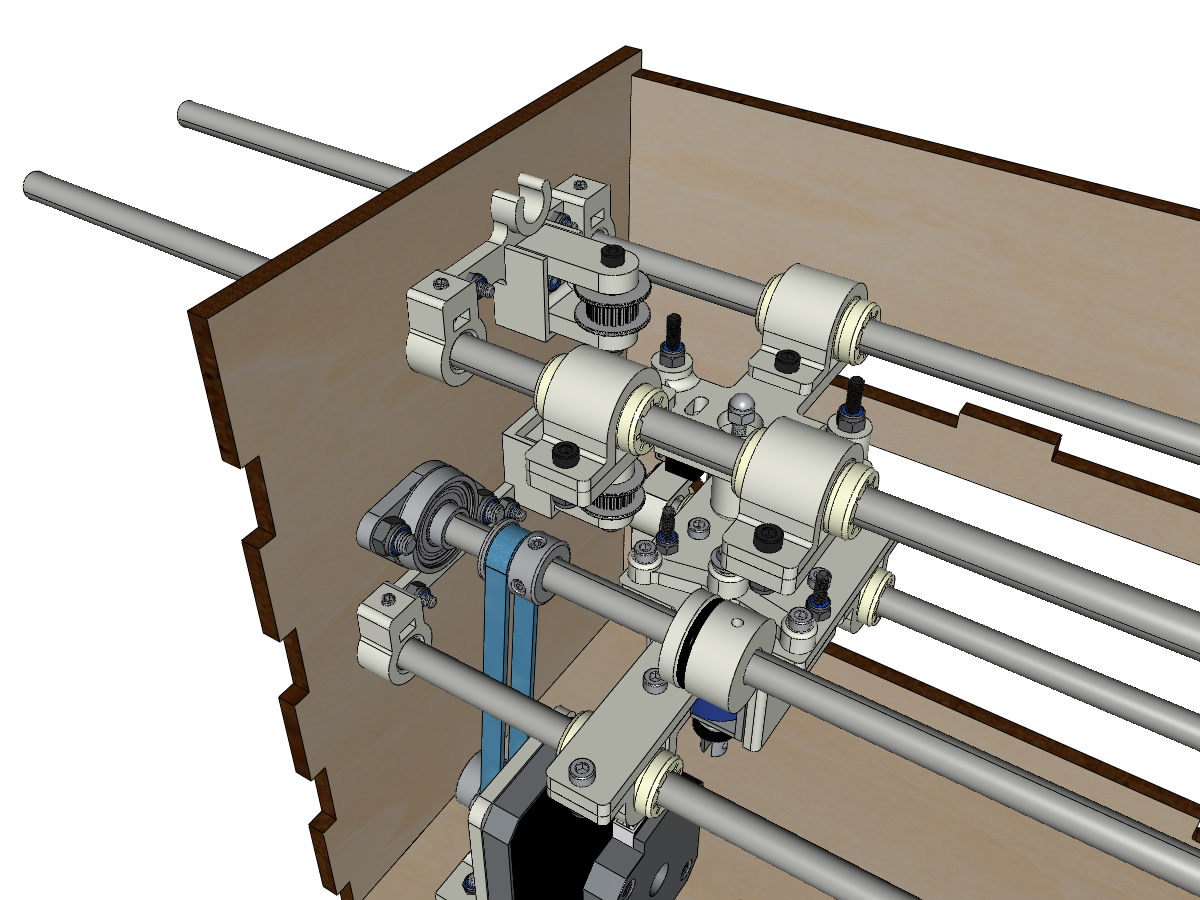
Finish putting on the bars.
Note
The edge of the wood should remain visible.
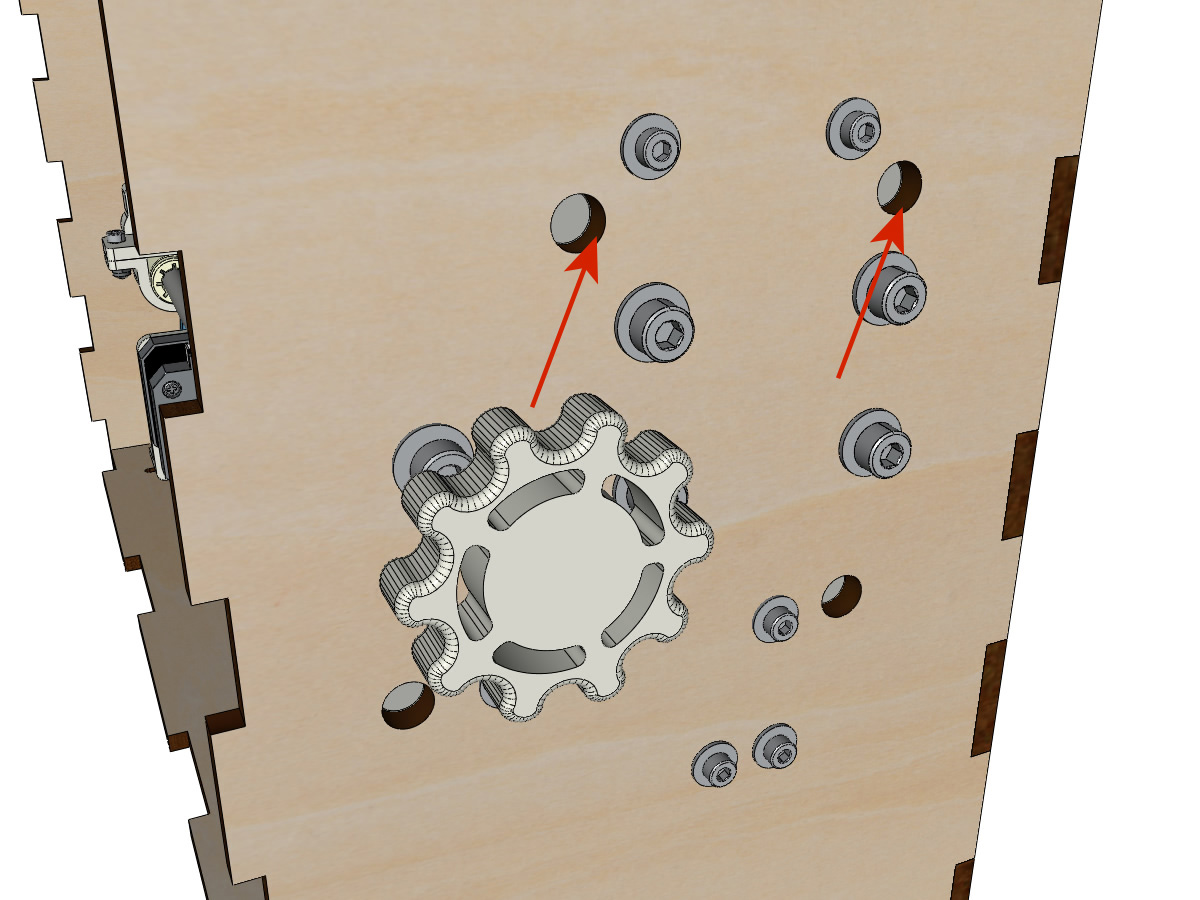
Tighten the axle holder screws on the body on the left and right.

Screw the grub screws of the axle supports on the left and right.
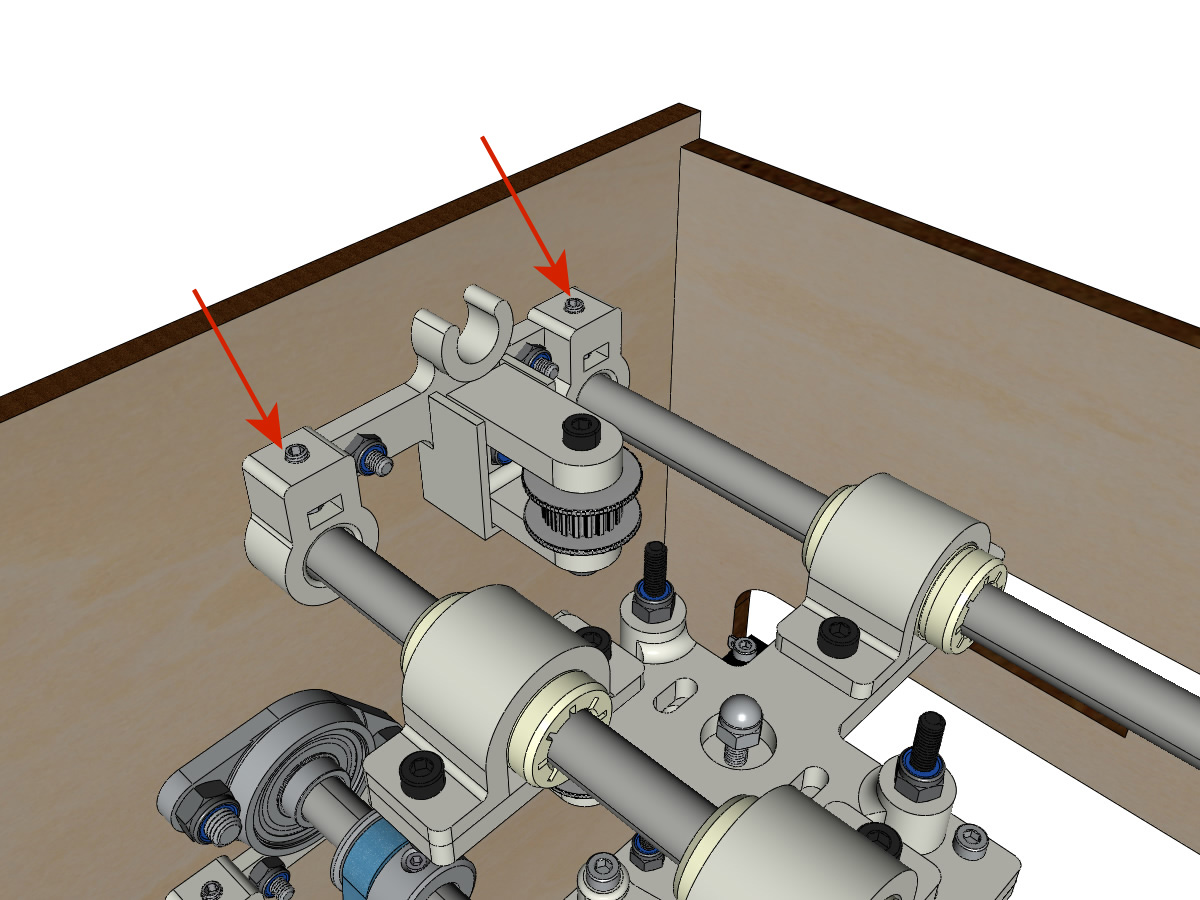
Laying the trolley strap up
Equipment:
1 belt GT2 length ± 620mm
2 necklaces
Using a collar, attach the strap around the carriage screw with the teeth facing out.

Pass the belt in the free pulley then the pulley of the vertical axis.

Tension the belt while holding the carriage and secure the second end of the belt to its screw with a collar.
Finish stretching the belt with the screw on the outside of the body.
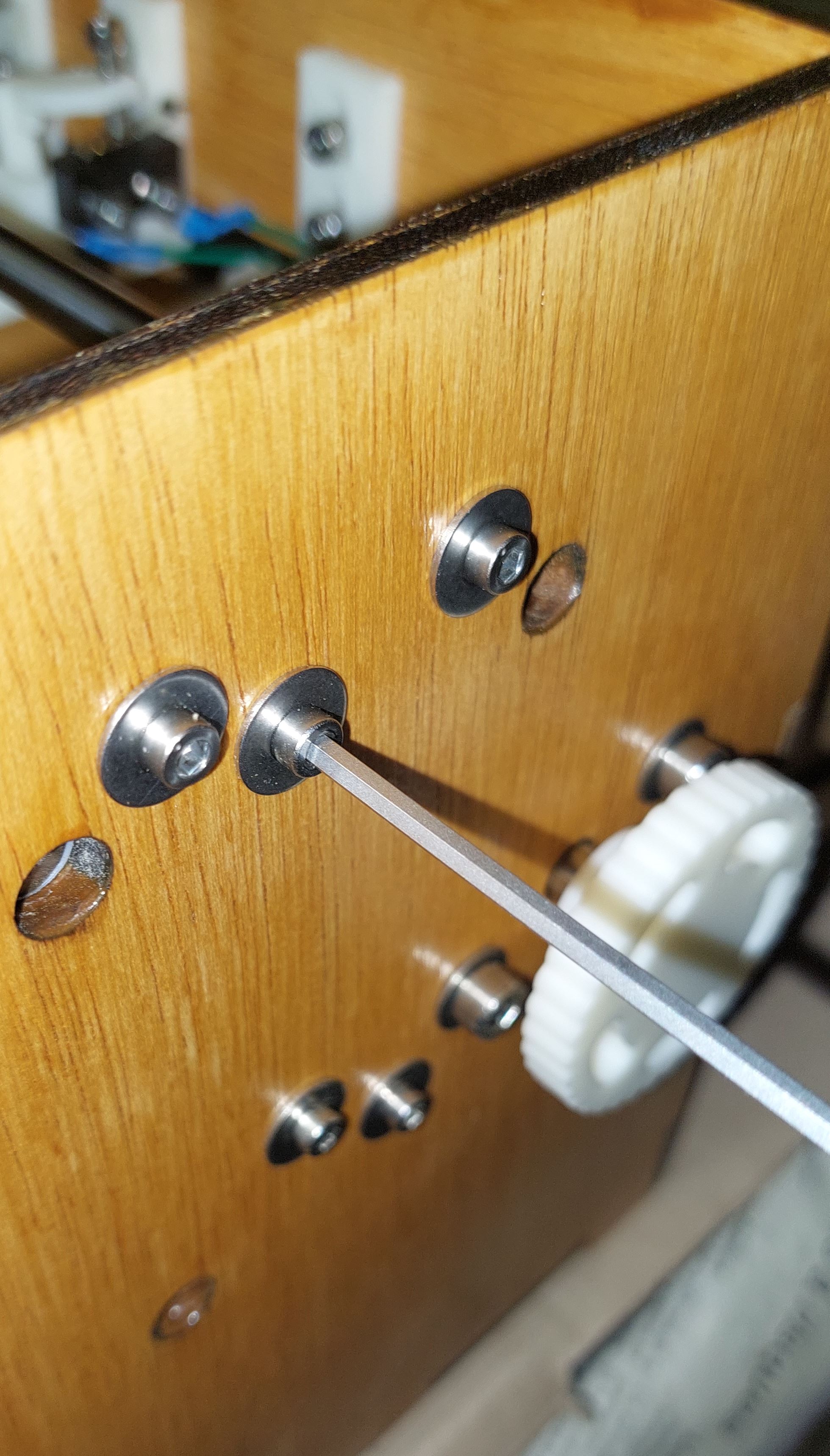
Assembly of the paperweights (step 2):
Equipment:
3 CLIPBOARD mounted in step 1
6 screws M3-14
6 medium M3 washers
6 NYL M3 nuts
Note
The oblong holes in the printed parts adjust the pressure of the CLIPBOARD on the paper.
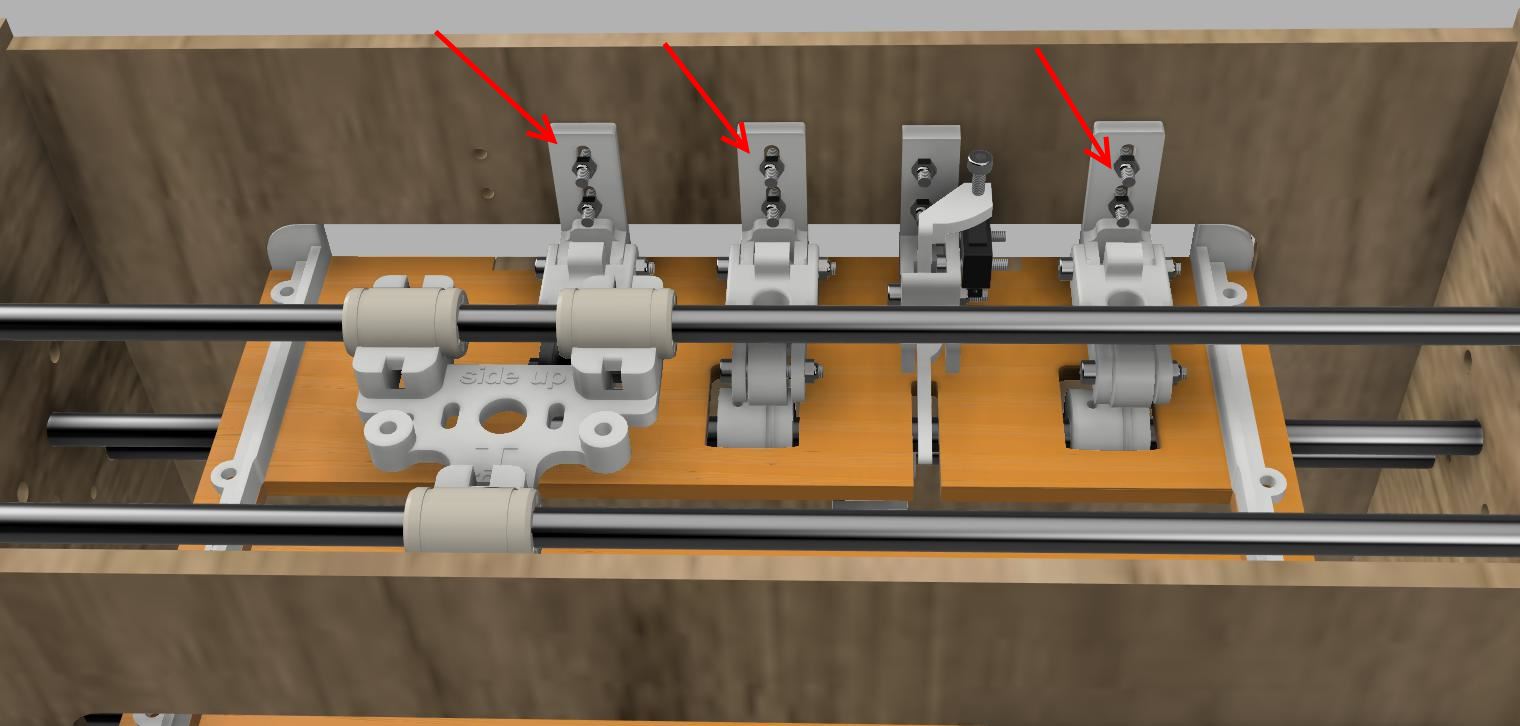
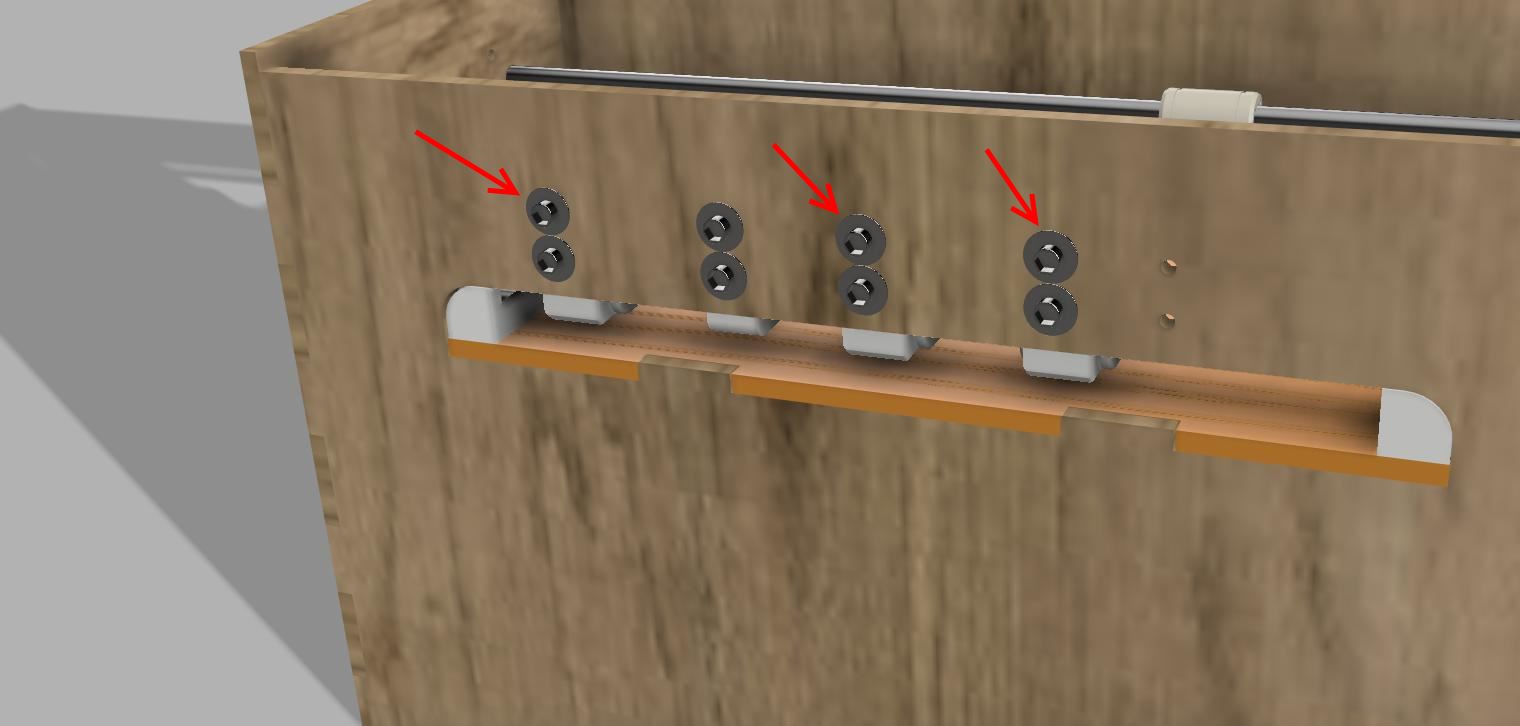
Assembly of the Y limit switch
Equipment:
3D printed part(s): ENDSTOP_Y_support, ENDSTOP_Y_lever
2 M3-14 screws
1 M3-12 screw
1 M3-20 screw
2 medium M3 washers
3 M3-NYL nuts
1 slatted limit switch
2 M2.5-14 screw
2 nuts M2.5 NYL
Note
On utilisera de preference un endstop avec le cable coudé.
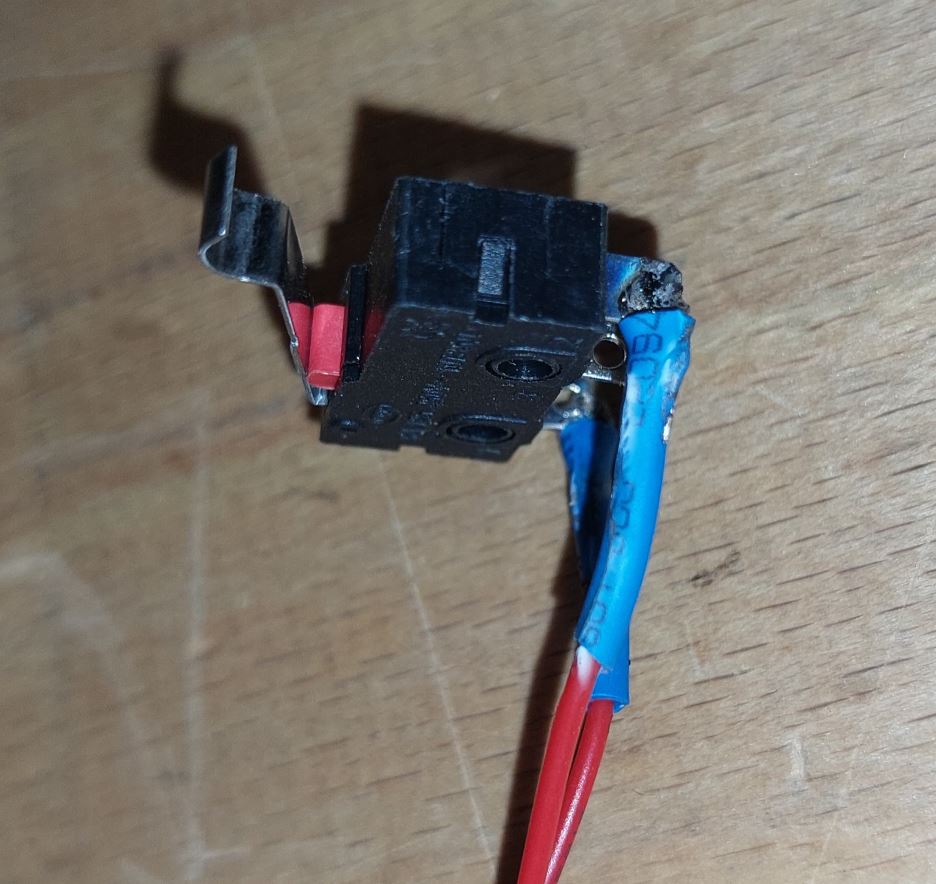
Tap the adjustment screw support with an M3 tap
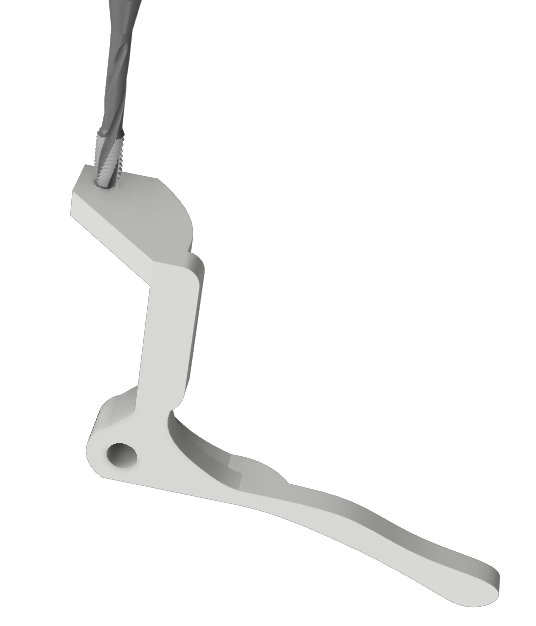
Position the lever ENDSTOP_Y_LEVER in the support**ENDSTOP_Y_support**.
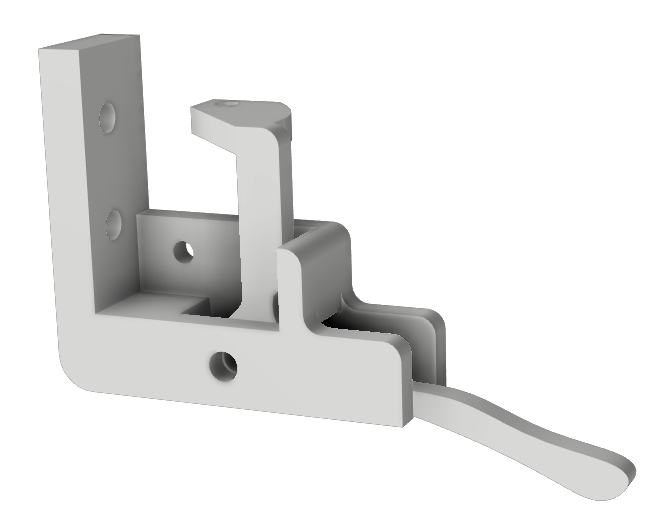
Fix the lever ENDSTOP_Y_LEVER to the support ENDSTOP_Y_support with an M3-20 screw and an M3-NYL nut
Note
Do not tighten the M3 nut, the lever must be able to rotate freely in his support.
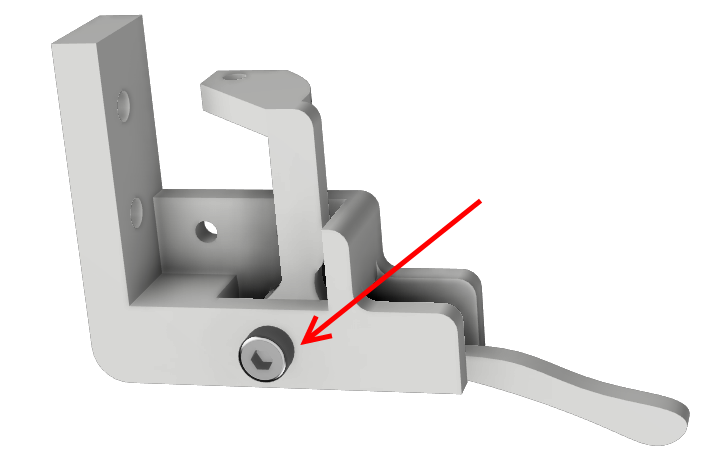

Assemble the limit switch and the SWITCH_Y_support using M2.5-14 screws and M2.5 NYL nuts.


Position the M3-12 adjustment screw on the lever ENDSTOP_Y_LEVER
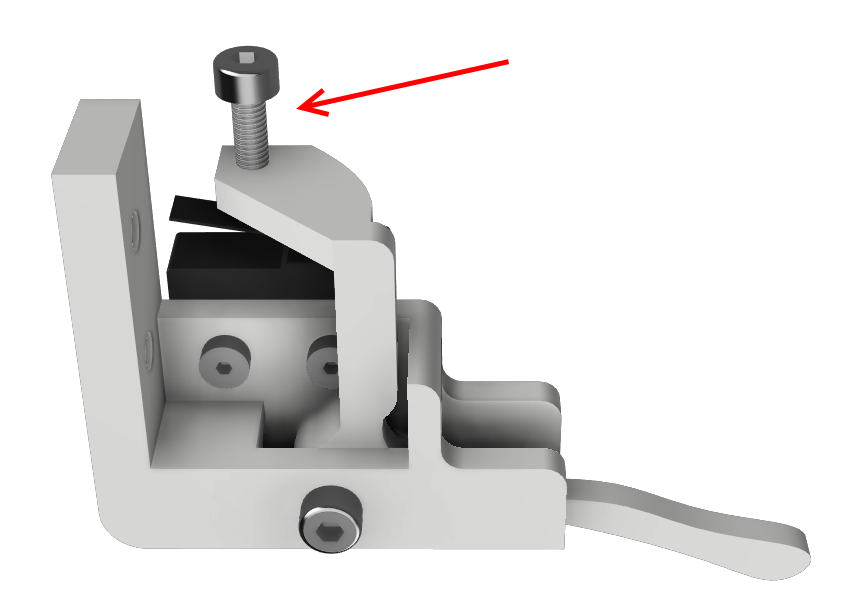
Assemble the limit switch assembly and the SWITCH_Y_support to the body using the M3-14 screws, M3 washers and M3 NYL nuts.
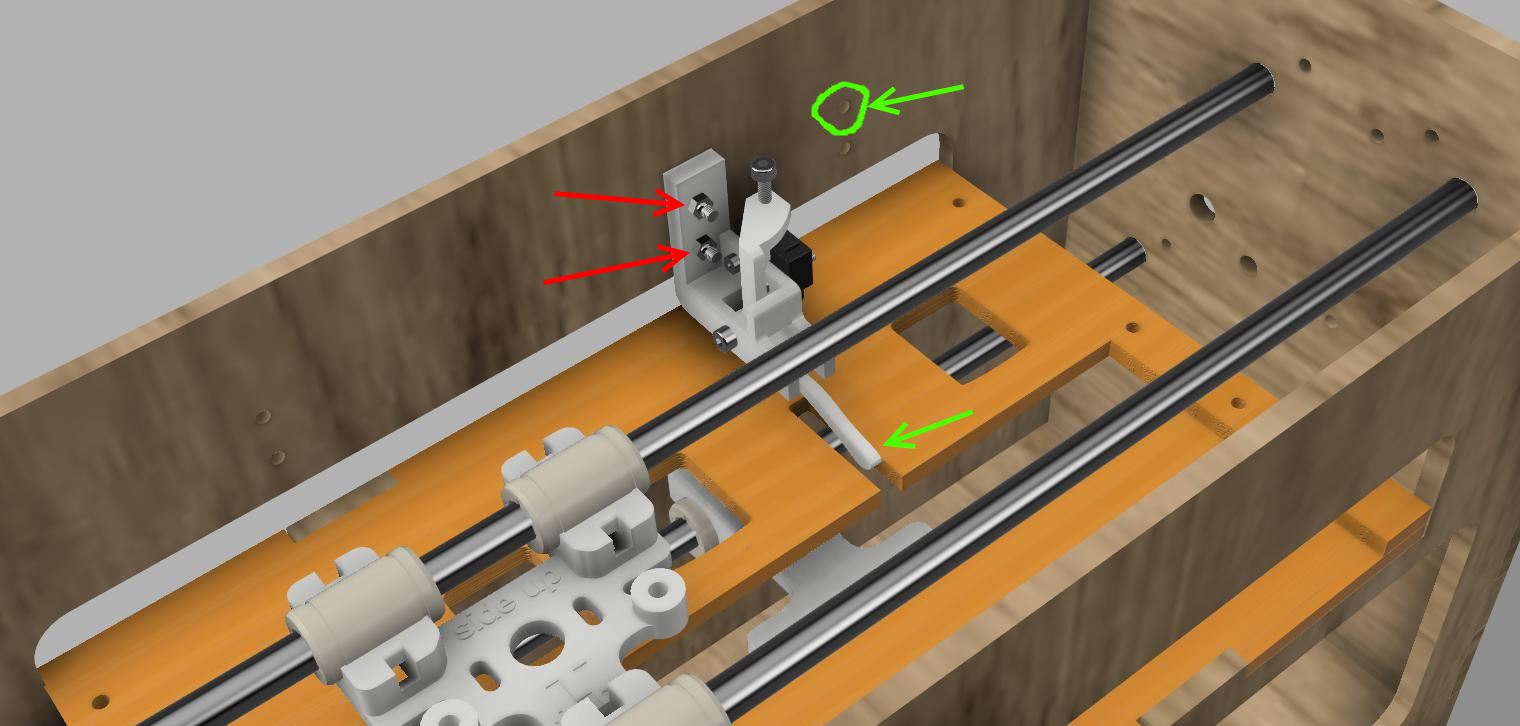
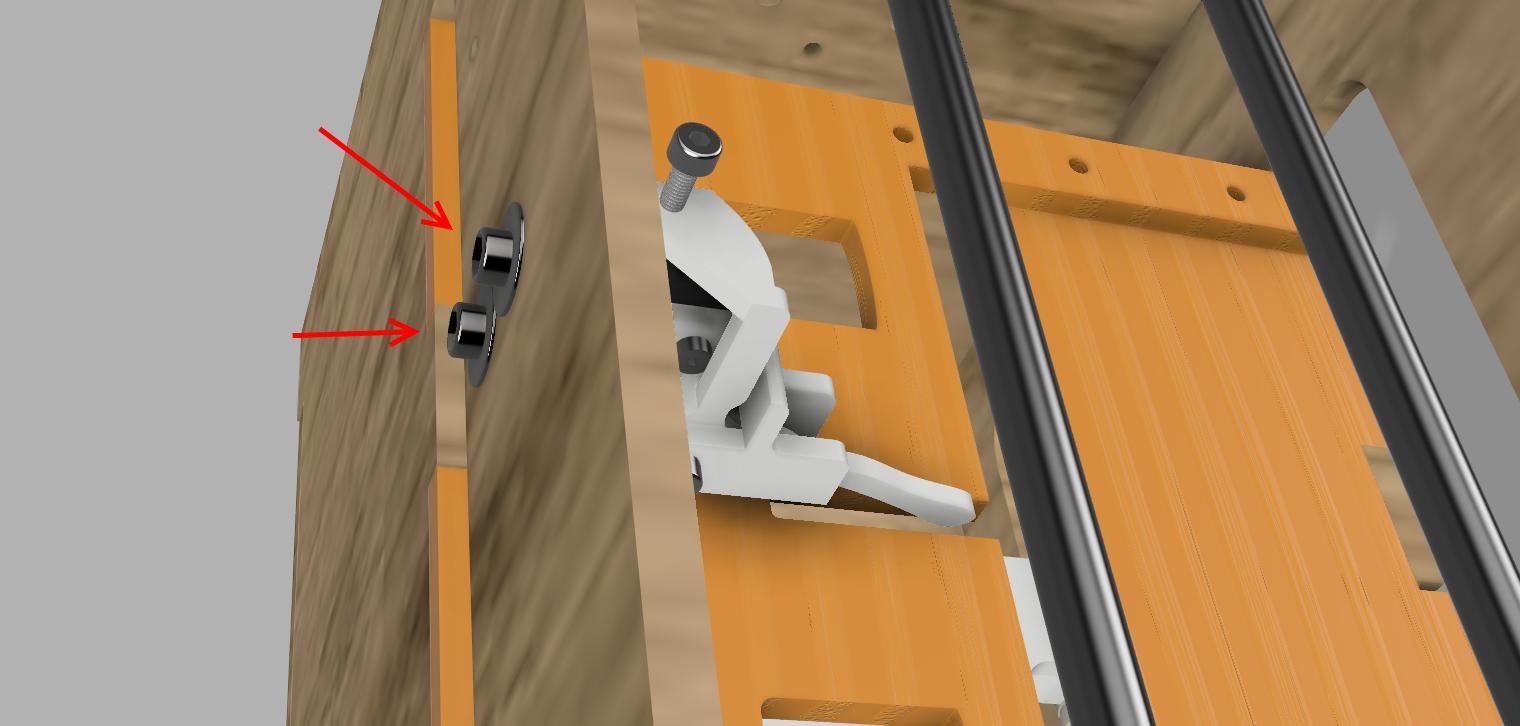
Fixing the clips on the lid
Equipment:
3D printed parts: 2 LID_LOCK
4 M3-14 screws
4 NYL M3 nuts
Assemble the 2 LID_LOCK on the cover using the M3-14 screws, M3 washers and M3 NYL nuts.
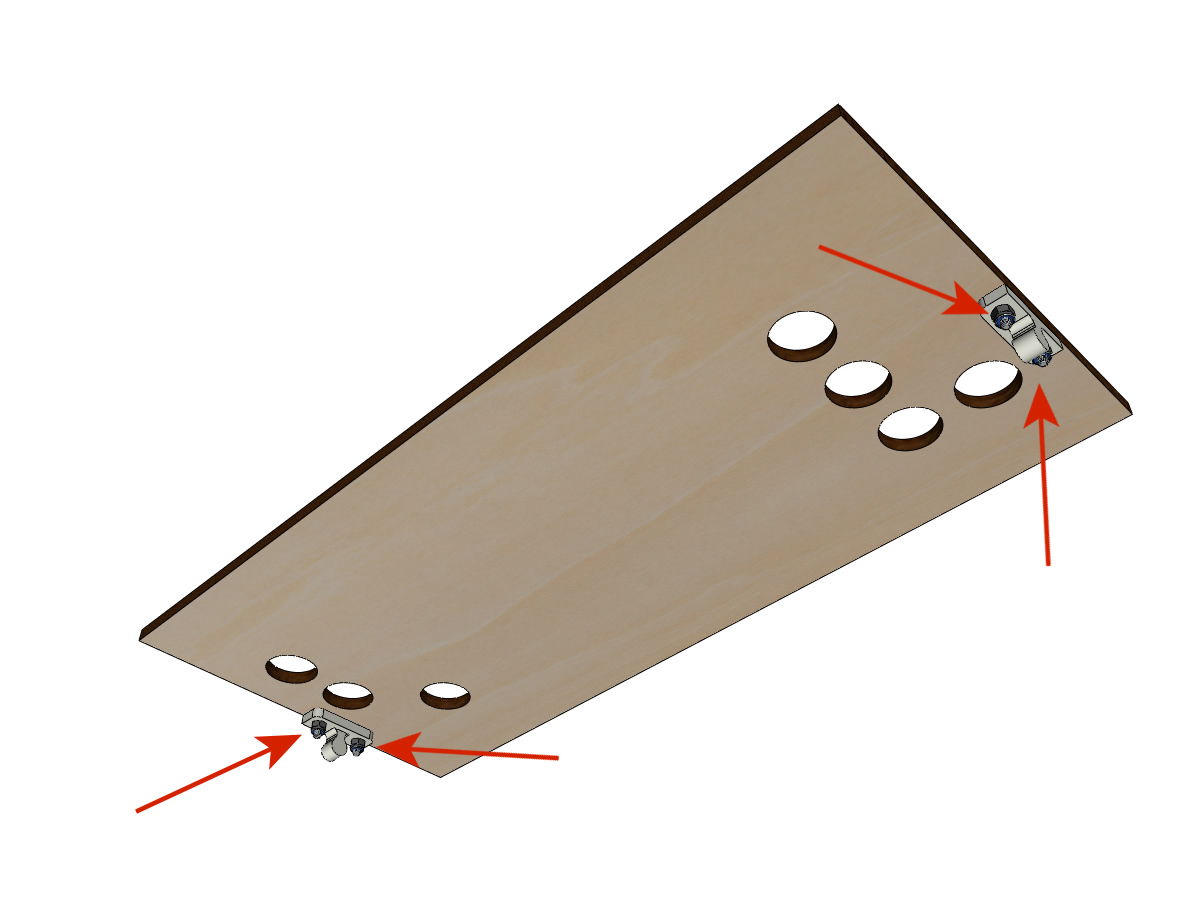

Fixing the plate for the power supply base
Equipment:
3D printed part: POWER_plate
2 M3-14 screws
2 M3 NYL nuts

Preparation des cables moteurs
2 cables moteurs XH 2.54 4 pins => 6 pins
Vérifier le schéma de cablage des cables. le cablage est le suivant
coté carte |
coté moteur |
|---|---|
1 |
1 |
2 |
4 |
3 |
6 |
4 |
3 |
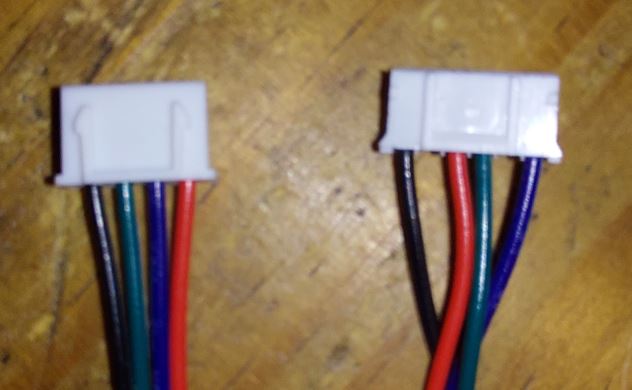
Montage de la carte électronique MKS 1.4
Equipment:
MKS GEN 1.4 card
4 spacer M3-12
4 medium M3 washers
8 screw M3-8
Assemble the 4 spacers on the card.
Note
To be able to carry out the final adjustments easily, we recommend wiring the card outside the chassis. Once the embosser is functional, you can mount the board in the embosser.
Cablage de la carte électronique MKS 1.4
General diagram:
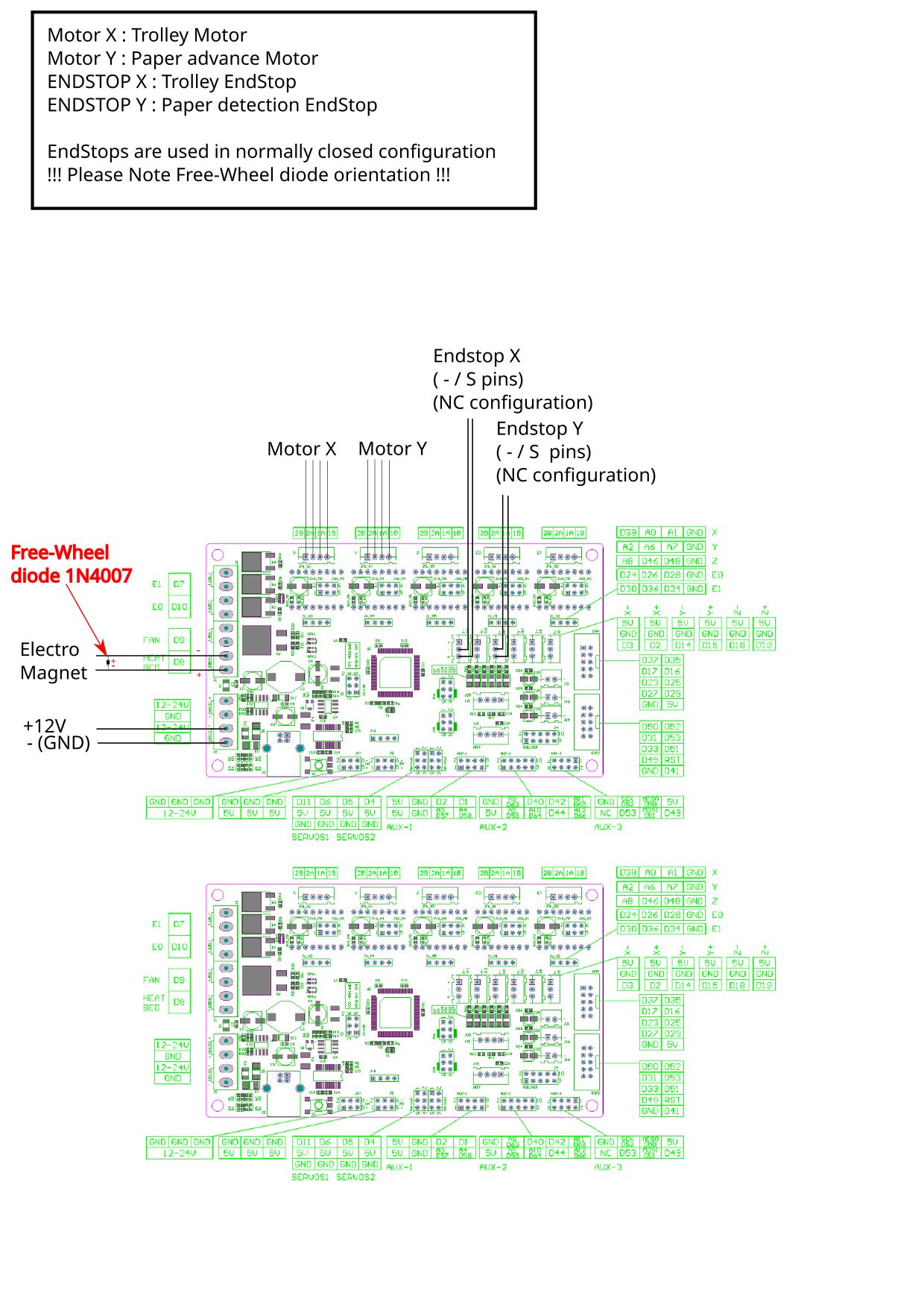
Photo of the assembled board
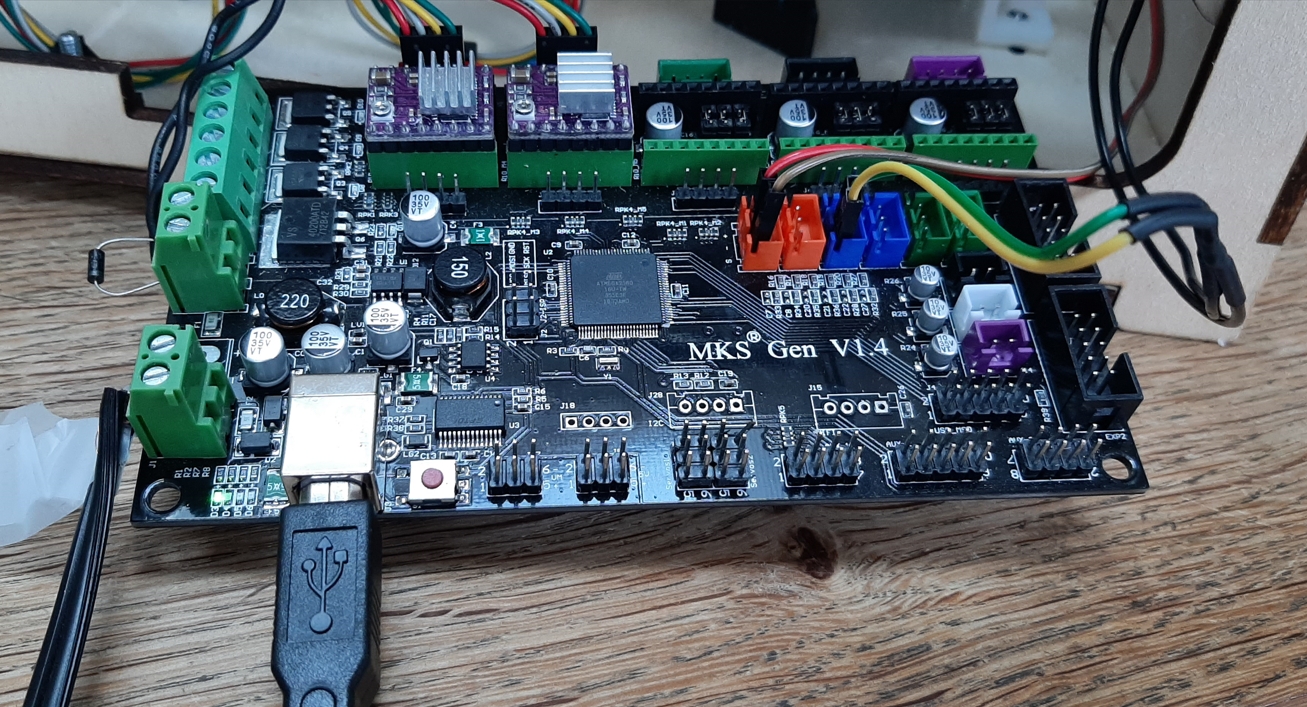
Laying the drivers on the electronic board
Equipment:
MKS GEN 1.4 card
2 DRV8825 drivers
6 jumpers
If the card is not supplied already equipped with jumpers, put in the places of the drivers of engines X and Y.
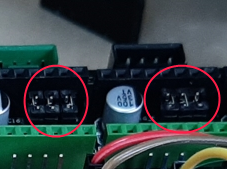
Push the drivers into X and Y slots.
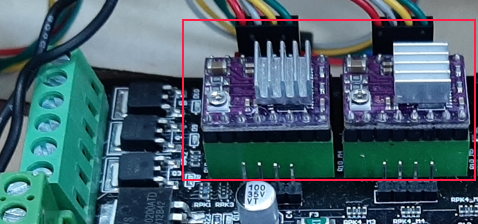
12V power wiring
place the 2 wires coming from the POWER_plate socket in the terminal block of the MKS board
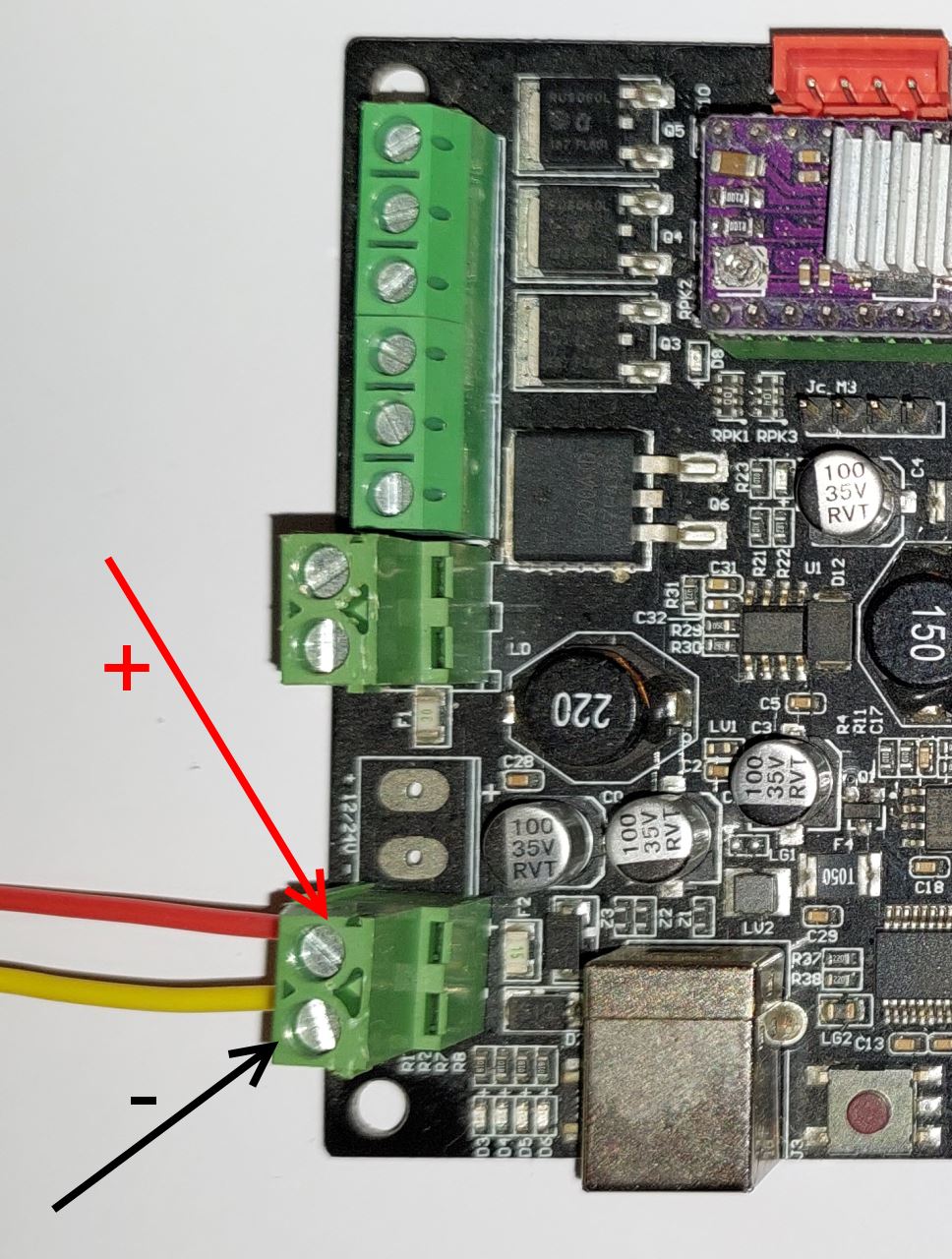
Adjusting motor drivers
Note
This step must IMPERATIVELY be carried out before wiringengines.
Check that you can connect the 12V power supply to the board (a last check to avoid sparks is better :-) )
Connect the 12 V power supply to the board.
for each driver, measure, with a multimeter, the voltage between the adjustment potentiometer and mass of the USB connection.
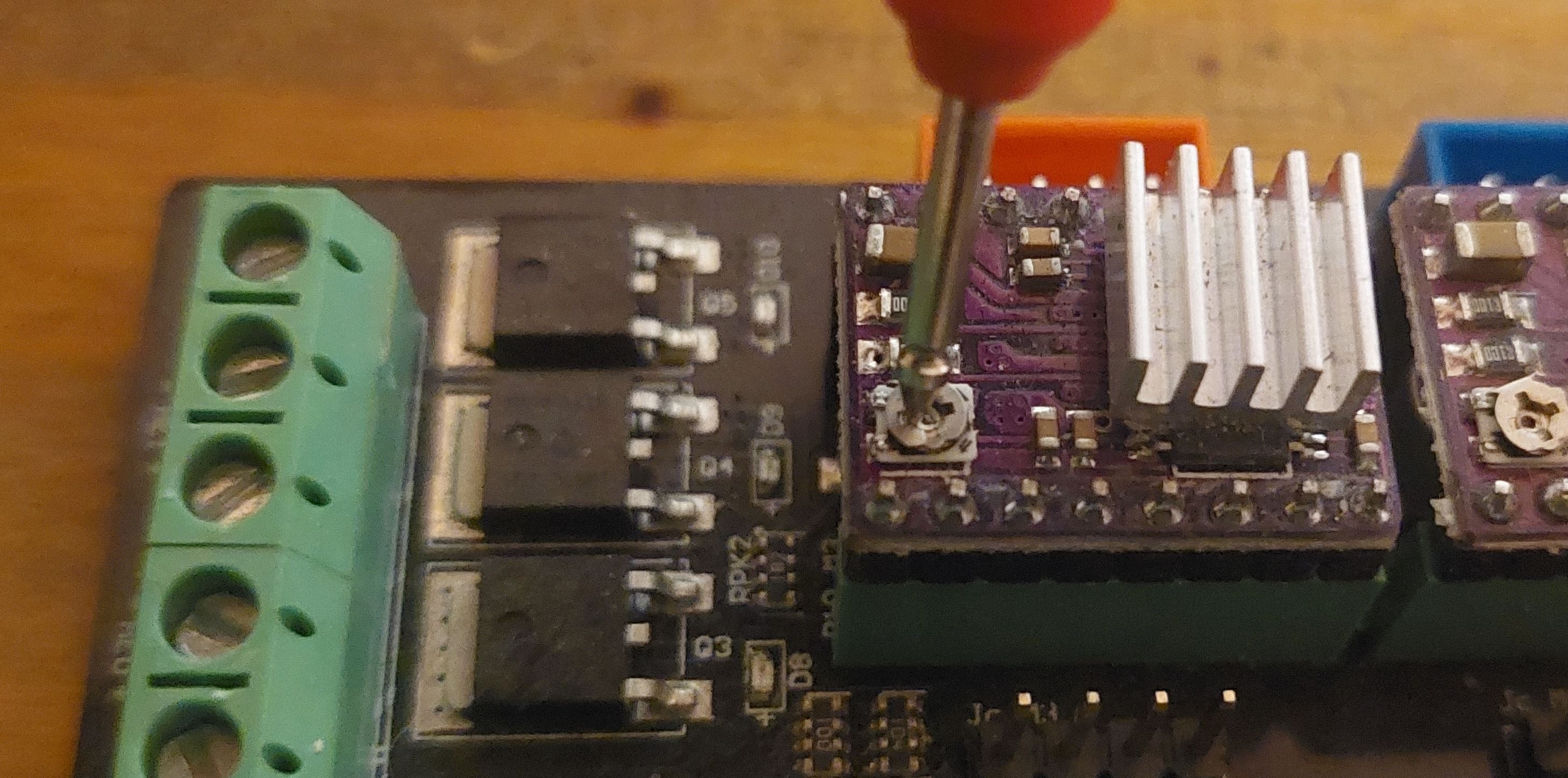
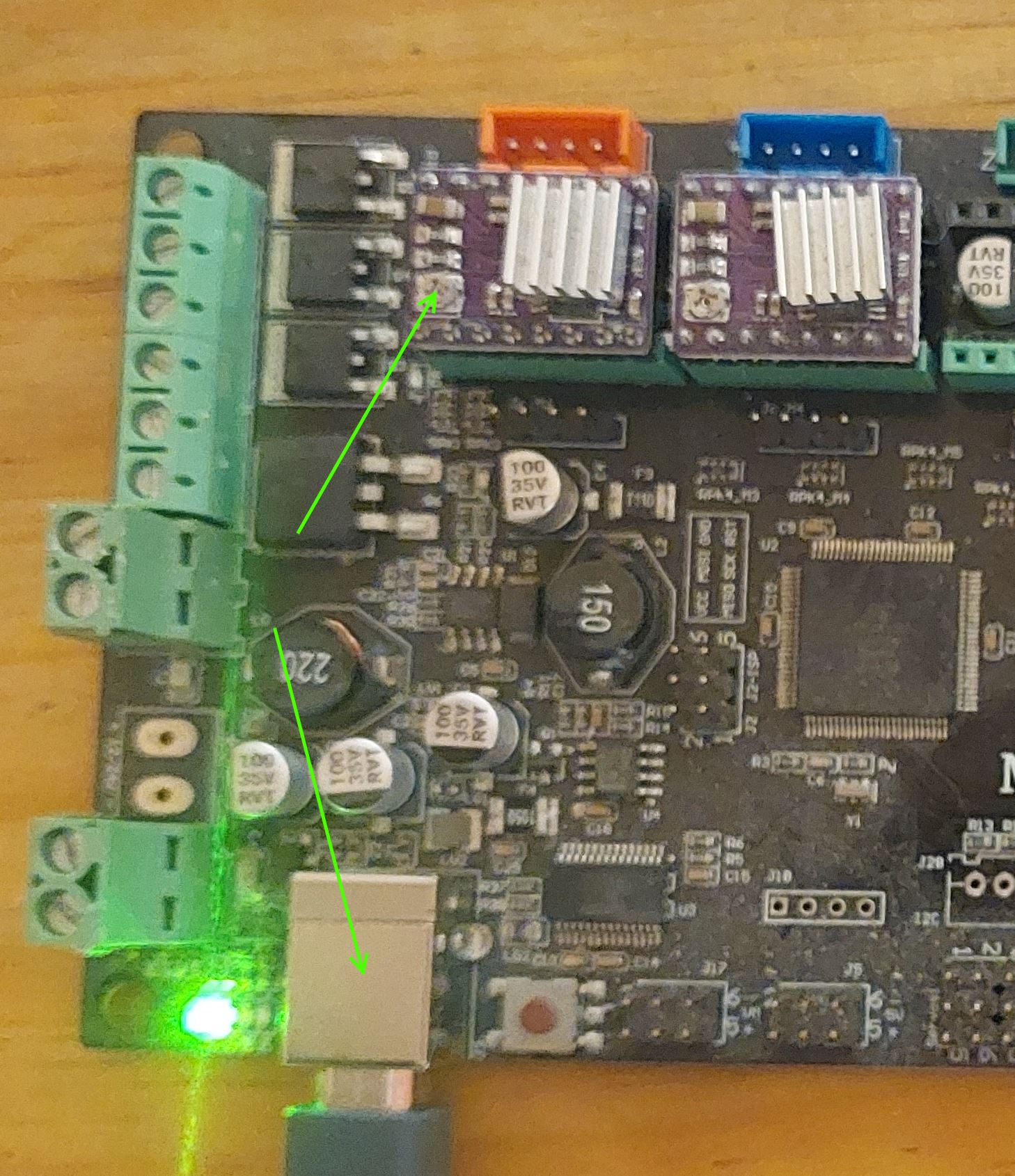
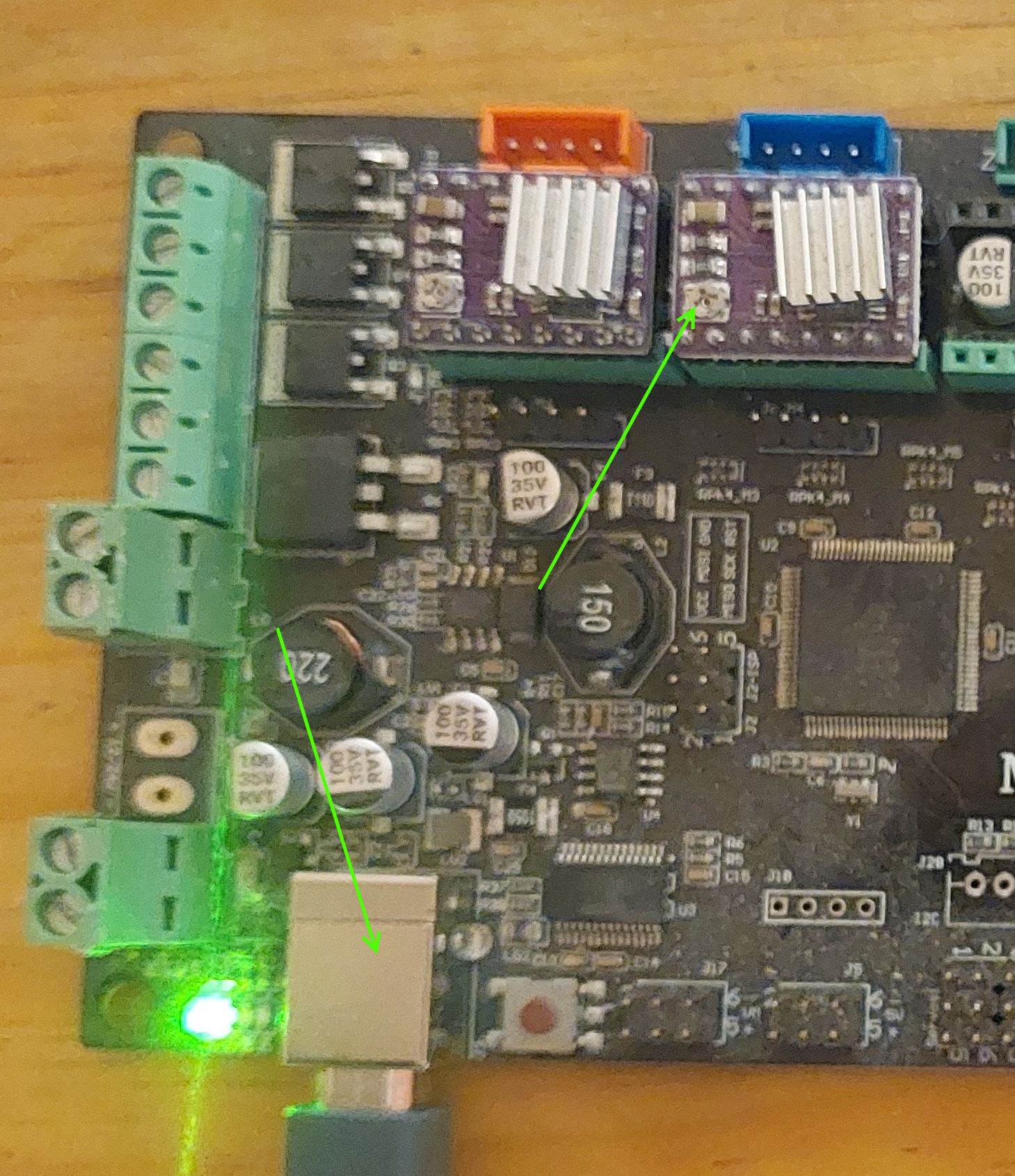

The measured voltage should be close to 0.6 V for DRV8825 drivers, ifthis is not the case, use a screwdriver to turn the potentiometer setting and redo the measurement.
Once the voltage measured on each driver is correct, you can move on
Wiring of limit switches
Wire the limit switches on the board.
The limit switch X (carriage) must be connected to the connector of left (red)
The Y limit switch (paper detection) must be plugged into the connectorleft (blue)
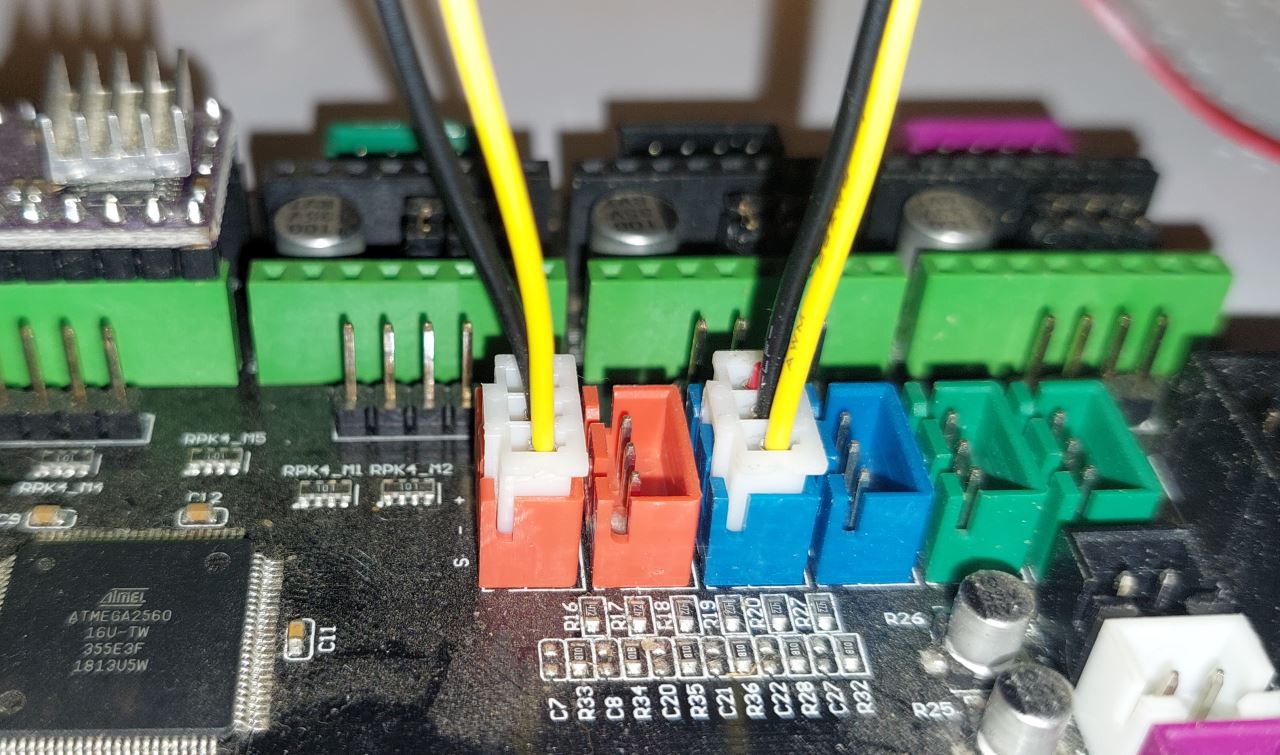
Connecting the motors to the board
Connect the motors to the control board with cables.
Motor X (carriage) must be plugged into the left connector(red)
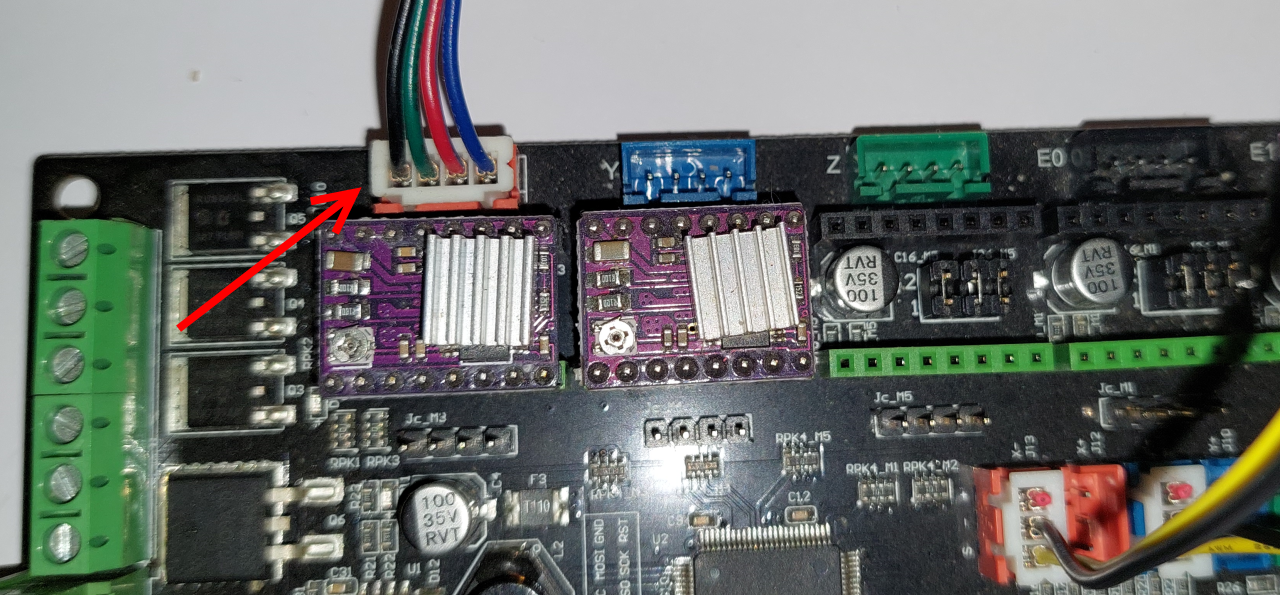
The Y motor (paper) must be plugged into the right connector (blue)
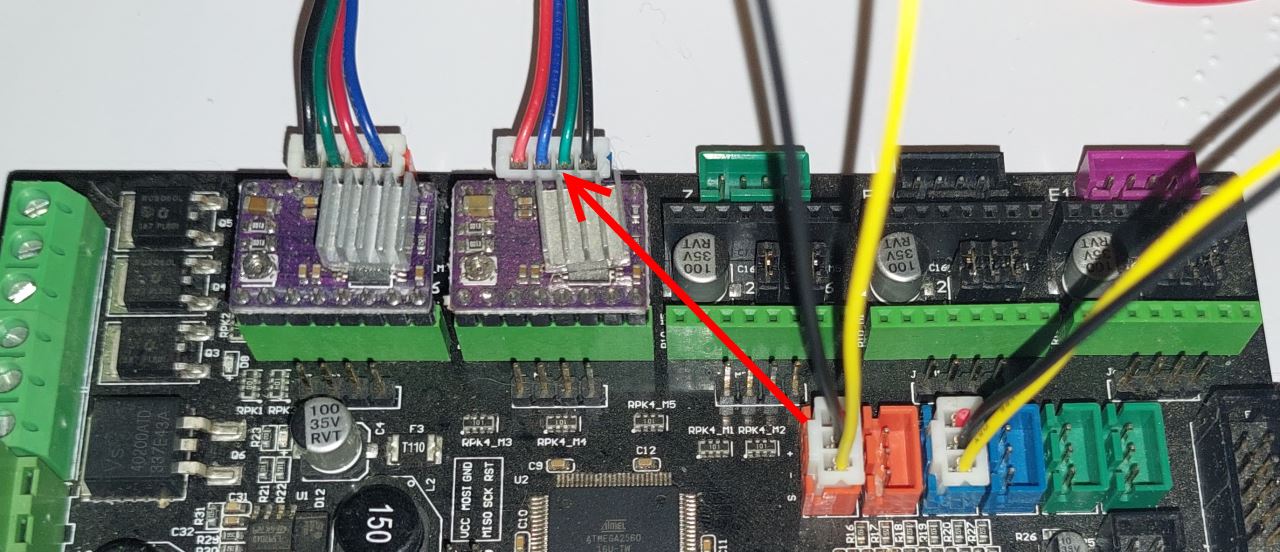
Wiring of the electromagnet
place the 2 wires of the electromagnet and the freewheel diode. Caution in the sense of the diode (white line).

Montage de la carte électronique MKS GEN-L V2.1
Equipment:
Carte MKS GEN L V2.1
4 spacer M3-12
4 medium M3 washers
8 screw M3-8
Assemble the 4 spacers on the card.
Note
To be able to carry out the final adjustments easily, we recommend wiring the card outside the chassis. Once the embosser is functional, you can mount the board in the embosser.
Cablage de la carte électronique MKS GEN-L V2.1
General diagram:
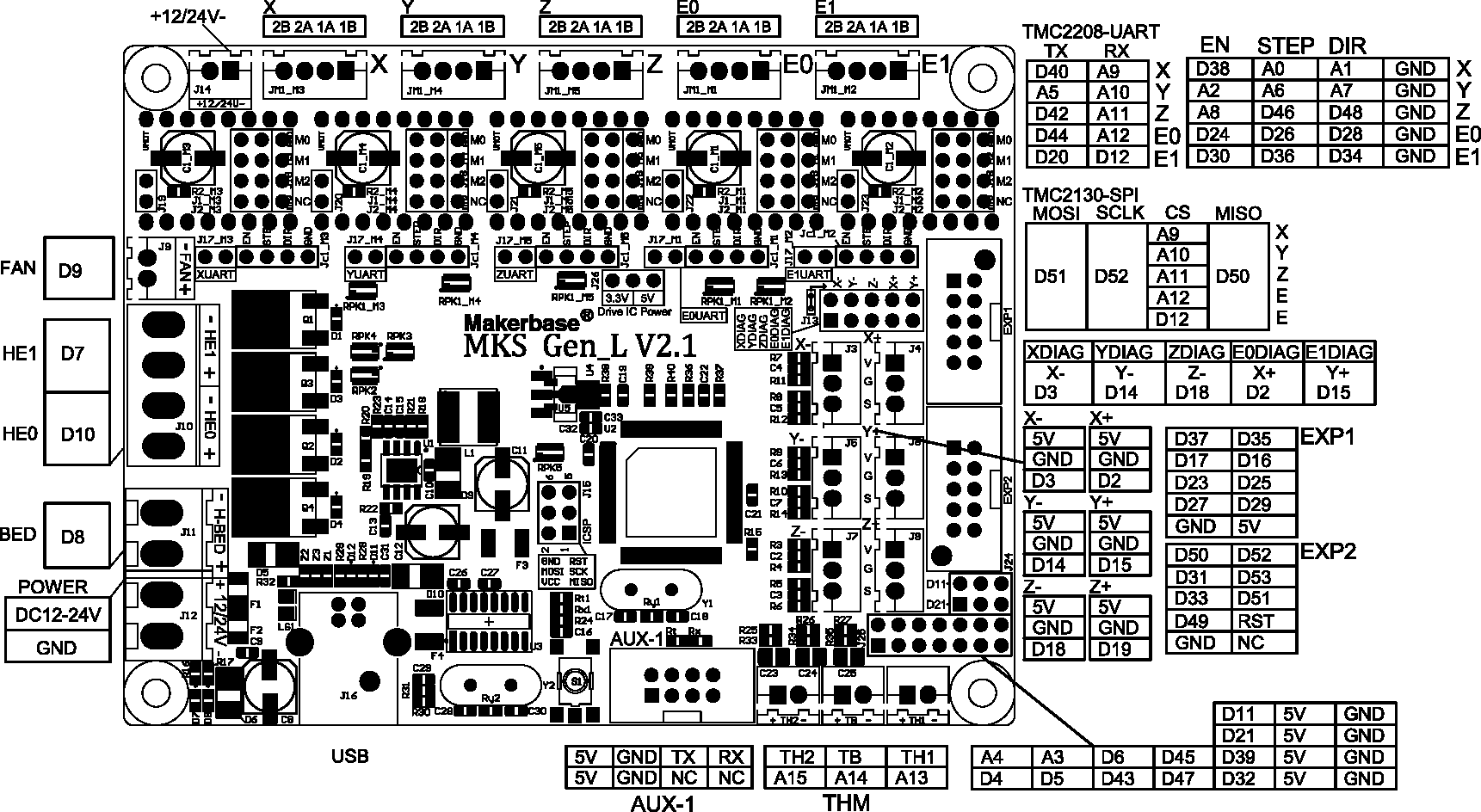
Photo of the assembled board
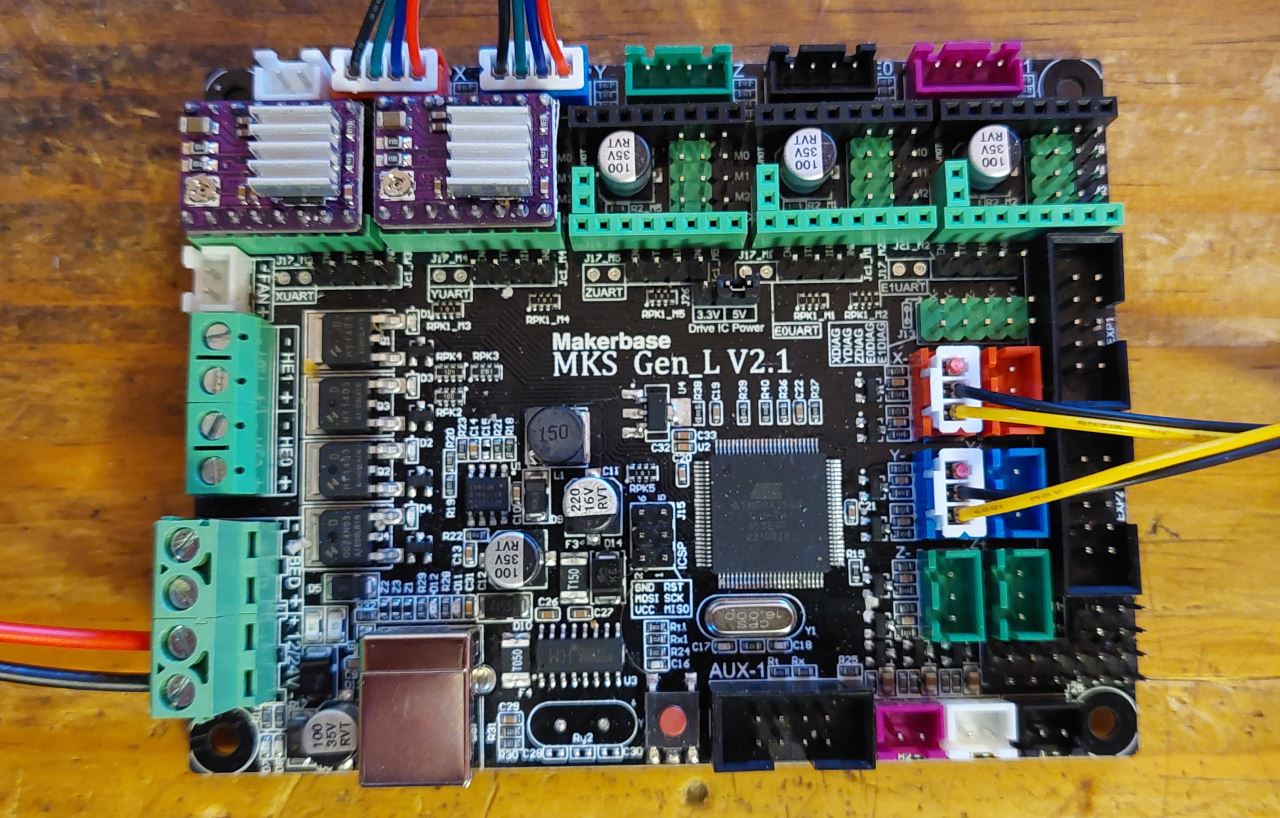
Pose des drivers sur la carte électronique MKS GEN-L V2.1
Equipment:
Carte MKS GEN-L V2.1
2 DRV8825 drivers
6 jumpers
If the card is not supplied already equipped with jumpers, put in the places of the drivers of engines X and Y.

Push the drivers into X and Y slots.
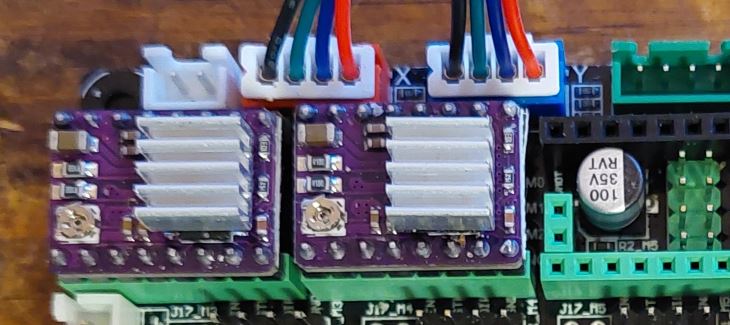
12V power wiring
placer les 2 fils de provenant de la prise POWER_plate dans le bornier de la carte MKS GEN-L
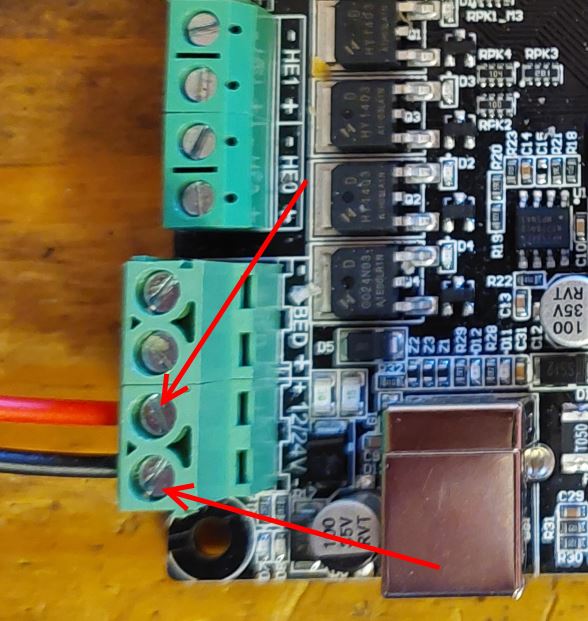
Adjusting motor drivers
Note
This step must IMPERATIVELY be carried out before wiringengines.
Check that you can connect the 12V power supply to the board (a last check to avoid sparks is better :-) )
Connect the 12 V power supply to the board.
for each driver, measure, with a multimeter, the voltage between the adjustment potentiometer and mass of the USB connection.




La tension mesurée doit être proche de 0,6 ~ 0,7 V pour des drivers DRV8825, si ce n’est pas le cas, utiliser un tournevis pour tourner le potentiomêtre de réglage et refaite la mesure.
Once the voltage measured on each driver is correct, you can move on
Wiring of limit switches
Cabler les fins de courses sur la carte MKS GEN-L.
Le fin de course X (chariot) doit être branché sur le connecteur de gauche en haut (rouge)
Le fin de course Y (détection papier) doit être branché sur le connecteur de gauche en bas (bleu)
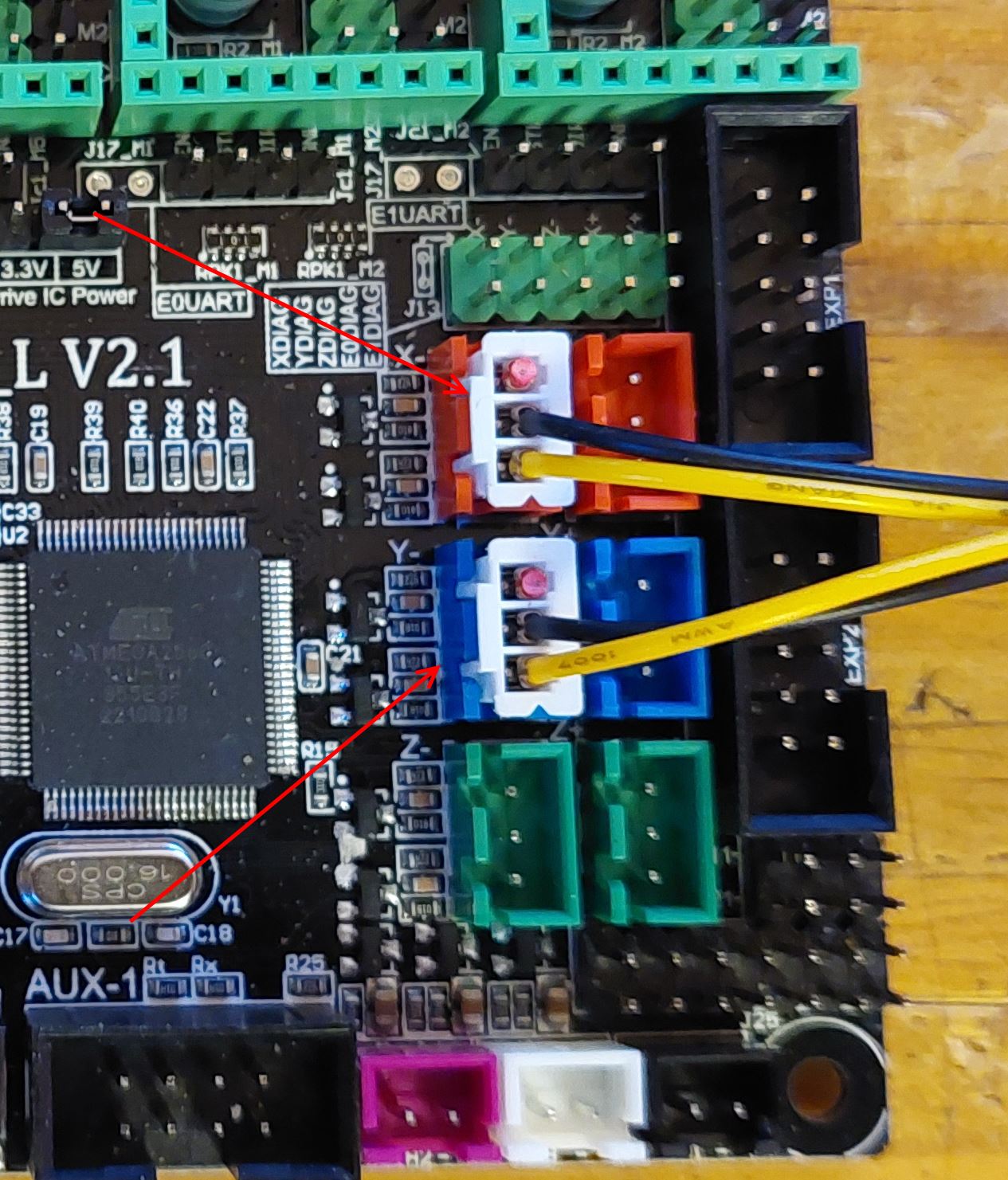
Raccordement des moteurs à la carte MKS GEN-L
Connect the motors to the control board with cables.
Motor X (carriage) must be plugged into the left connector(red)
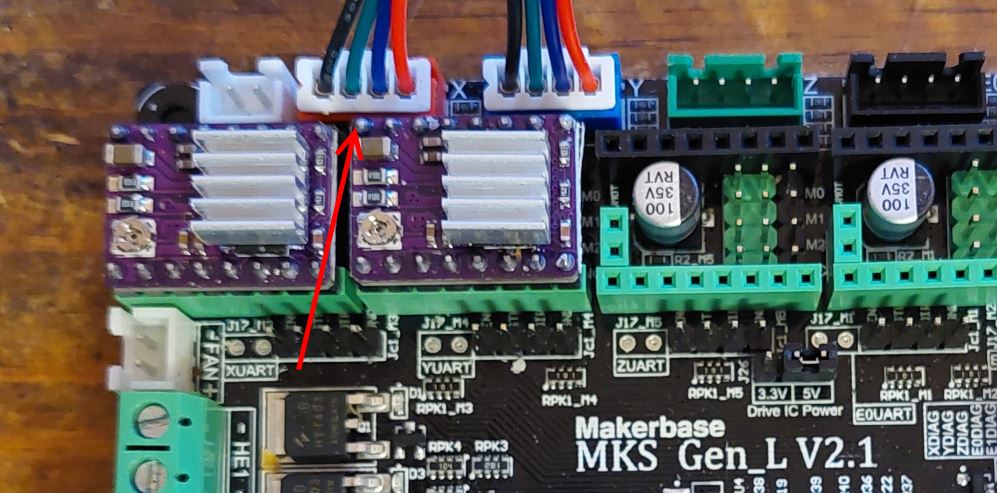
The Y motor (paper) must be plugged into the right connector (blue)
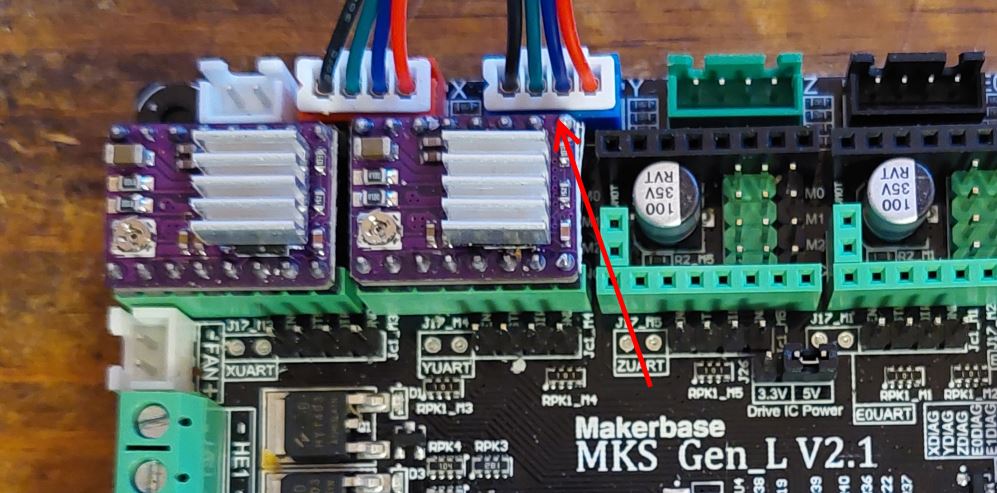
Câblage de l’électro-aimant MKS GEN-L 2.1
placer les 2 fils de l’electroaimant sur le connecteur HBED de la carte MKS GEN-L 2.1.
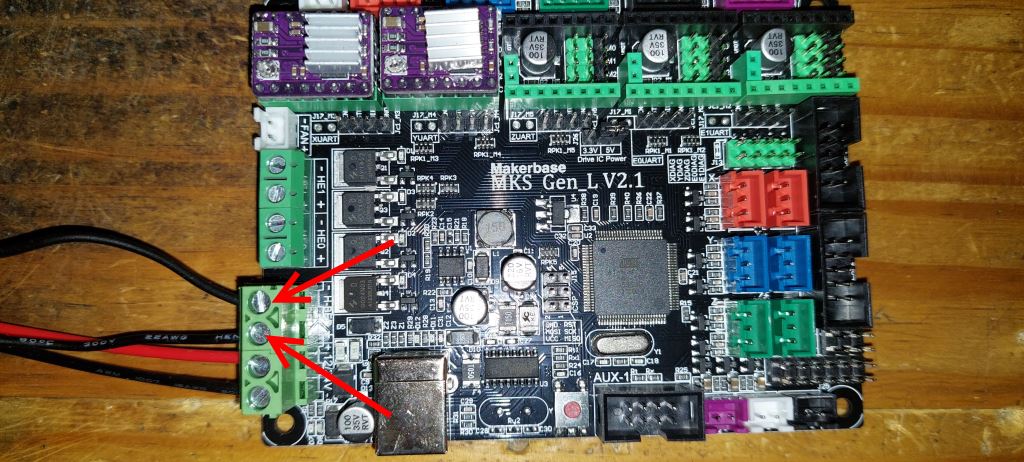
Horizontal alignment of the top trolley
Loosen the pulley on the vertical axis to release the upper carriage.
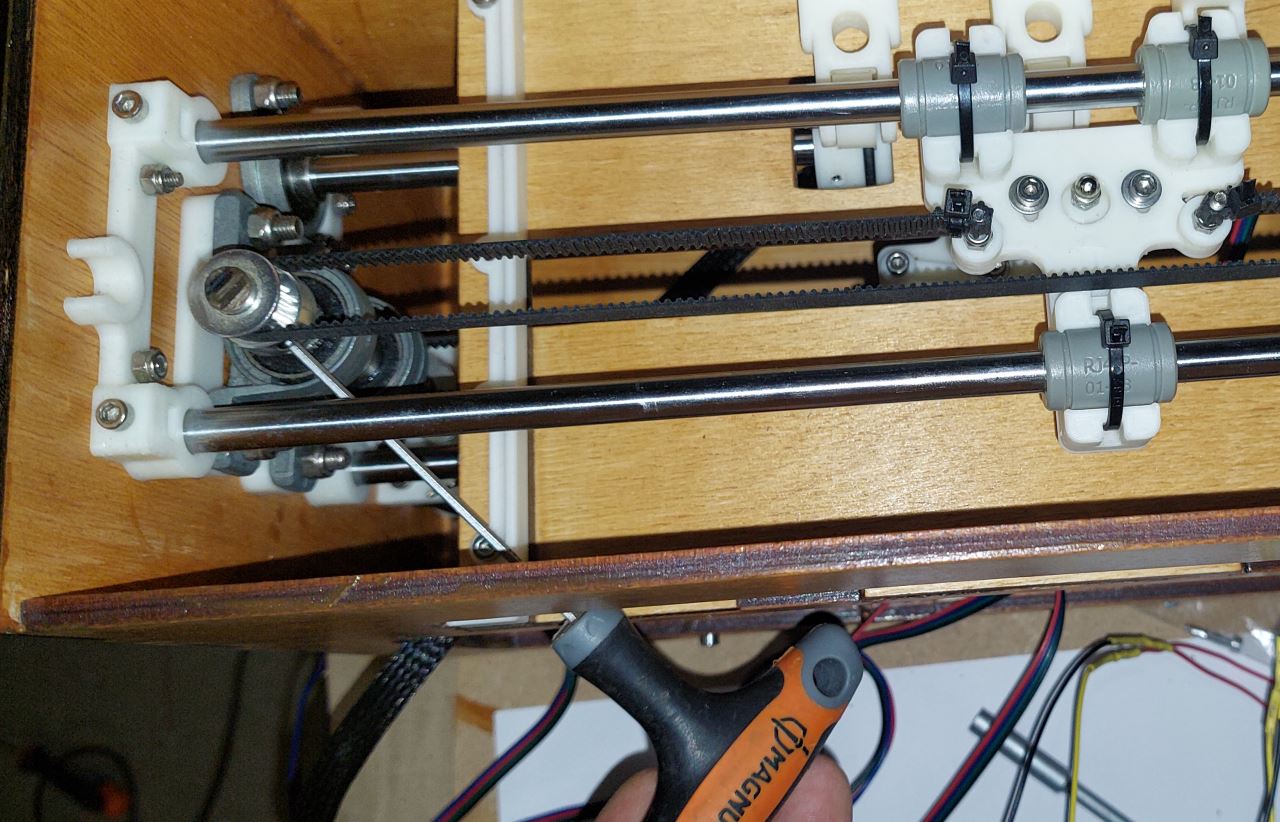
Vertical alignment of the two trolley
Move upper carriage to align footprint (FEMALE_shape)with the top of the Braille stylus.
Use the fixing screws of the FEMALE_shape to align the imprint with the top of the punch.
When the alignment is satisfactory, tighten the fixing screws of the FEMALE_shape.
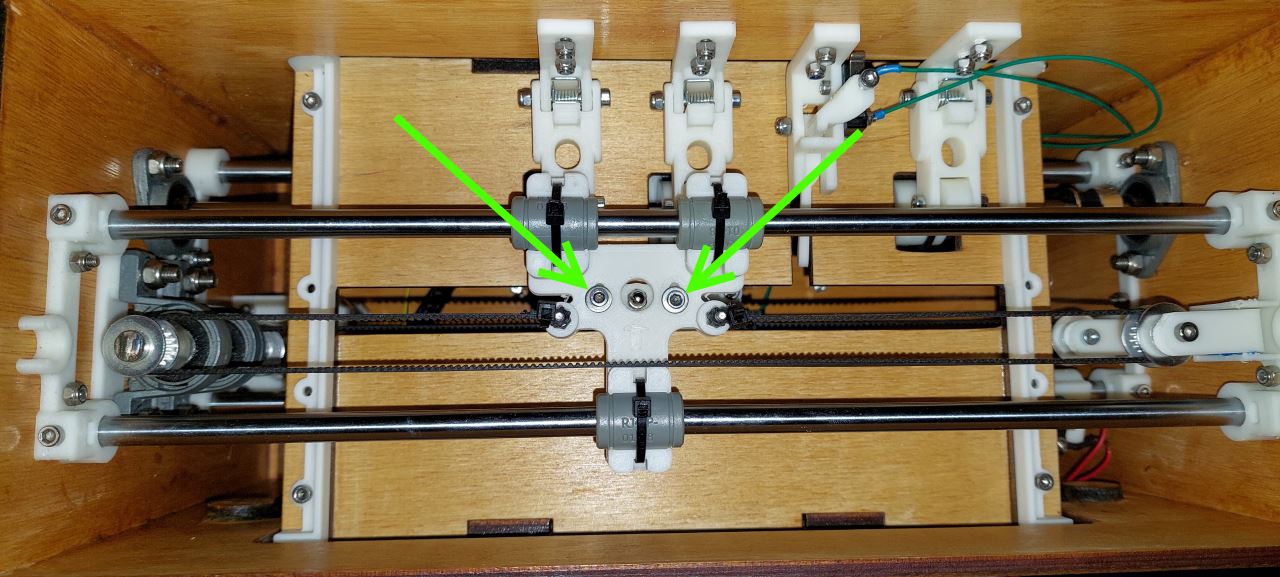

Vertical alignment of the two carriages
Loosen the pulley of the upper carriage on the vertical axis to free the top carriage.

Observing from the rear of the machine, raise the Braille stylus by pressing with the finger under the electromagnet.
Move upper carriage to align footprint (FEMALE_shape)with the top of the Braille stylus.
Logically the Braille stylus must enter slightly into the grub screw of the FEMALE_shape.
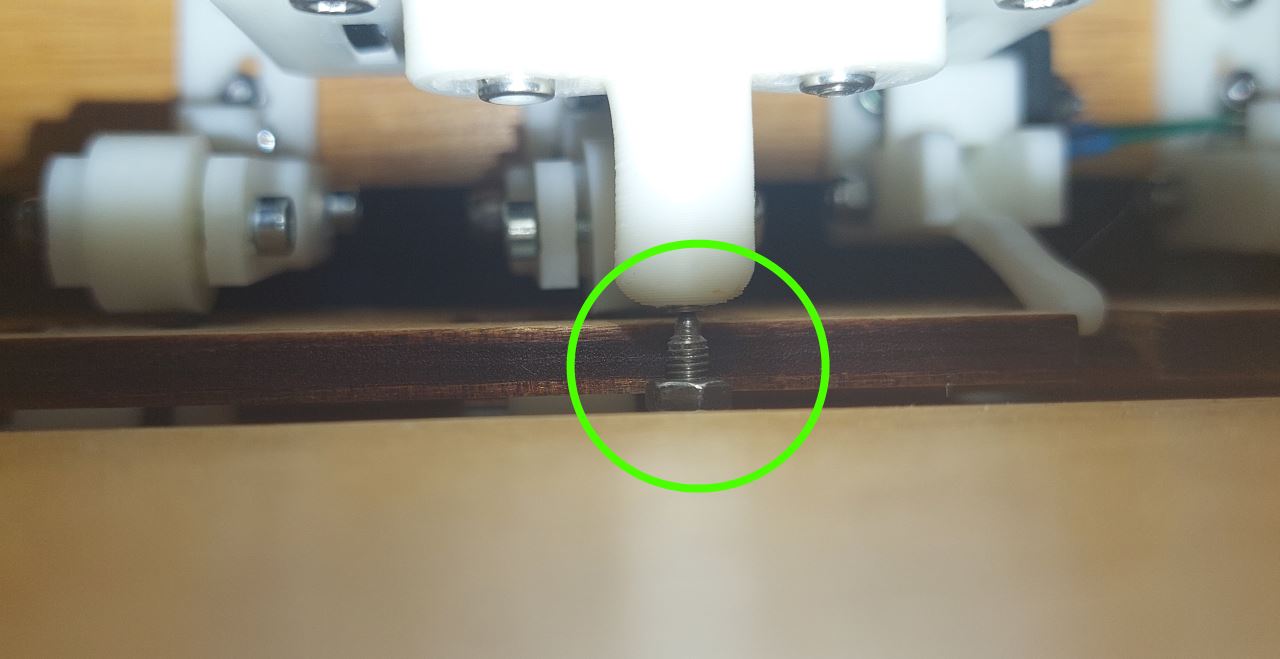
When the alignment is satisfactory, lock the upper pulley onto the vertical axis.

Carriage Adjustment and paper limit sensors (X and Y)
Adjust the position of the limit switch X. The sensor should activate before the low carriage belt attachment meets the vertical axis pulley.
With a sheet of paper, adjust the Y limit switch so that the sensor is activated when a sheet is present under the lever of the sensor. And deactivates if the sheet of paper has not yet moved the lever.

Adjusting the Braille point depth
Depending on the material you will use (paper, plastic, aluminum bobbin), you will need to adjust the height of the borrows of the high carriage using the blind nut
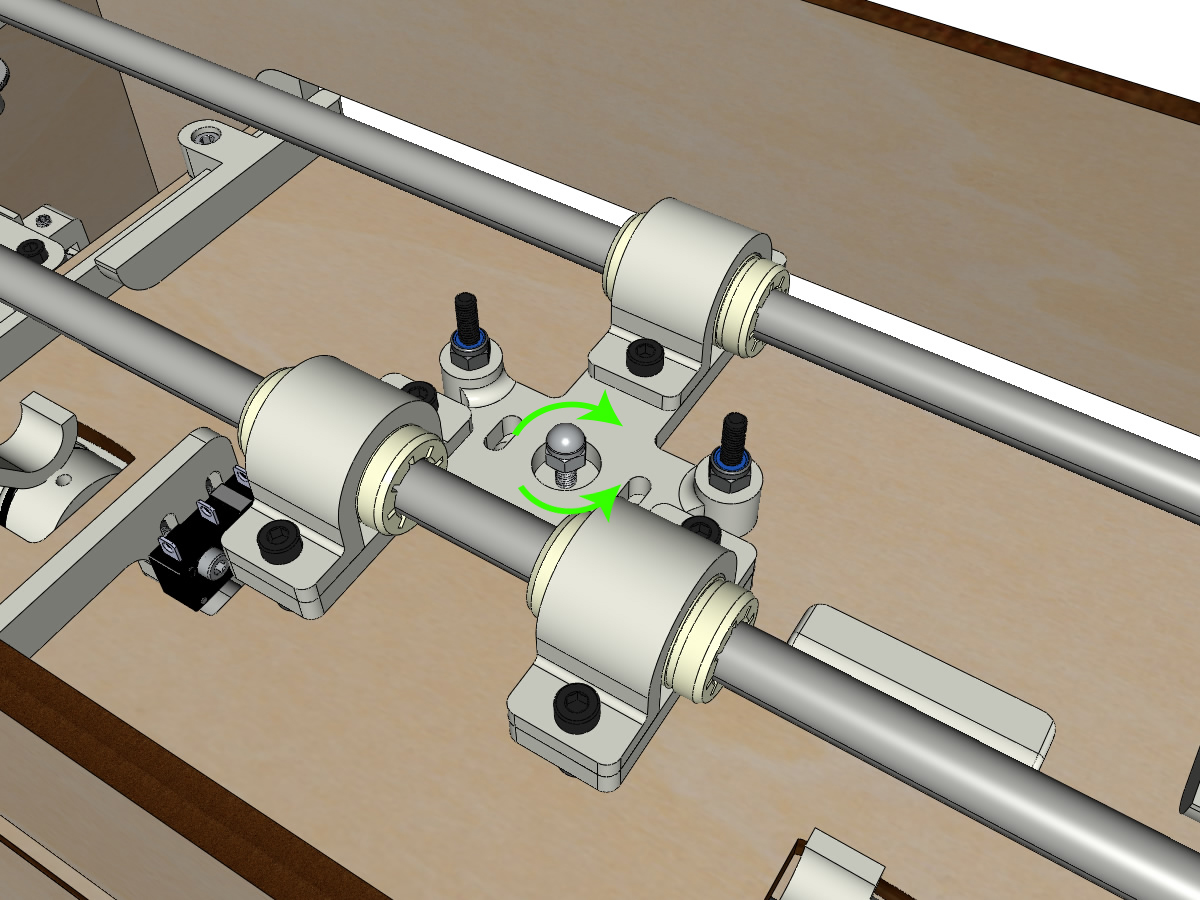
Fermeture de la porte arriere
Pièce(s) imprimée(s) en 3D : 2 DOORLOCKER.stl
4 M3-16 screws
Tarauder les trous de fixation des pieces DOORLOCKER
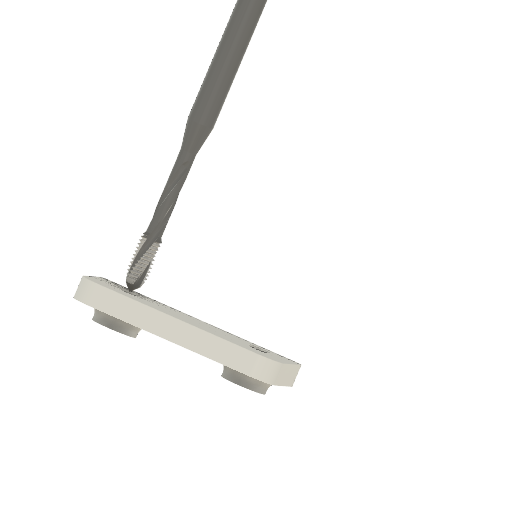
Attacher les DOORLOCKER sur la porte arriere. Laisser du jeu pour que les pieces DOORLOCKER puissent coulisser.
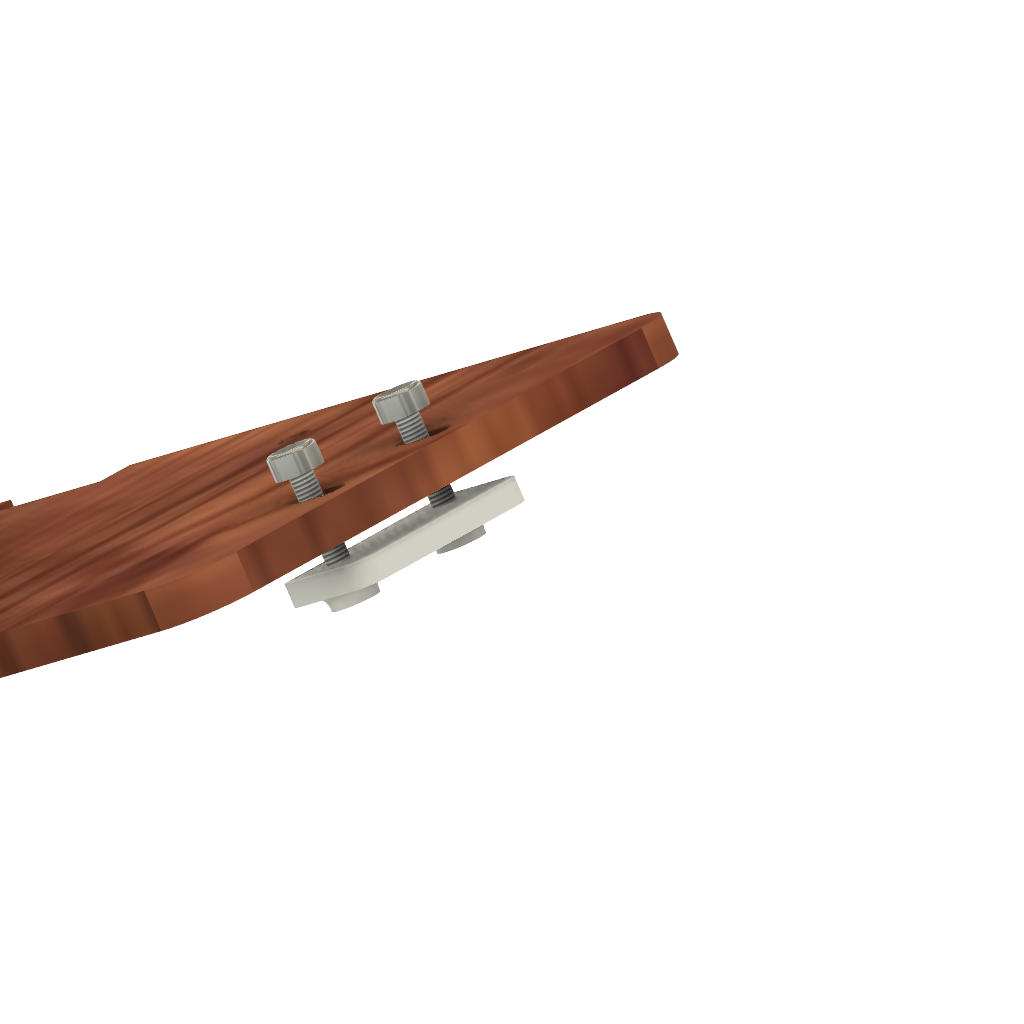
Positionner la porte assemblée sur BrailleRAP.
Faire glisser les pieces DOORLOCKER sur les trous de fixation pour que la porte soit bloquée.
Serrer (doucement) les vis de fixation.

